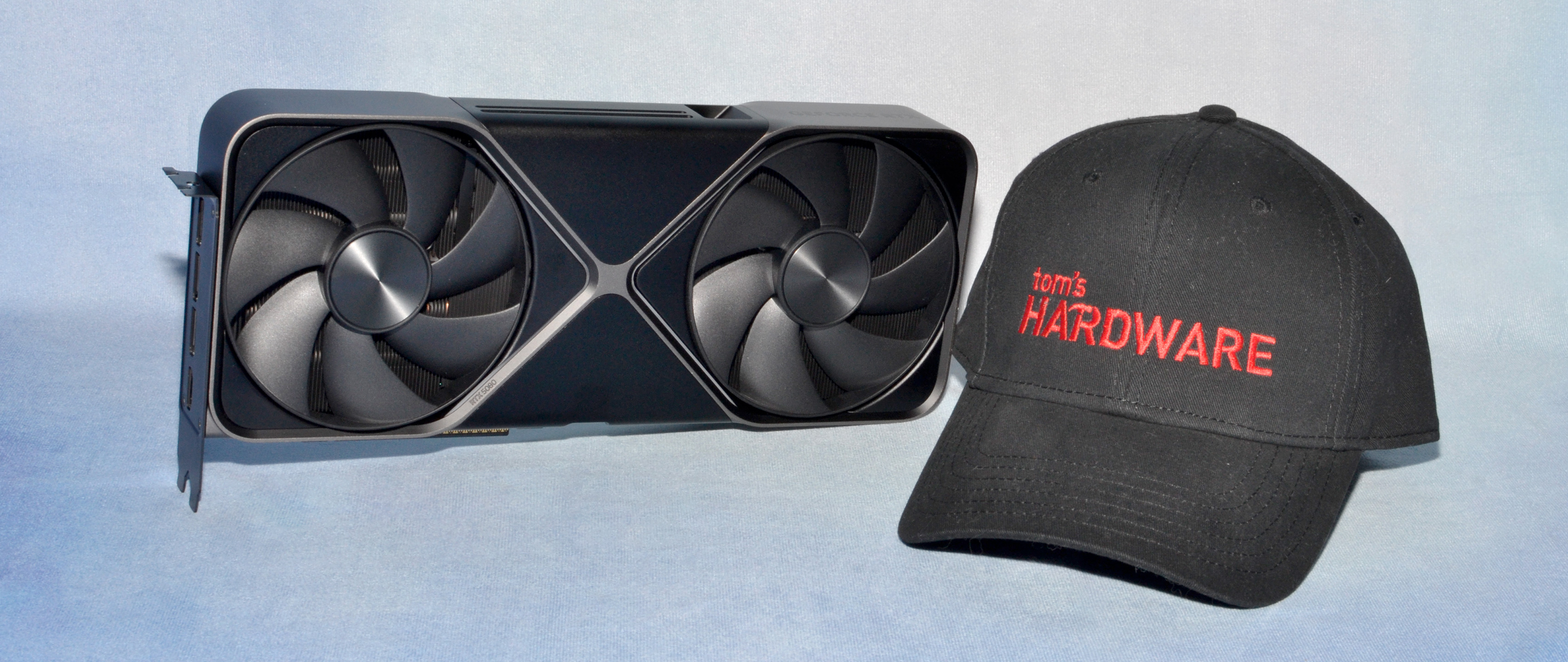Why you can trust Tom's Hardware
Nvidia RTX 5080 Rasterization Gaming Performance
We're breaking down gaming performance into two categories: Traditional rasterization games, and ray tracing games. Each game has four test settings, but we're mostly interested in the 4K ultra results on the 5080. 1440p ultra is also important and represents a stand-in for DLSS Quality mode at 4K, while 1080p ultra/medium is mostly just for reference (and to check for any odd behavior). We also have the overall performance geomean, the rasterization geomean, and the ray tracing geomean.
We'll start with the rasterization suite of 16 games, as that's arguably still the most useful measurement of gaming performance. Extreme GPUs like the 5080 and 5090 can be used with full RT enabled, even at 4K, but we're still working on additional tests for that subset of performance (on multiple GPUs for comparison purposes).
We'll have limited to no commentary on most of the individual game charts, as the numbers mostly speak for themselves. We'll have more to say on the Geomean charts as they provide the big picture.
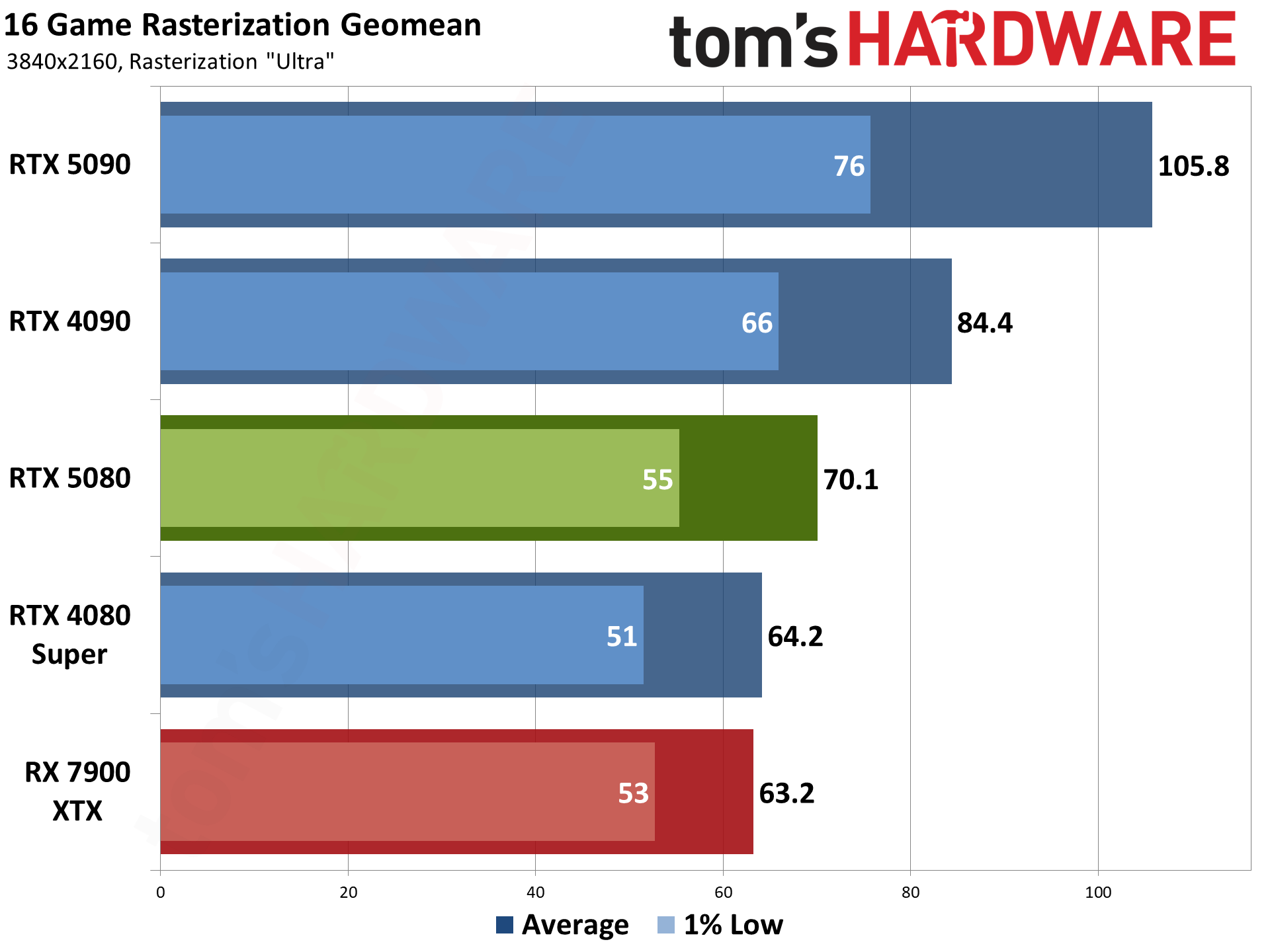
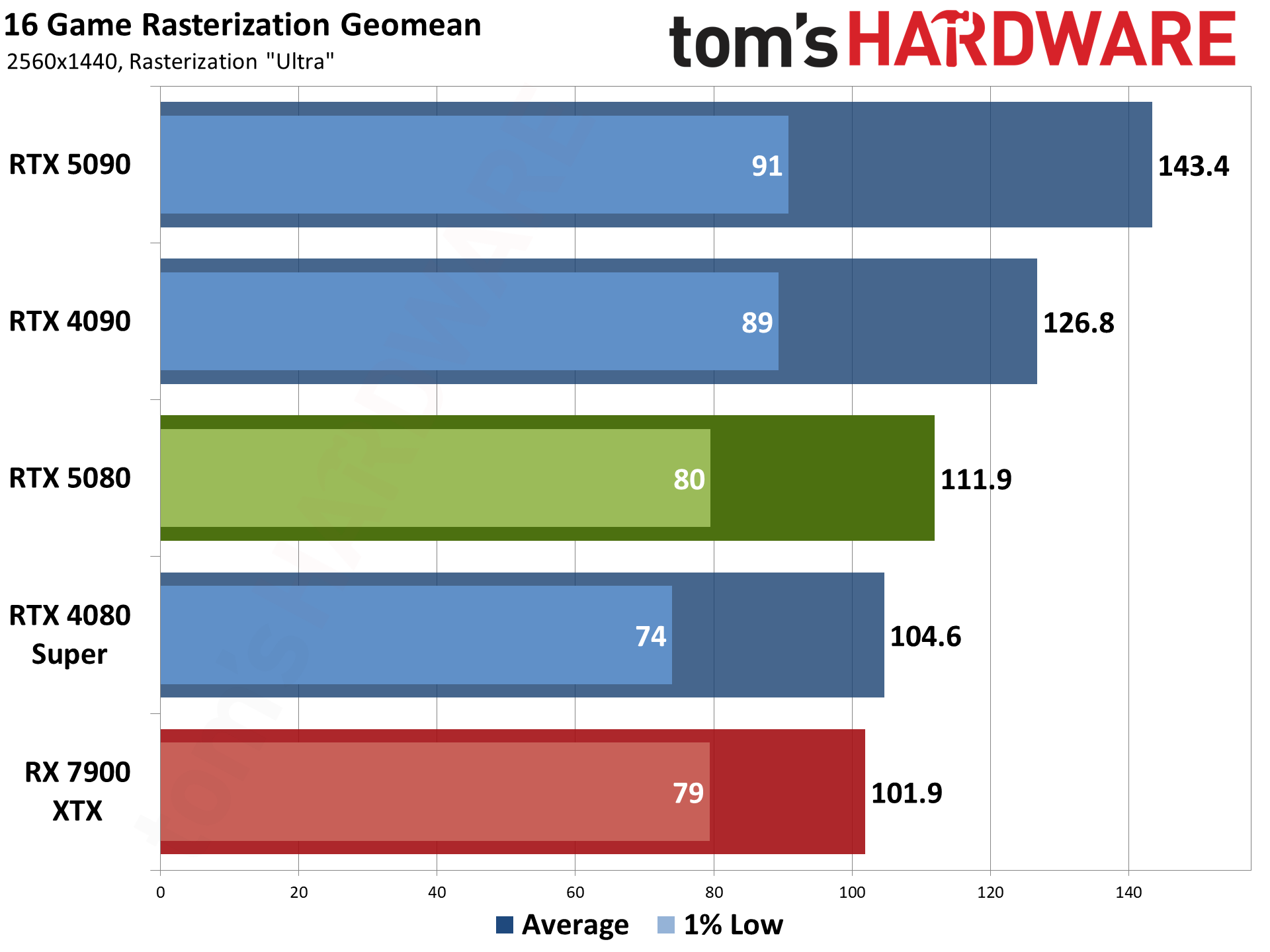
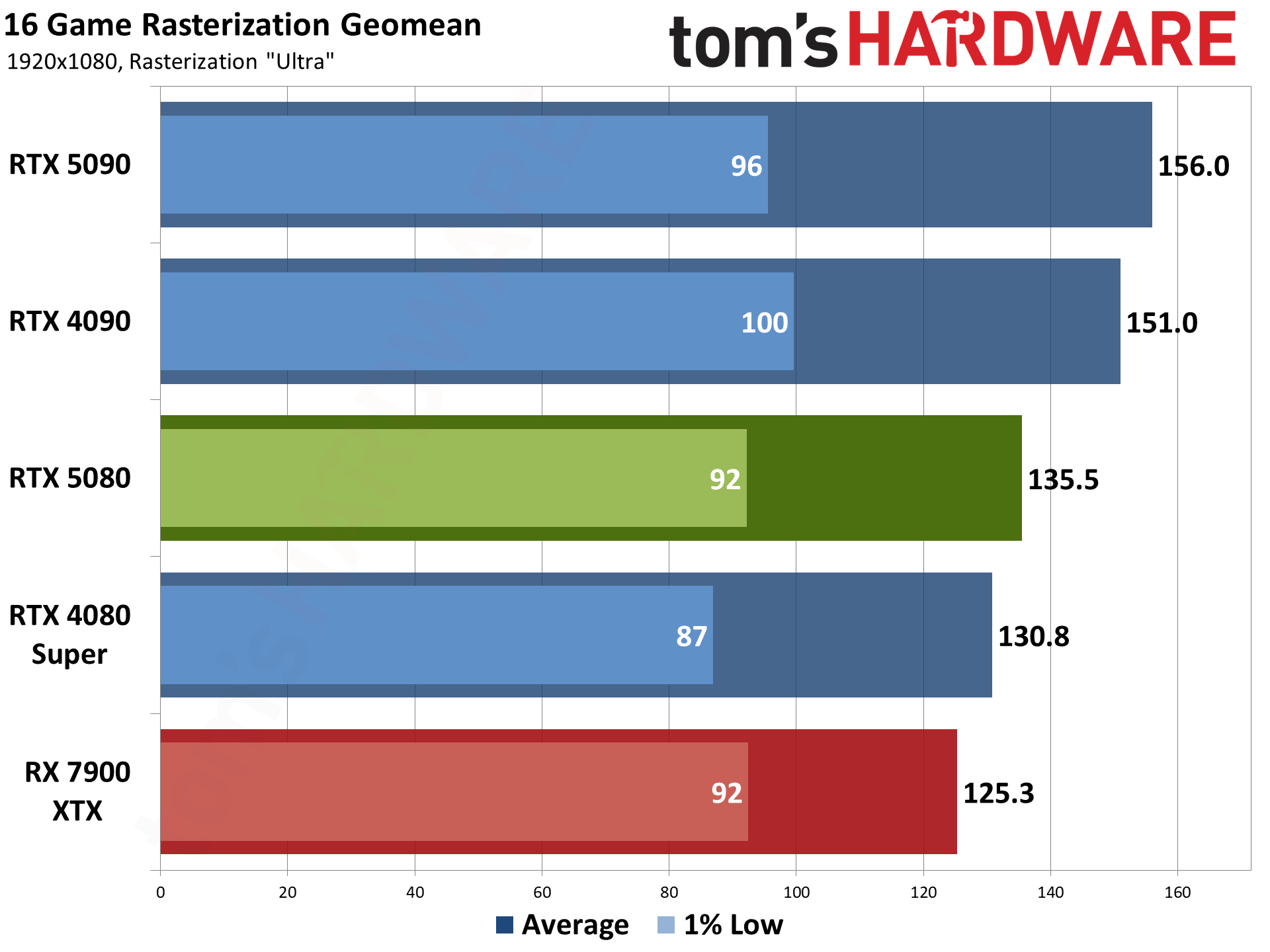
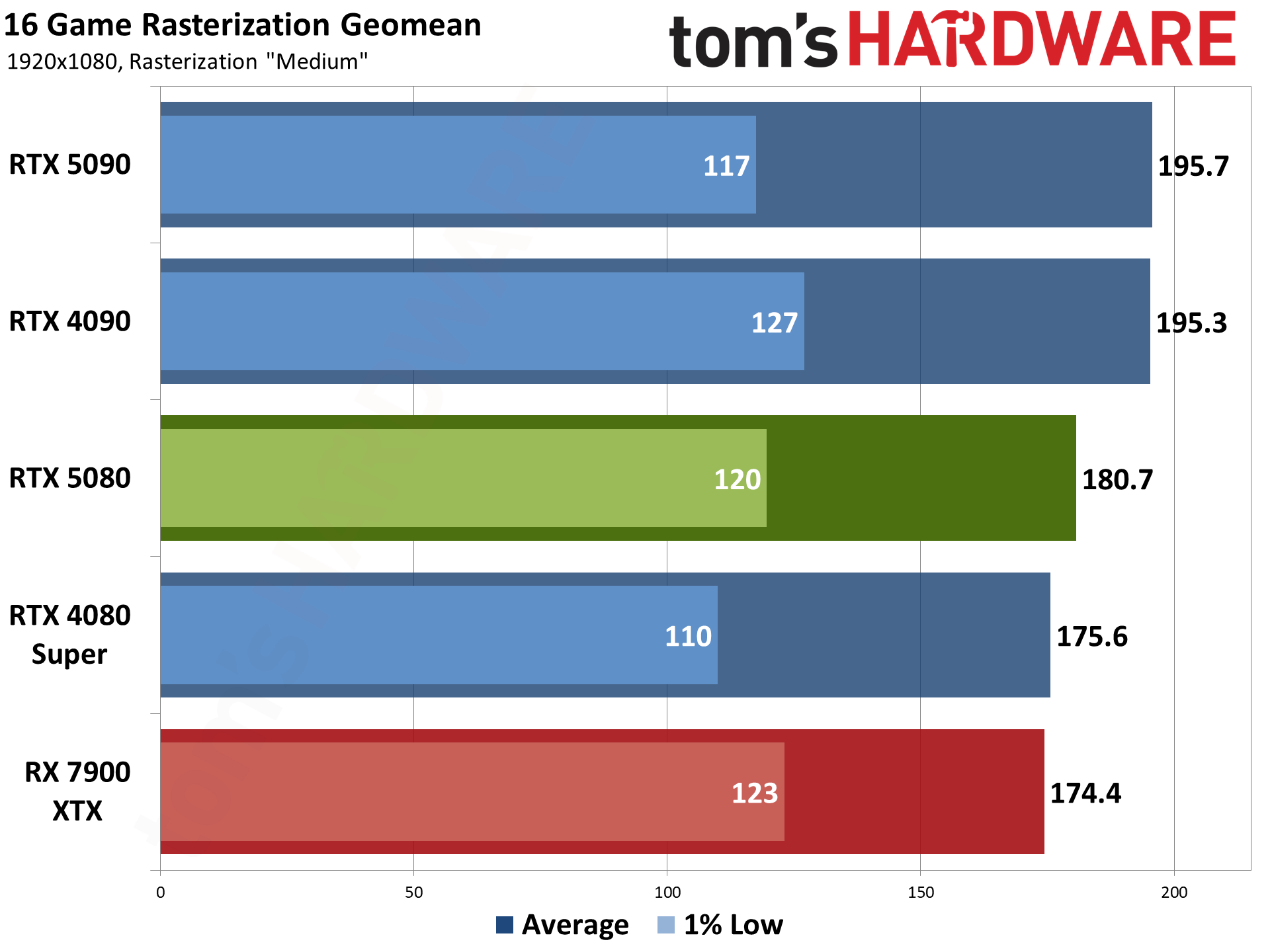
Right from the start, the 4K ultra rasterization results give us a reasonable idea of what to expect. The RTX 5080 outperforms the RTX 4080 Super by 9% — and by extension, we'd expect it to be about 12% faster than the vanilla RTX 4080 (which we haven't retested yet). That's... not a lot. In fact, it's a pretty minimal generational improvement.
The 1440p ultra and 1080p ultra/medium results are even worse. At those settings, the 5080 beats the 4080 Super by 7%, 4%, and 3%, respectively. There are a few games where it's actually slower, though we'd chalk those up to immature Blackwell drivers rather than the GPU itself. CPU bottlenecks are definitely a factor at 1080p as well.
The 5080 has improved ray tracing hardware, enhanced AI capabilities, and multi-frame generation technology that the previous generation lacks. However, a lot of games are still primarily rasterization — and there's a sufficiently large number of games where the RT effects feel tacked on and don't really improve visual fidelity while causing frequent stutters that we continue to question the emphasis on ray tracing in games. Until it looks significantly better than rasterization approximations, we think many gamers will prefer the higher performance of rasterization over ray tracing.
Let's also point out the MFG elephant in the corner. None of our tests on this page use or even support MFG right now, at least not natively. Also, most games do not need framegen on a GPU like the RTX 5080. The slowest running games we tested, at 4K ultra, are Black Myth: Wukong (without full RT, obviously) and Final Fantasy XVI; both land around the 40 FPS mark at native 4K, and we'd enable quality mode upscaling as a first step.
Still, seven of the games are on the list to allow MFG through the Nvidia App override: Dragon Age: The Veilguard, God of War Ragnarok, Hogwarts Legacy, Microsoft Flight Simulator (2020 and 2024), Stalker 2, and Star Wars Outlaws. MFG would certainly boost "performance" in terms of unique frames delivered to the monitor, but we reiterate that the feel of games with any frame generation technique that we've tried is not the same as the feel of a game running at the same level of performance without framegen. An 80% boost to "FPS" with traditional framegen feels more like a 10~20 percent boost to performance. MFG4X feels like maybe another 10~20 percent on top of that.
The TLDR for the RTX 5080 in rasterization games is that it should be universally faster than the RTX 4080/4080 Super, but drivers appear to hold it back in a few games right now. But even where it is faster, the margins are relatively slim in most games. A Plague Tale: Requiem was the best showing, with 15–17 percent higher performance from the 5080 across all resolutions and settings. Space Marine 2 also showed an impressive 23% improvement at 4K, probably thanks to the 30% boost in memory bandwidth that GDDR7 provides. But without factoring in MFG and AI? The RTX 5080 doesn't offer too much extra right now compared to its 4080-class predecessors.
Below are the 16 rasterization game results, in alphabetical order, with short notes on the testing where something worth pointing out is present.

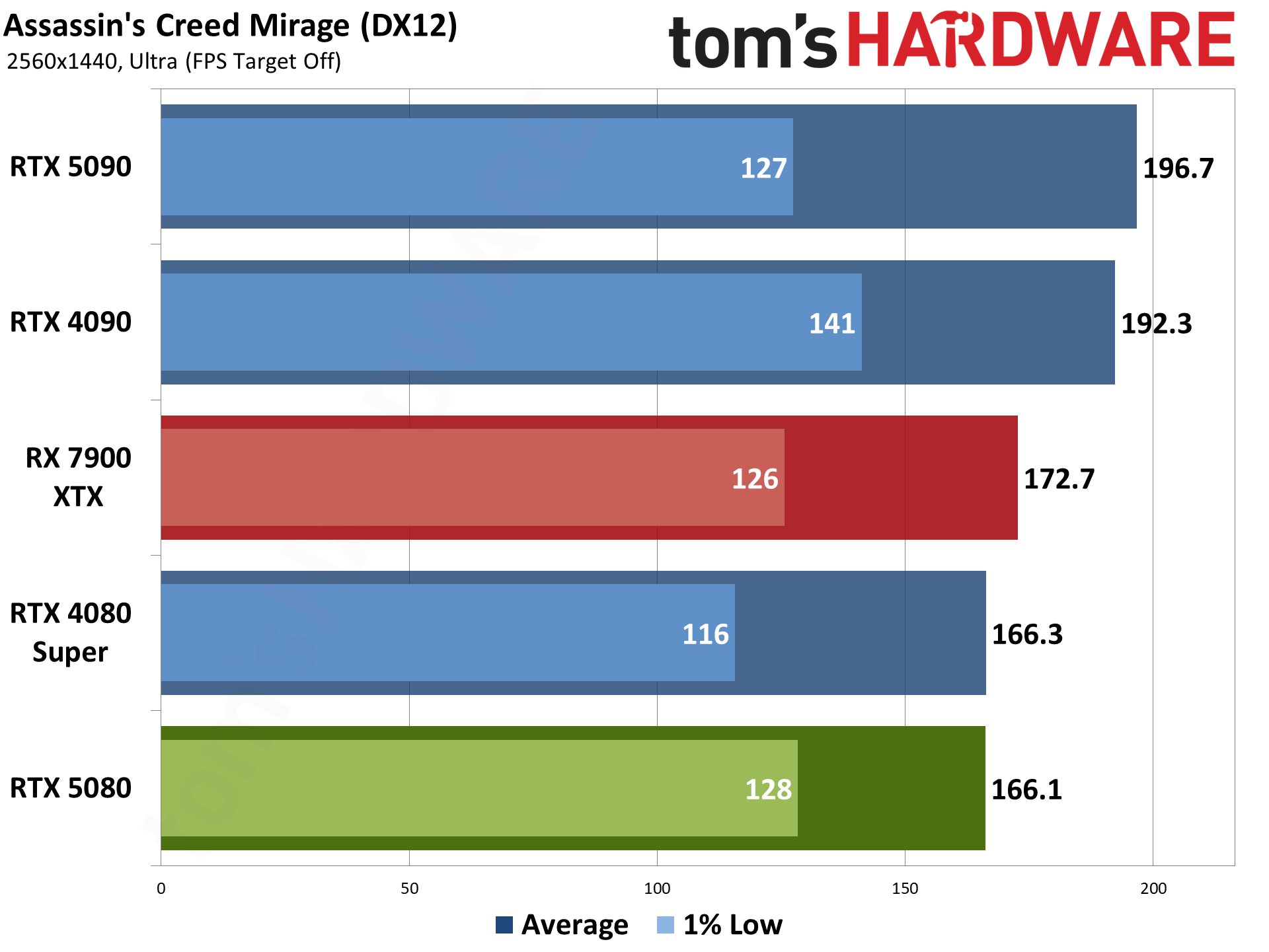
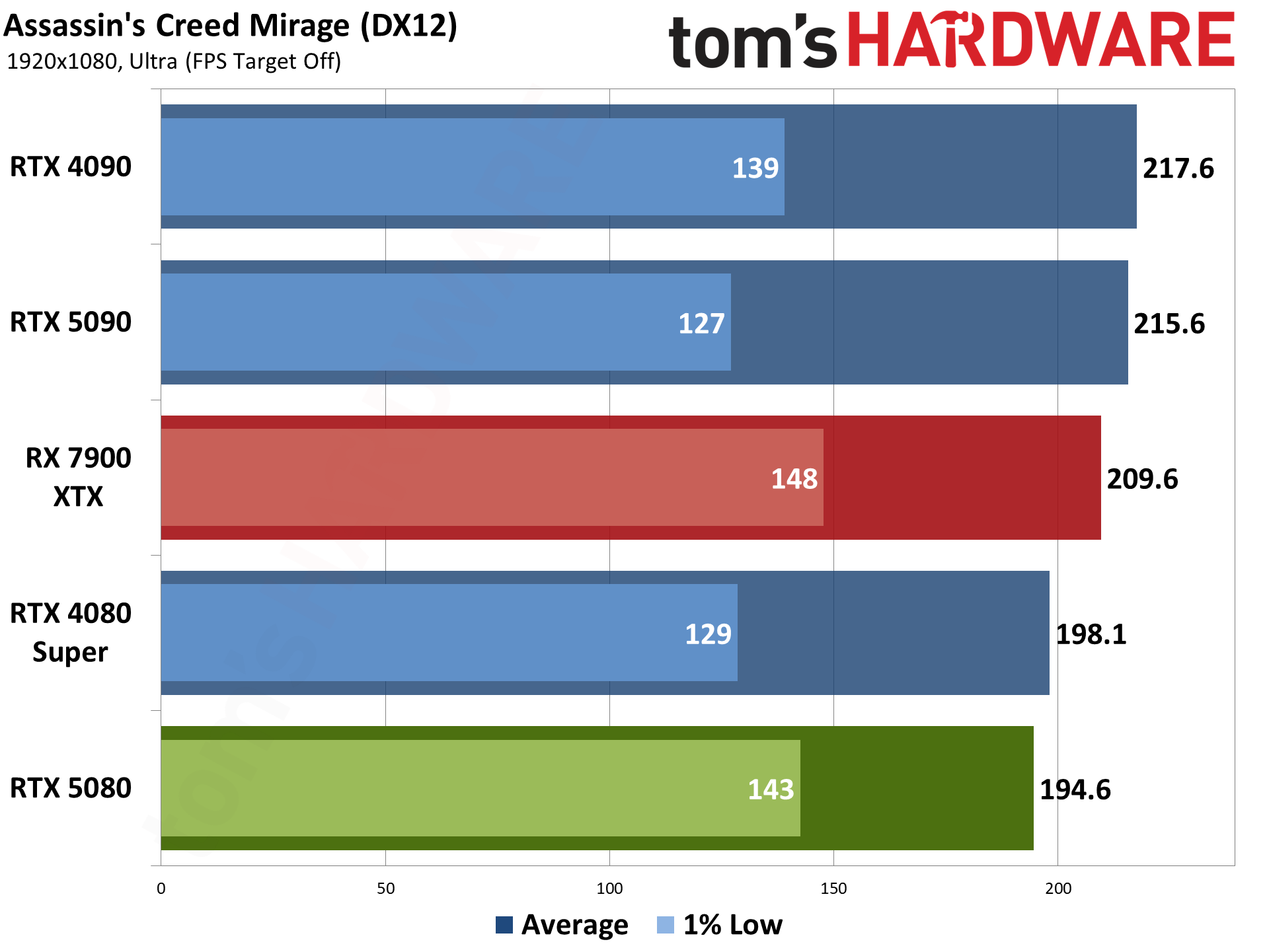
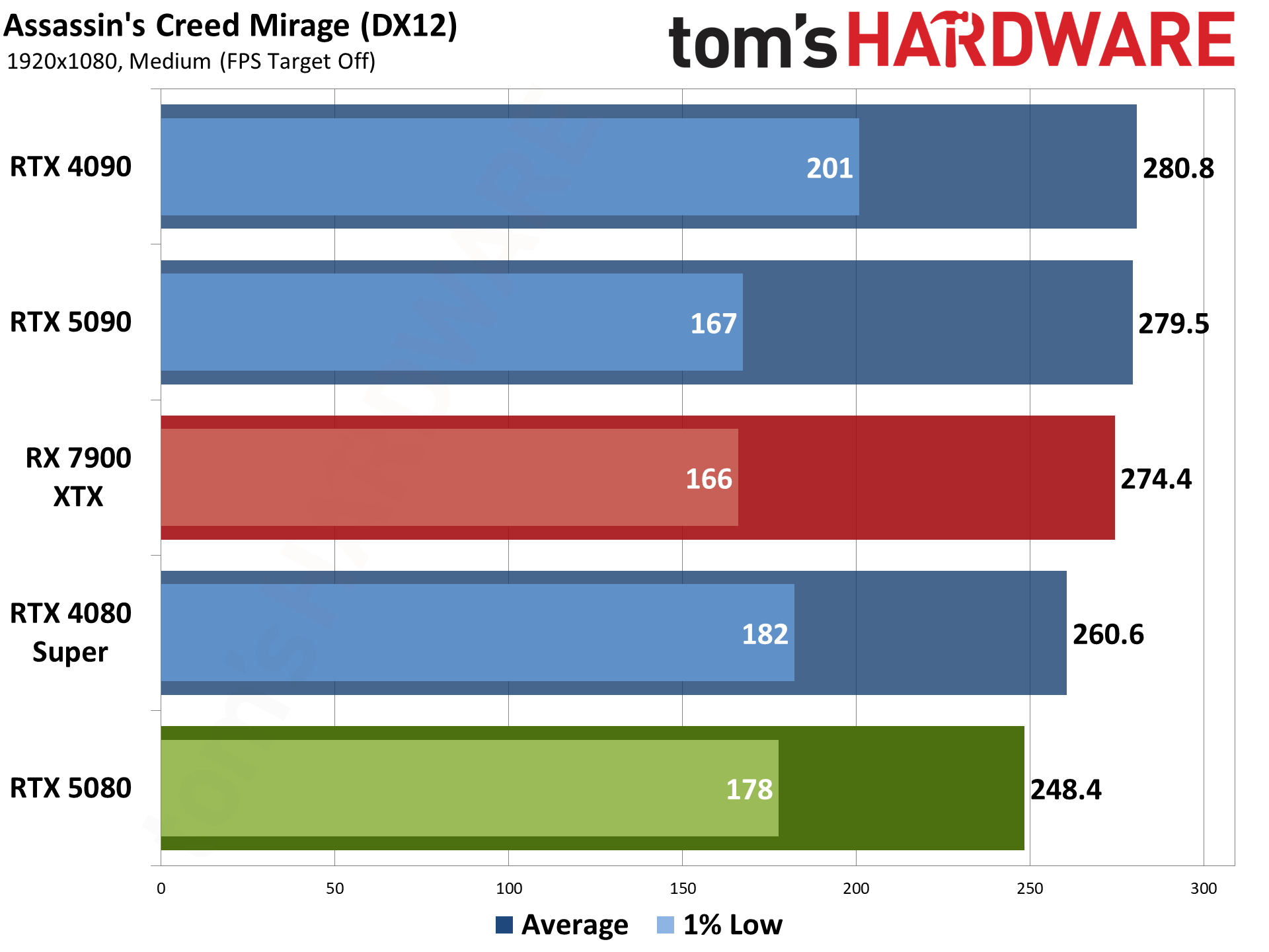
Assassin's Creed Mirage uses the Ubisoft Anvil engine and DirectX 12. It's also an AMD-promoted game, though these days, that doesn't necessarily mean it always runs better on AMD GPUs. It could be CPU optimizations for Ryzen, or more often, it just means a game has FSR2 or FSR3 support — FSR2 in this case. It also supports DLSS and XeSS upscaling.

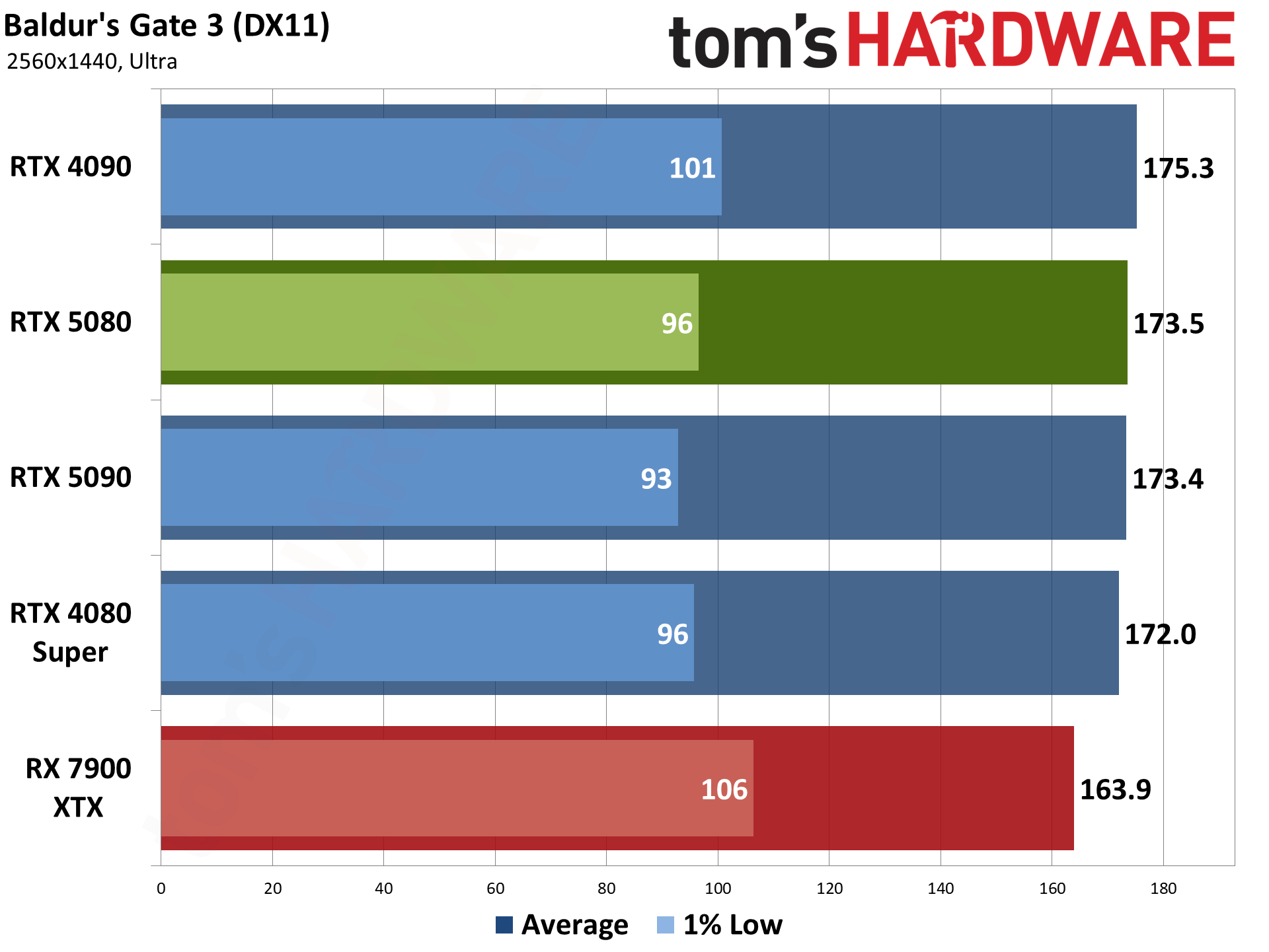
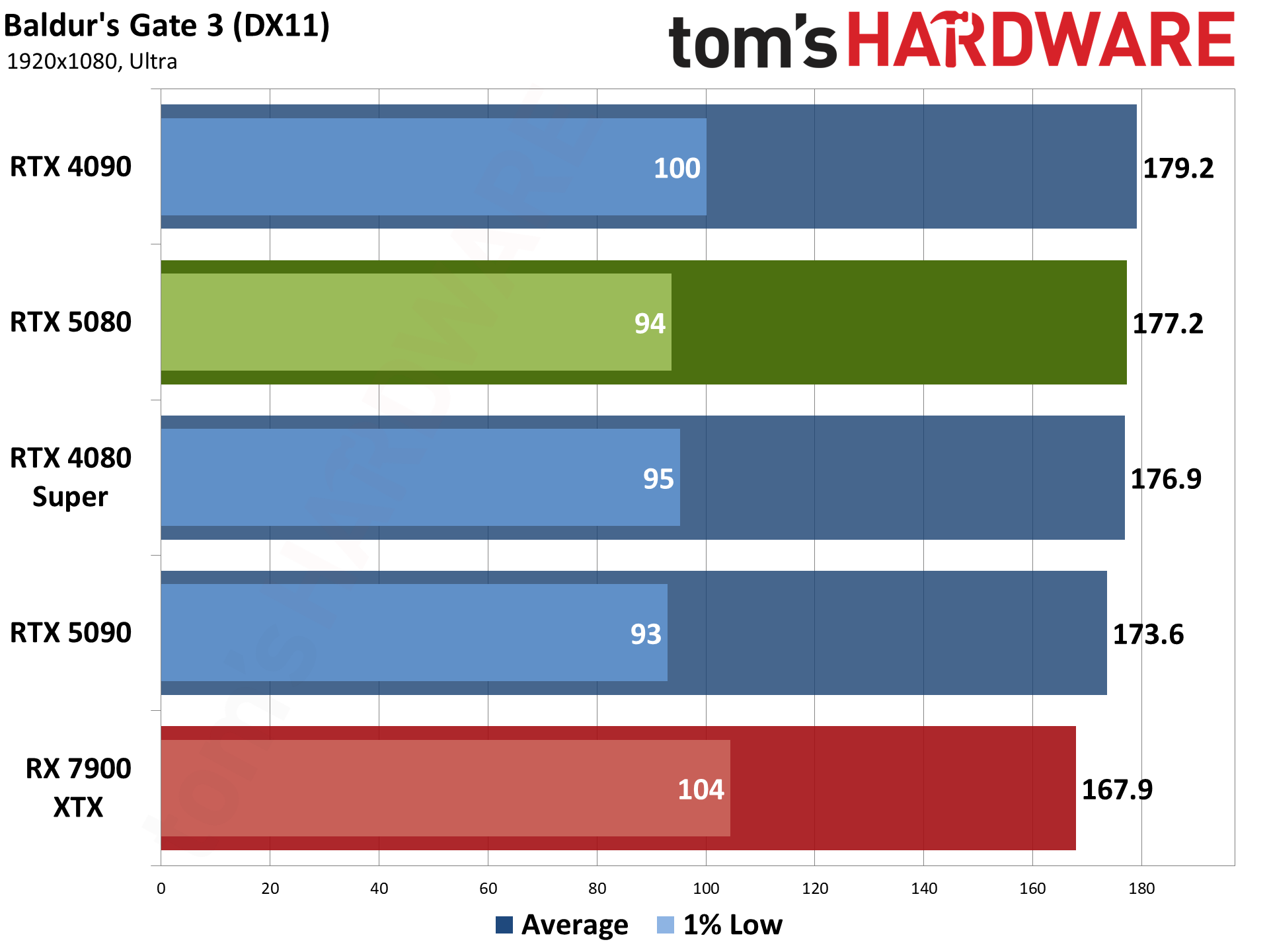
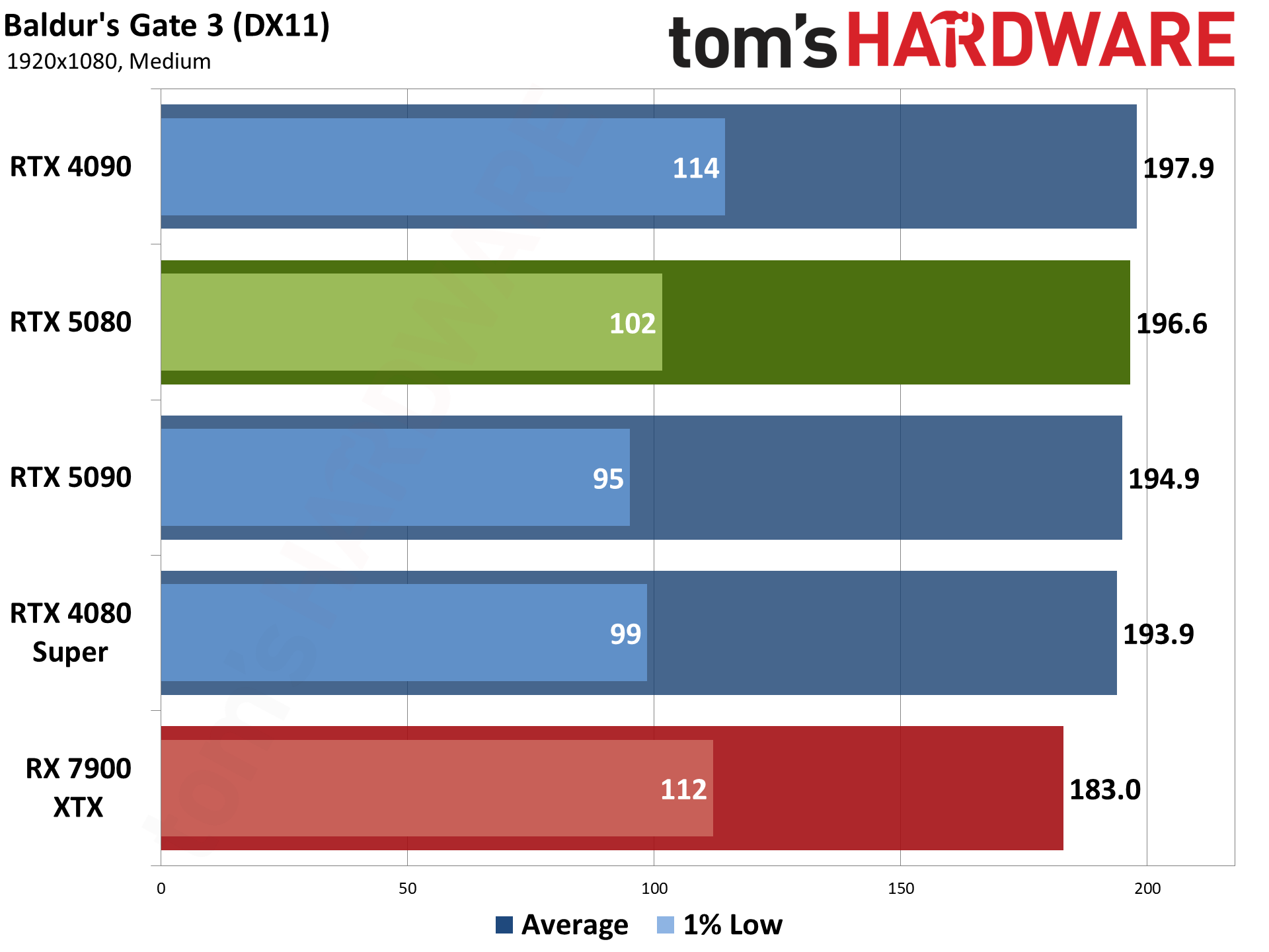
Baldur's Gate 3 is our sole DirectX 11 holdout — it also supports Vulkan, but that performed worse on the GPUs we checked, so we opted to stick with DX11. Built on Larian Studios' Divinity Engine, it's a top-down perspective game, which is a nice change of pace from the many first-person games in our test suite.
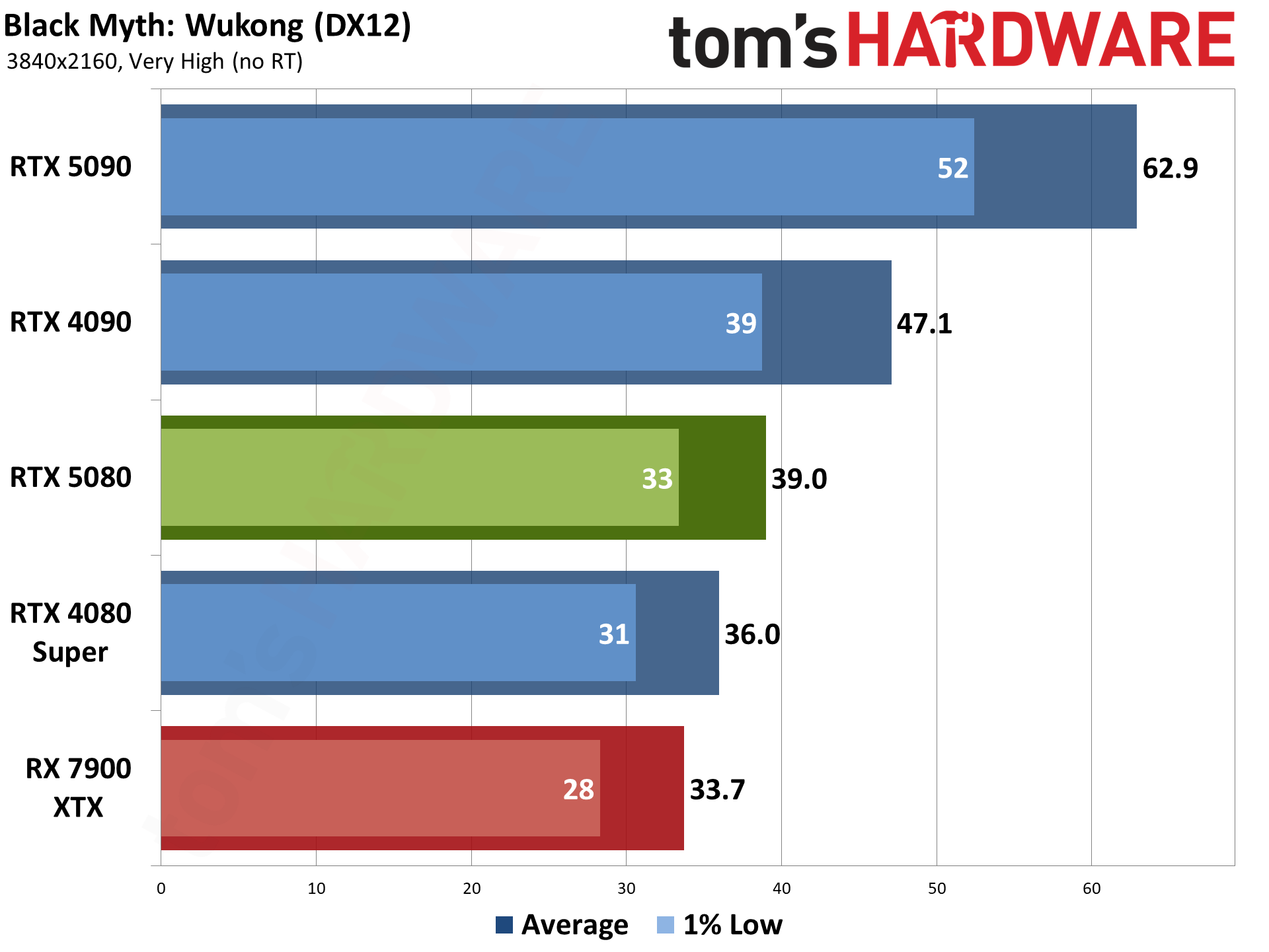
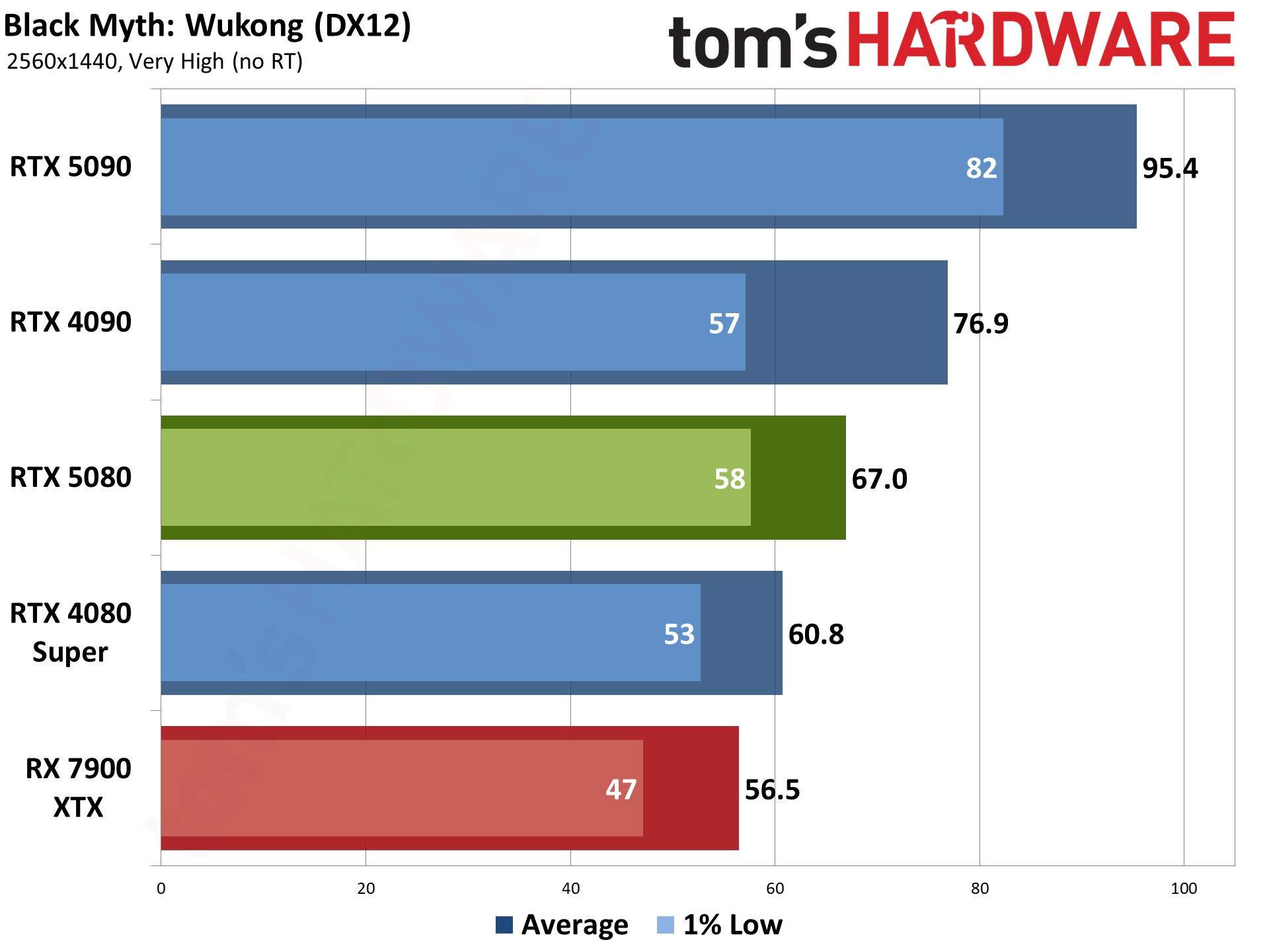
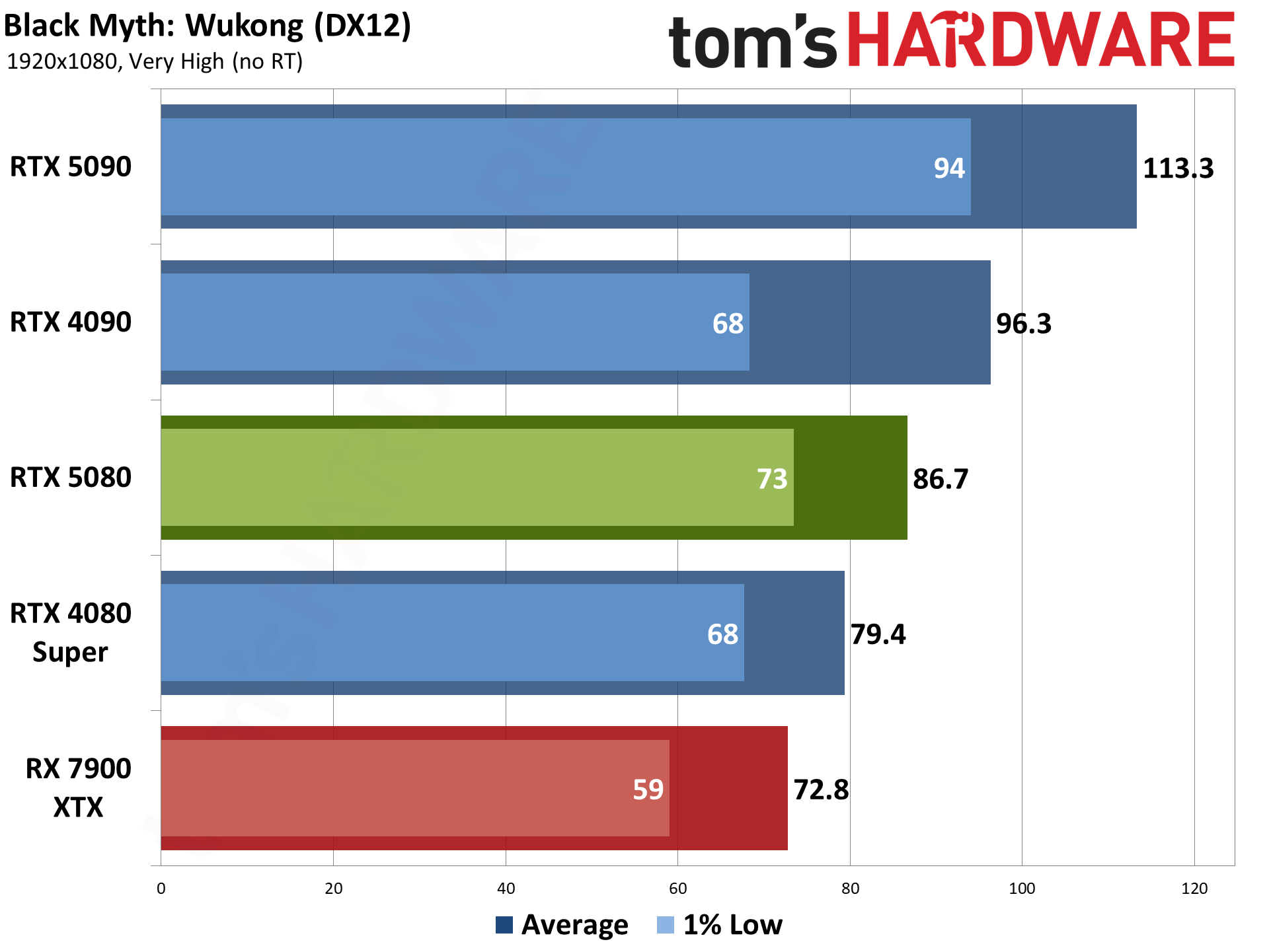
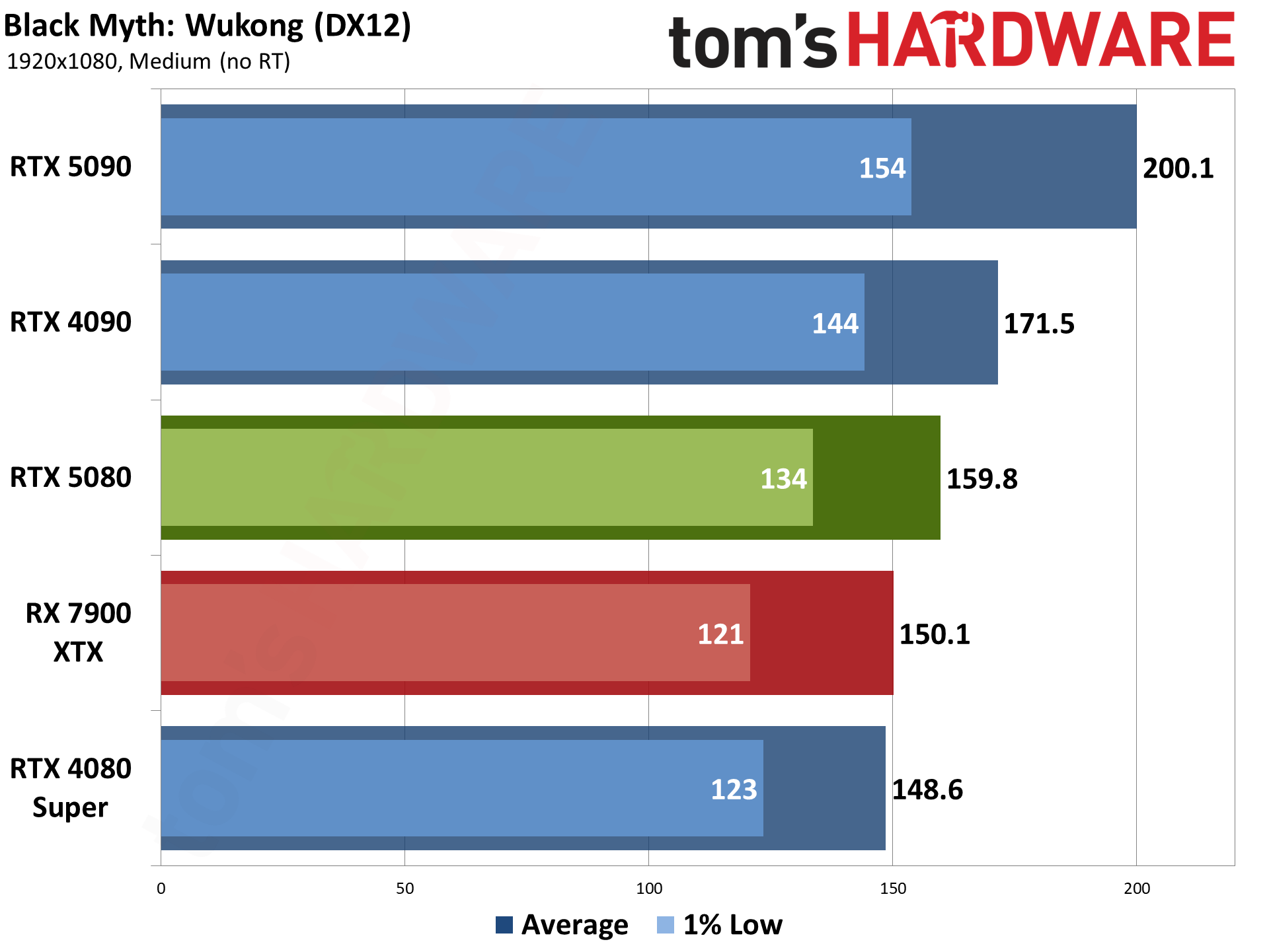
Black Myth: Wukong is one of the newer games in our test suite. Built on Unreal Engine 5, which supports full ray tracing as a high-end option, we opted to test using pure rasterization mode. Full RT may look a bit nicer, but the performance hit is quite severe. (Check our linked article for our initial launch benchmarks if you want to see how it runs with full RT enabled. We've got supplemental testing coming as well.)
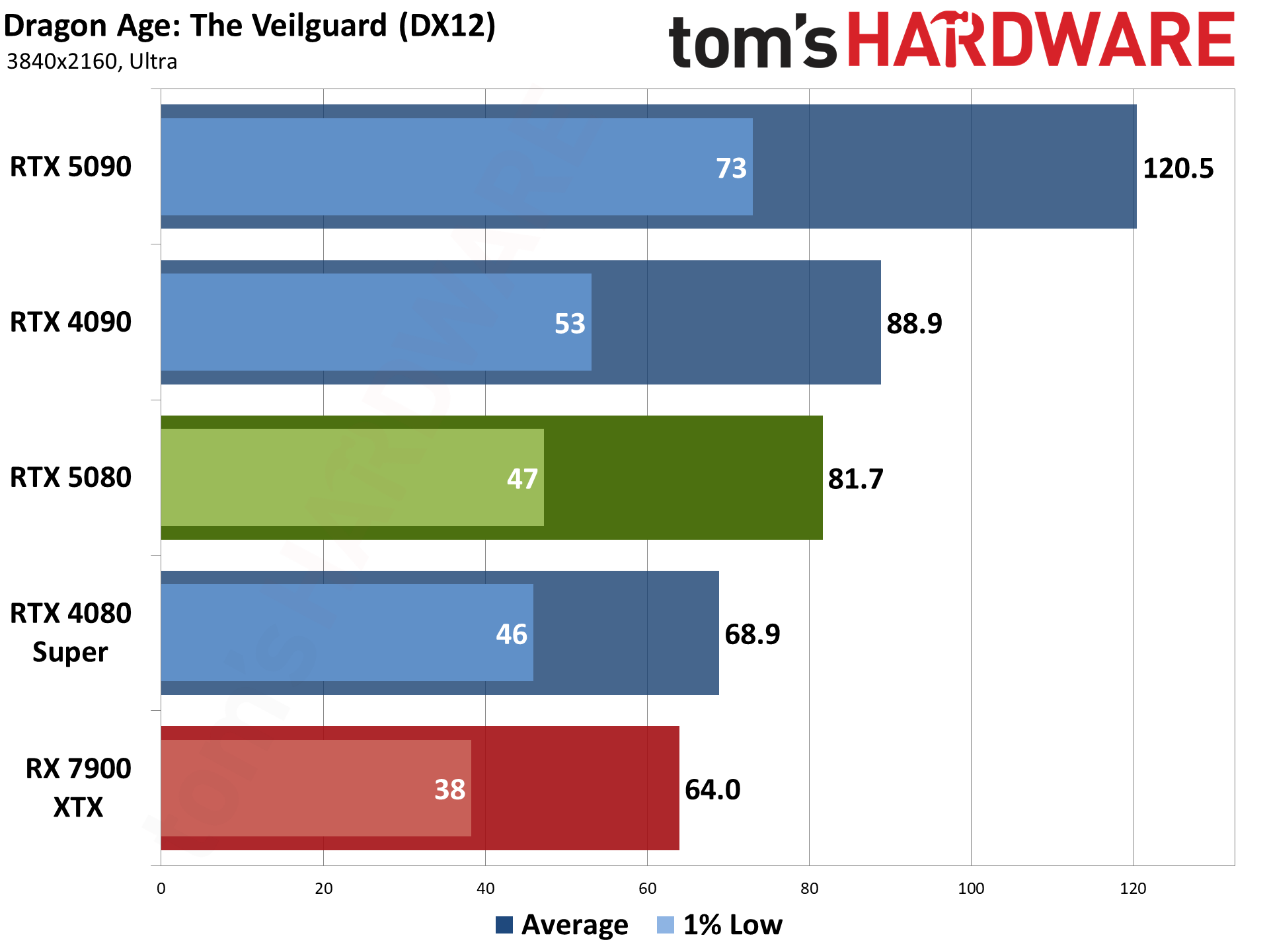
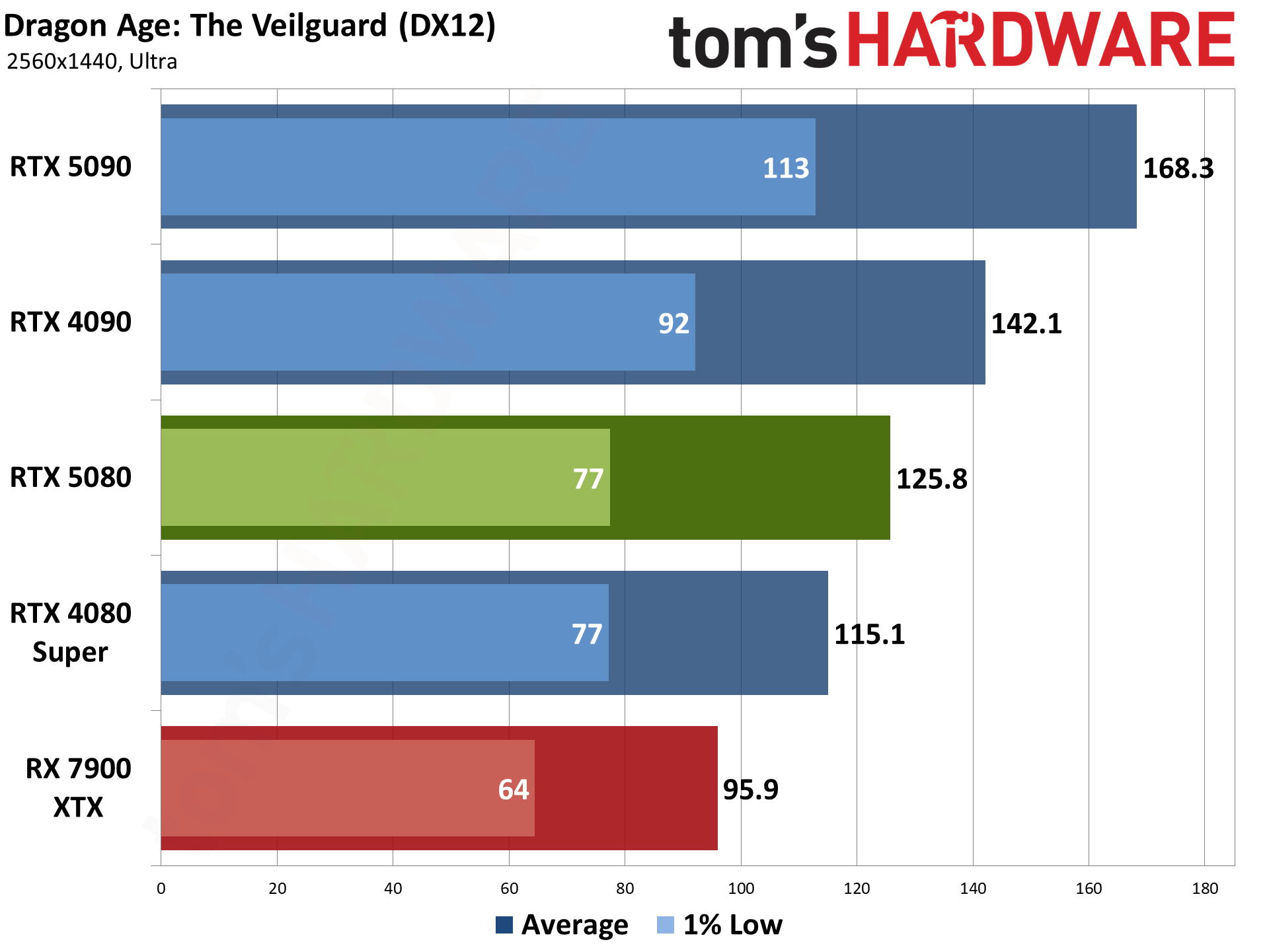
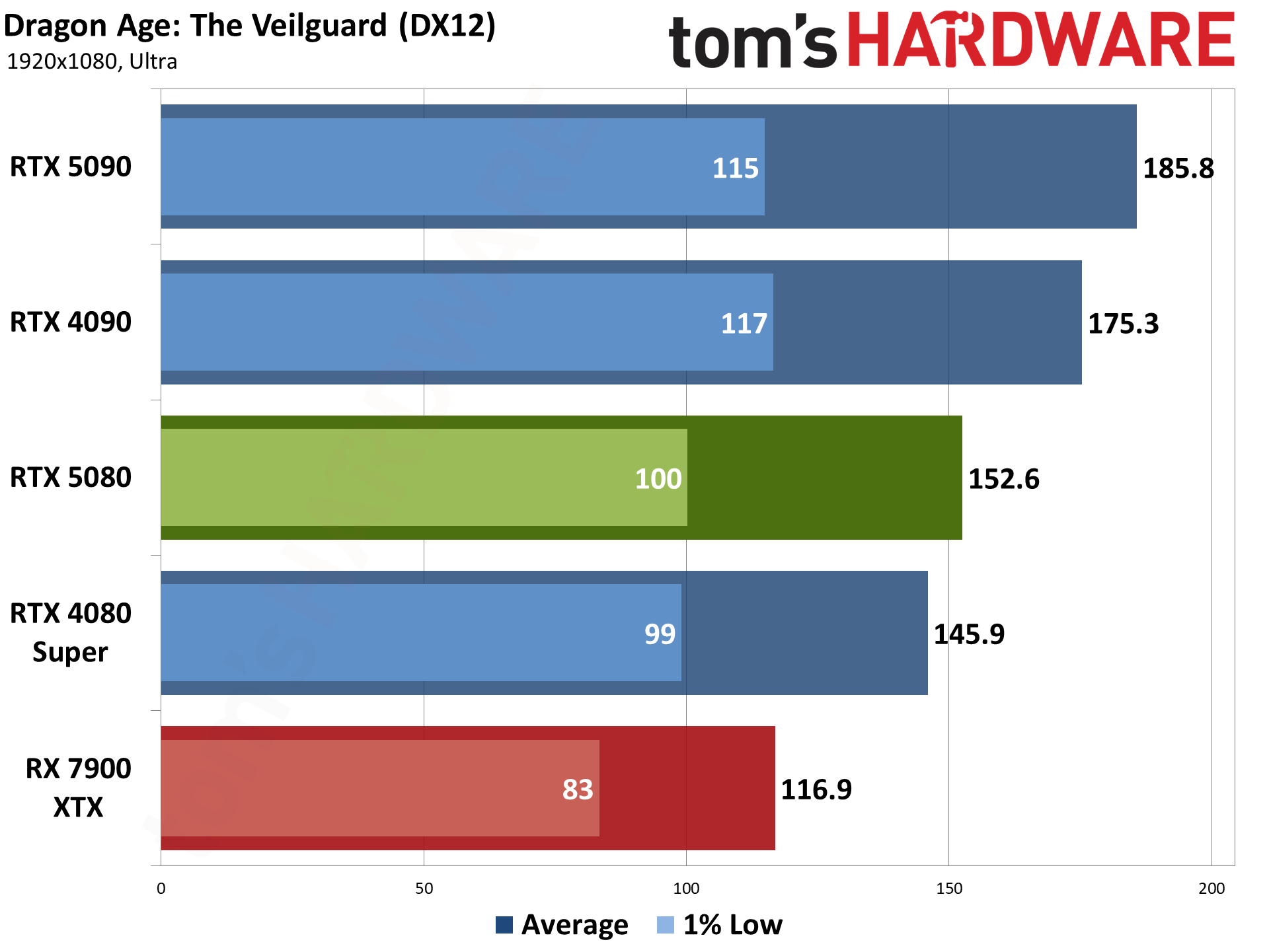
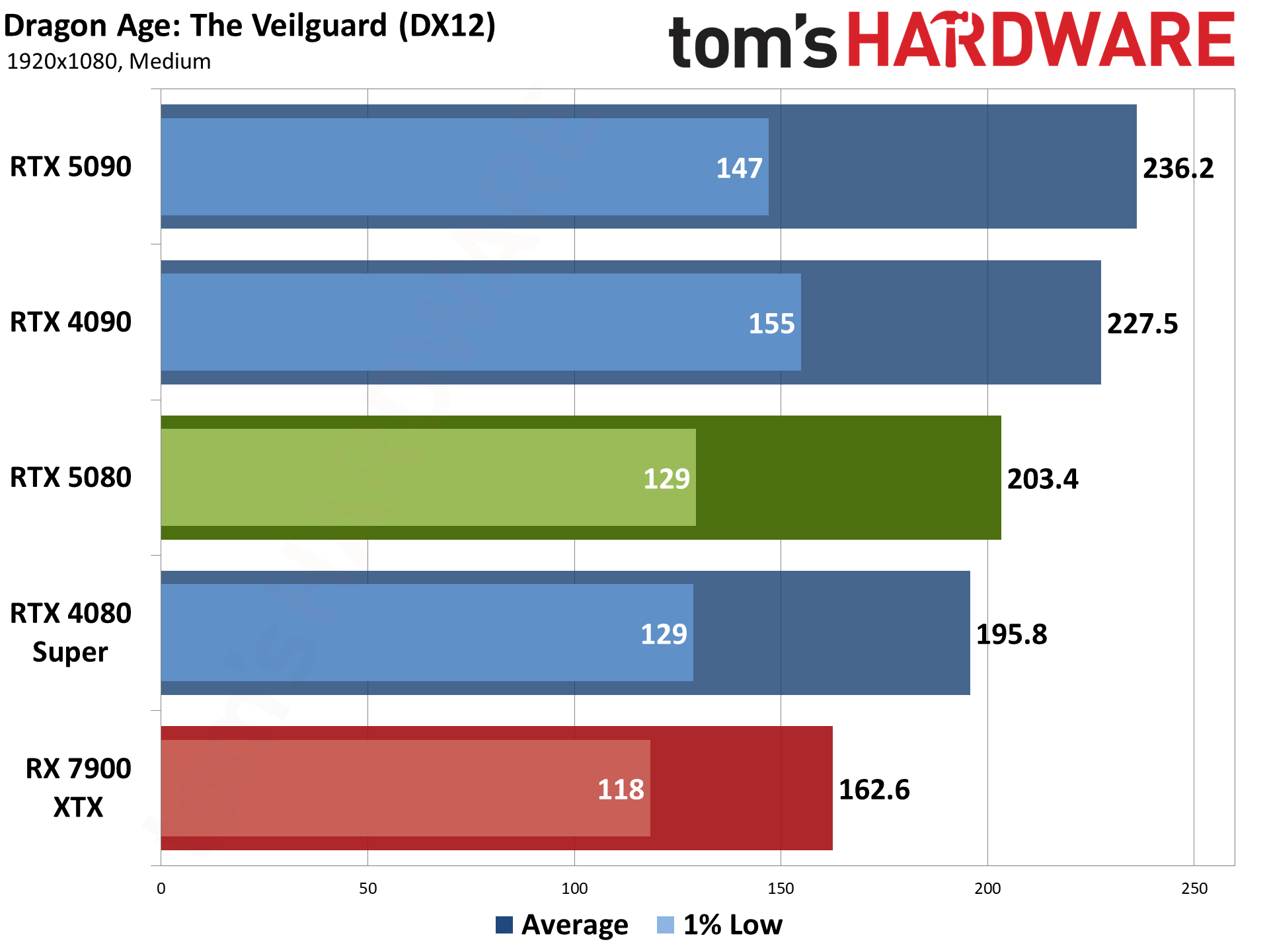
Dragon Age: The Veilguard uses the Frostbite engine and runs via the DX12 API. It's one of the newest games in my test suite, having launched this past Halloween. It's been received quite well, though, and in terms of visuals, I'd put it right up there with Unreal Engine 5 games — without some of the LOD pop-in that happens so frequently with UE5.
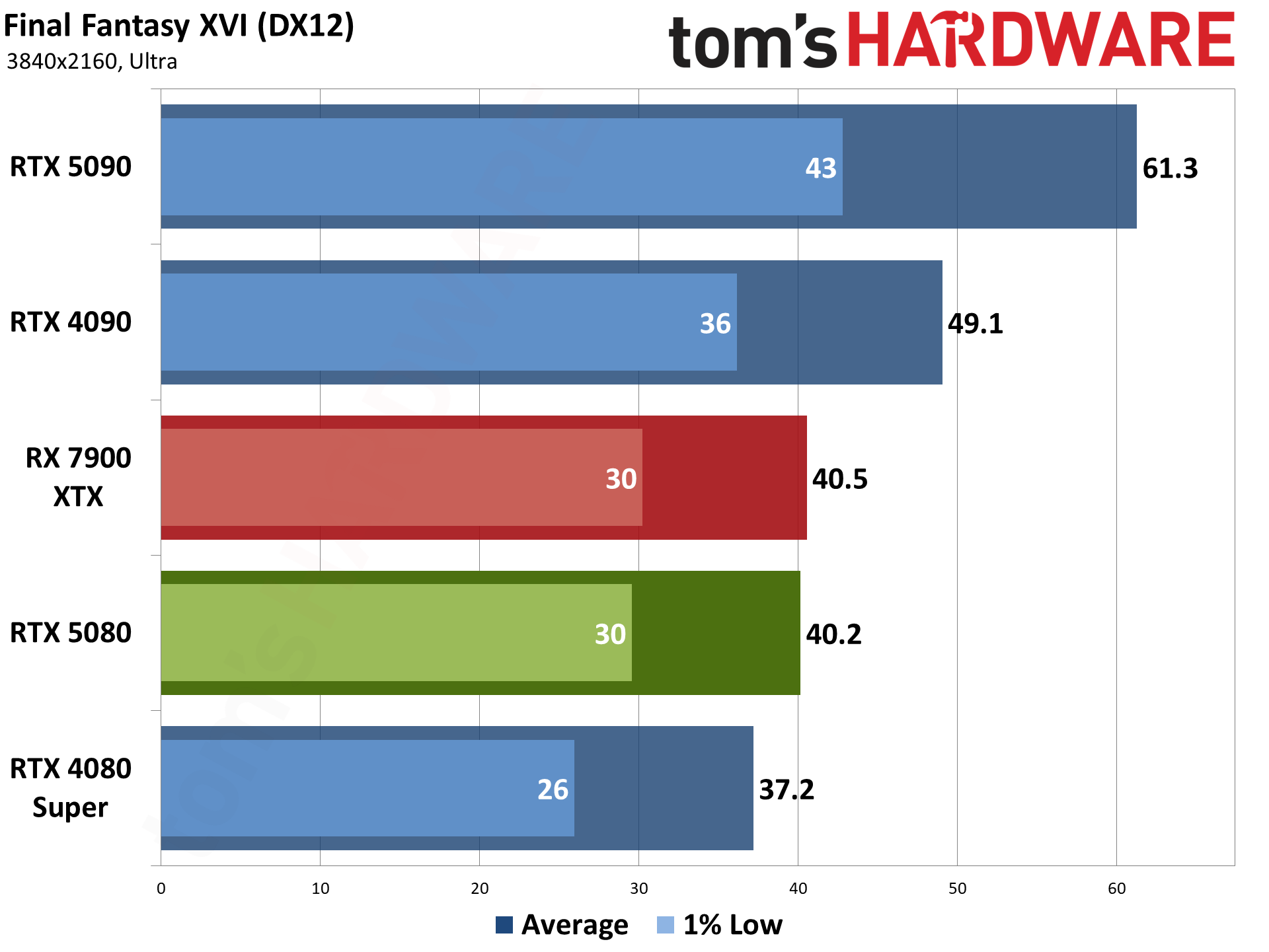
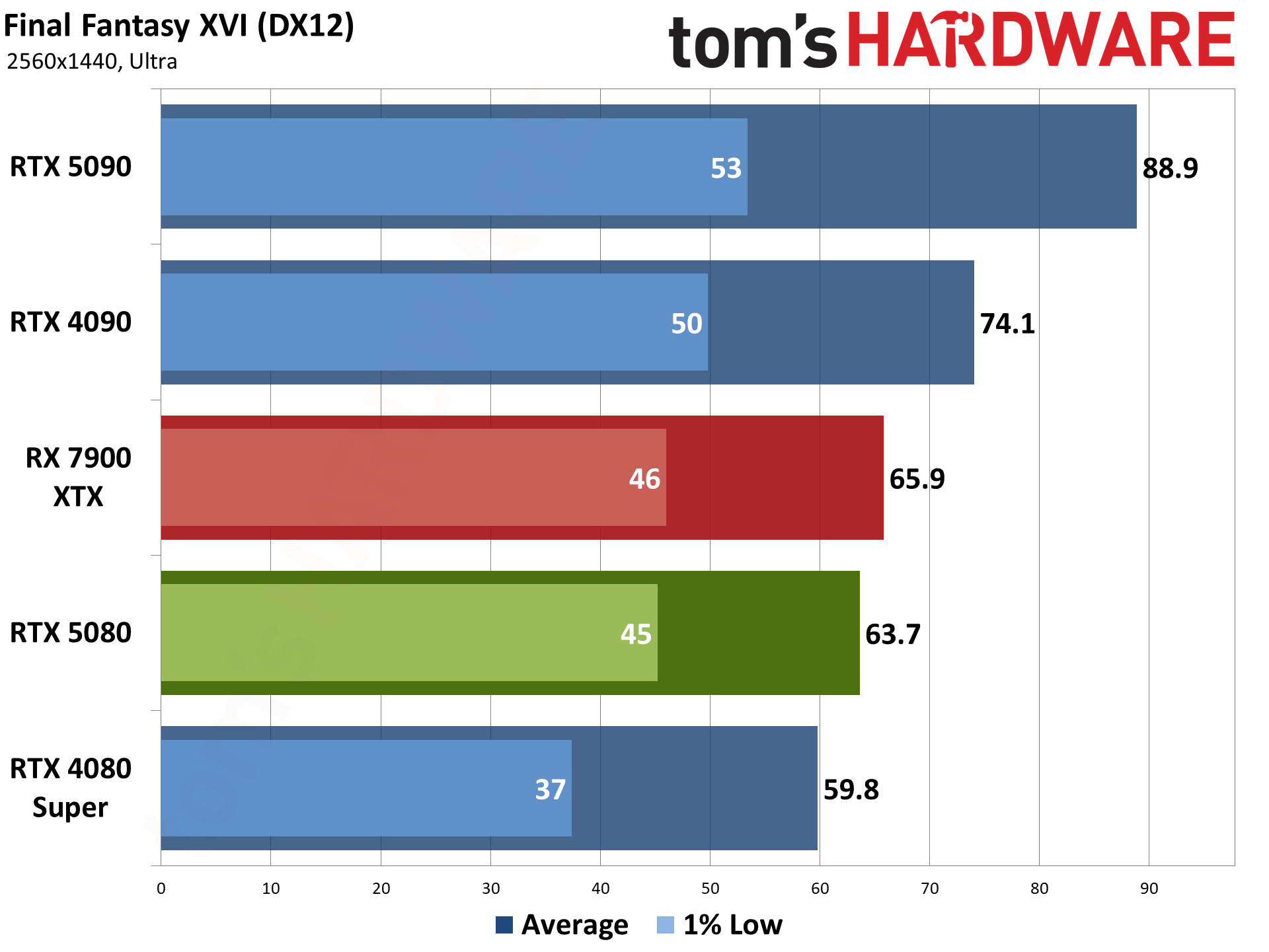
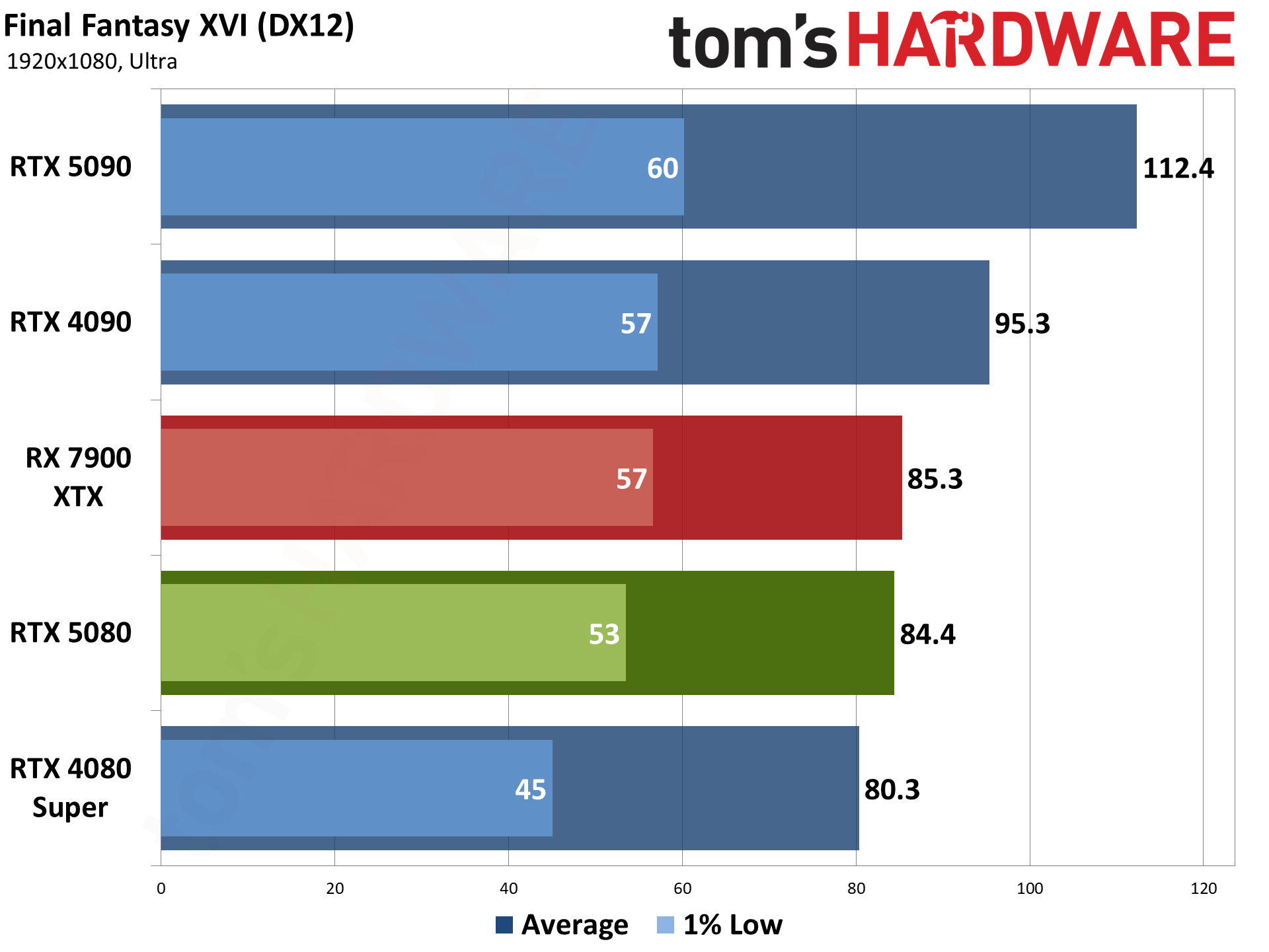
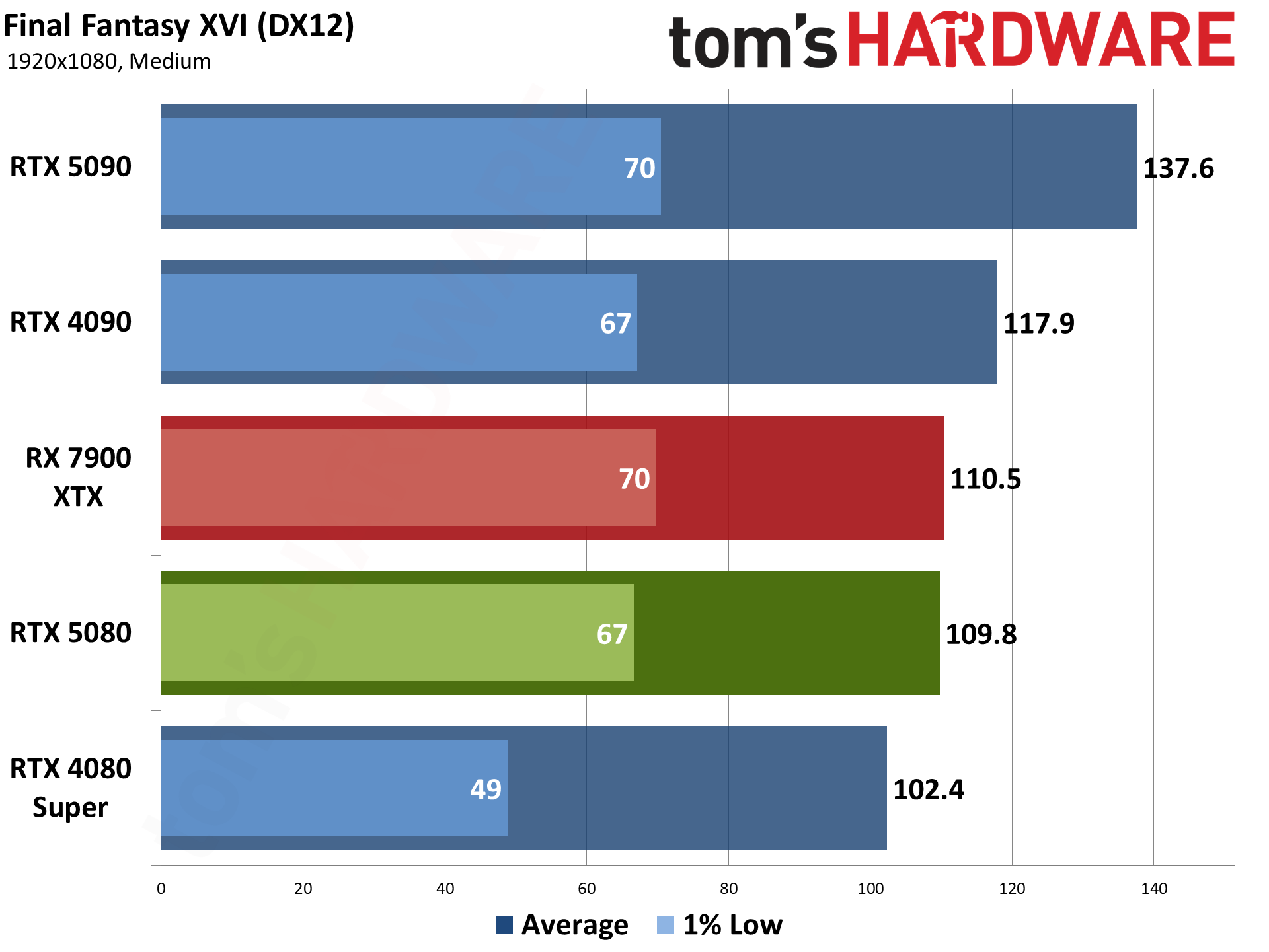
Final Fantasy XVI came out for the PS5 last year, but it only recently saw a Windows release. It's also either incredibly demanding or quite poorly optimized (or both), but it does tend to be very GPU limited. Our test sequence consists of running a set path around the town of Lost Wing.
Get Tom's Hardware's best news and in-depth reviews, straight to your inbox.
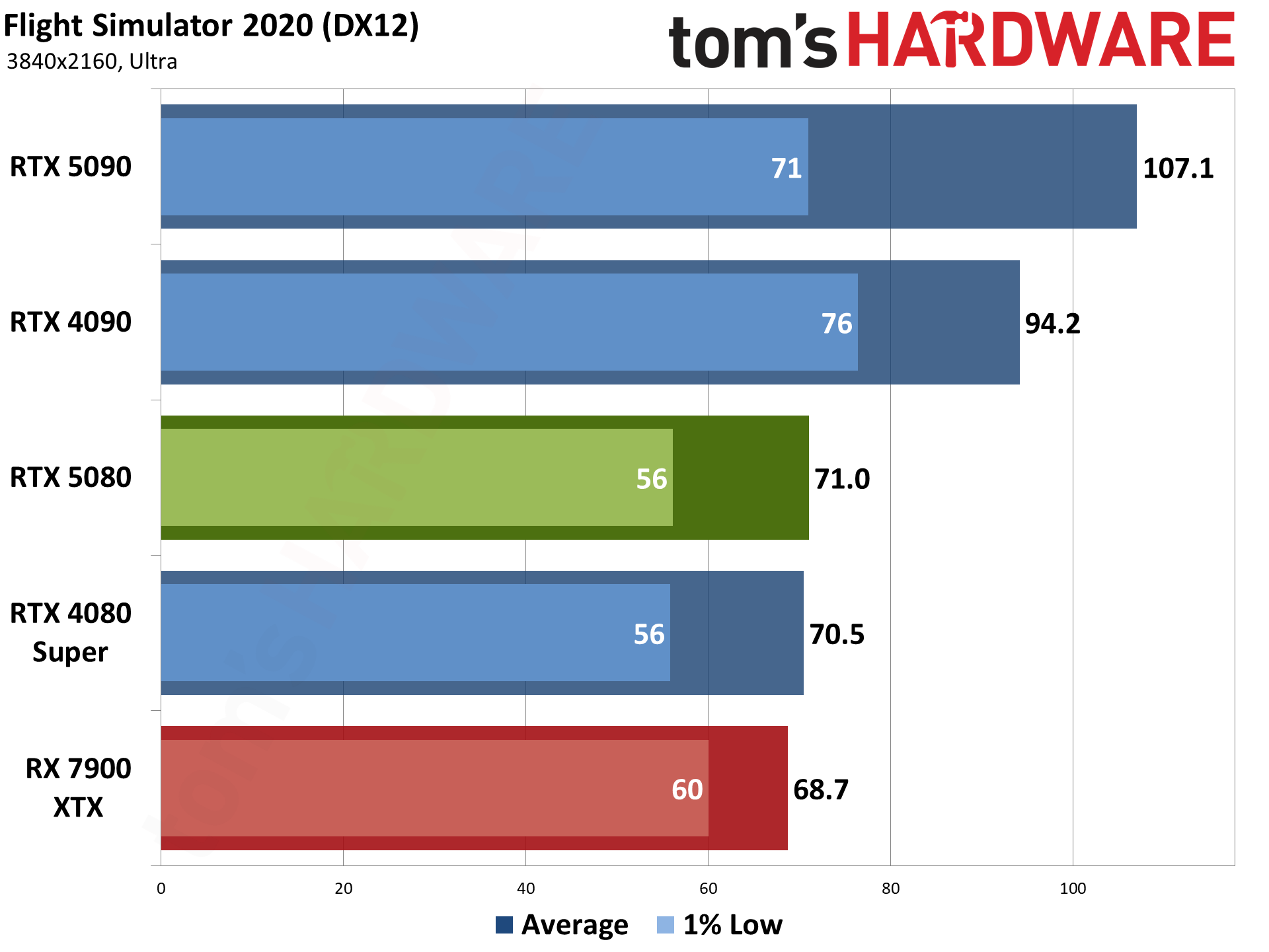
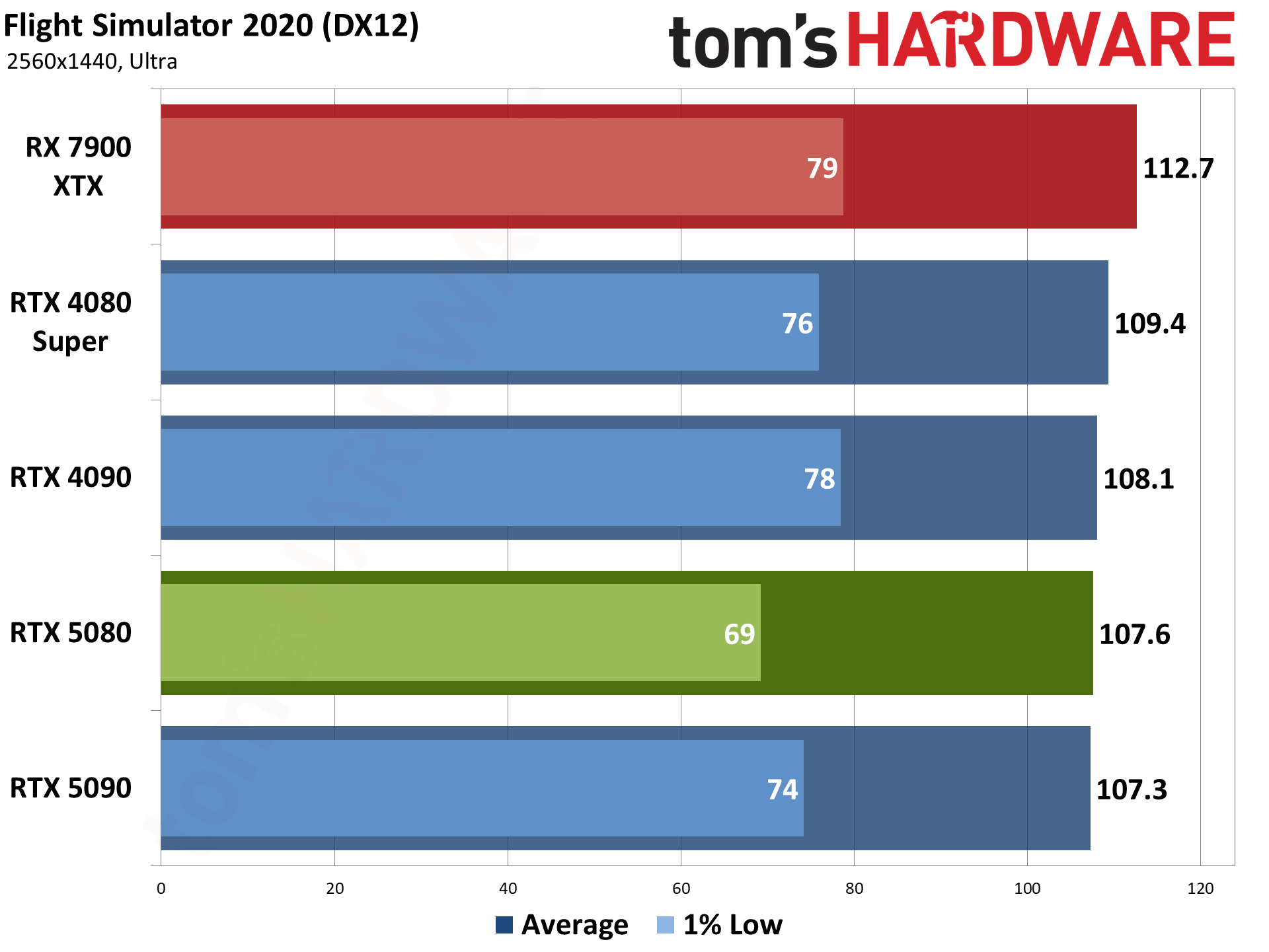
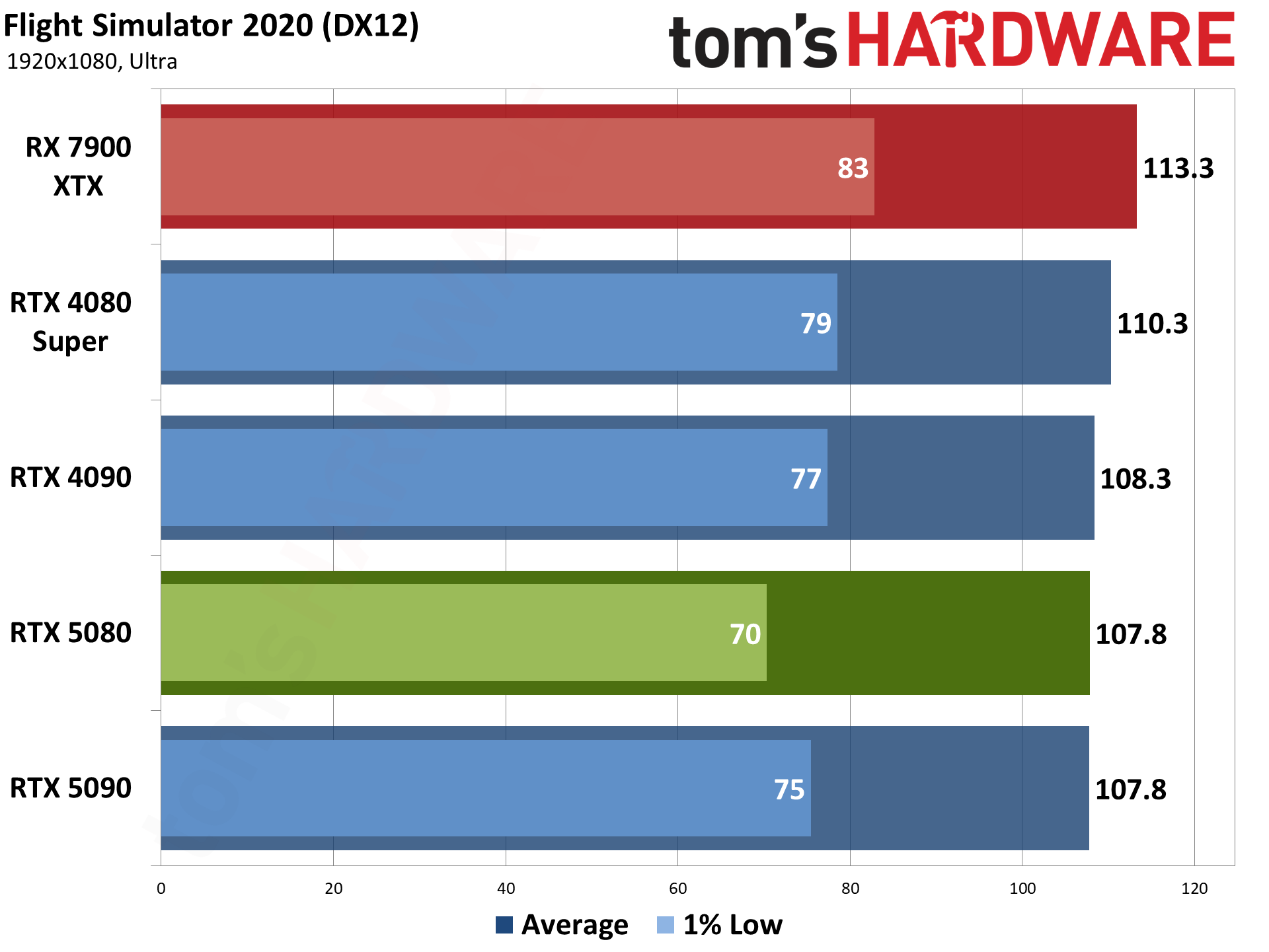
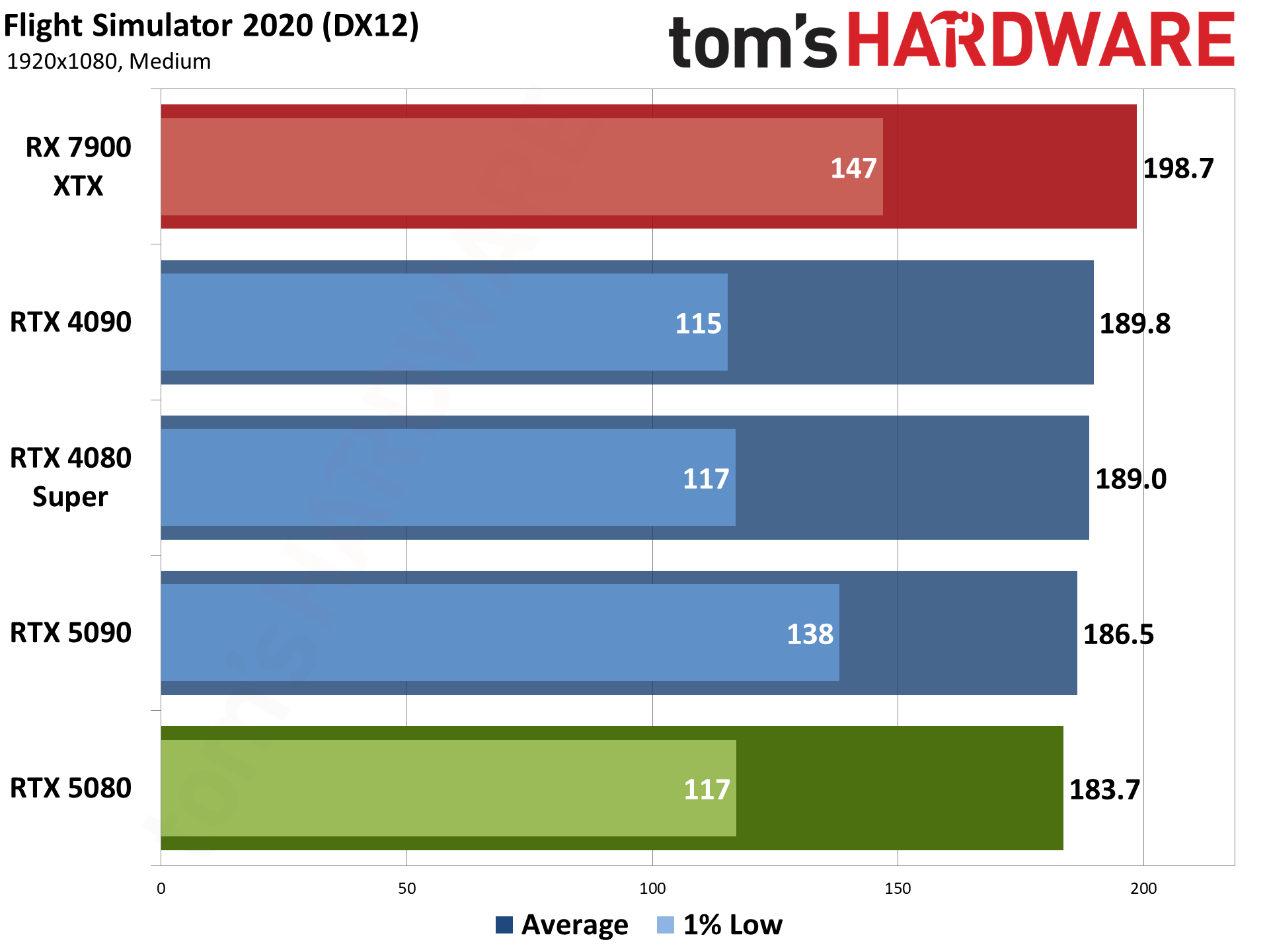
We've been using Flight Simulator 2020 for several years, and there's a new release below. But it's so new that we also wanted to keep the original around a bit longer as a point of reference. We've switched to using the 'beta' (eternal beta) DX12 path for our testing now, as it's required for DLSS frame generation, even if it runs a bit slower on Nvidia GPUs.

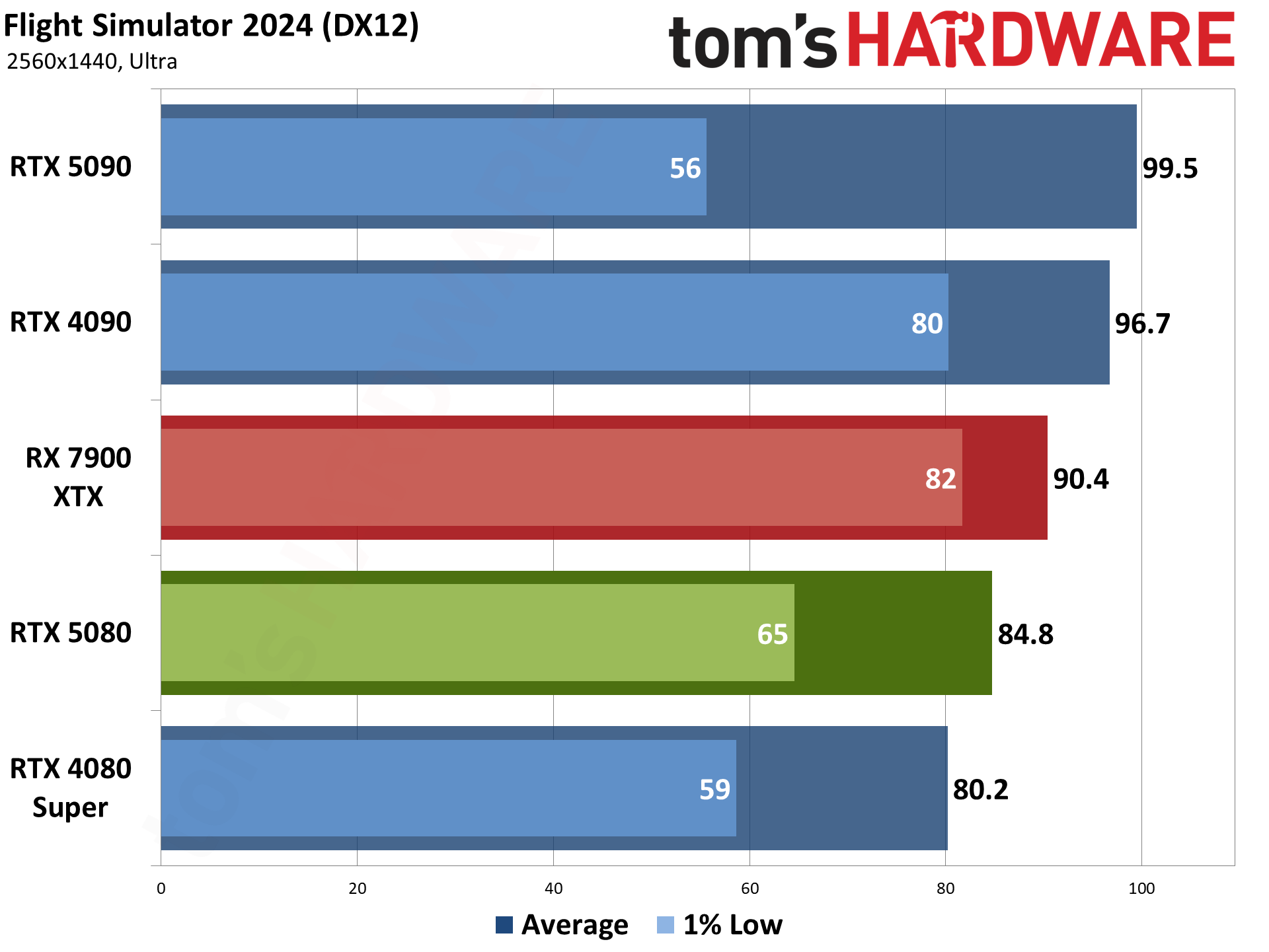
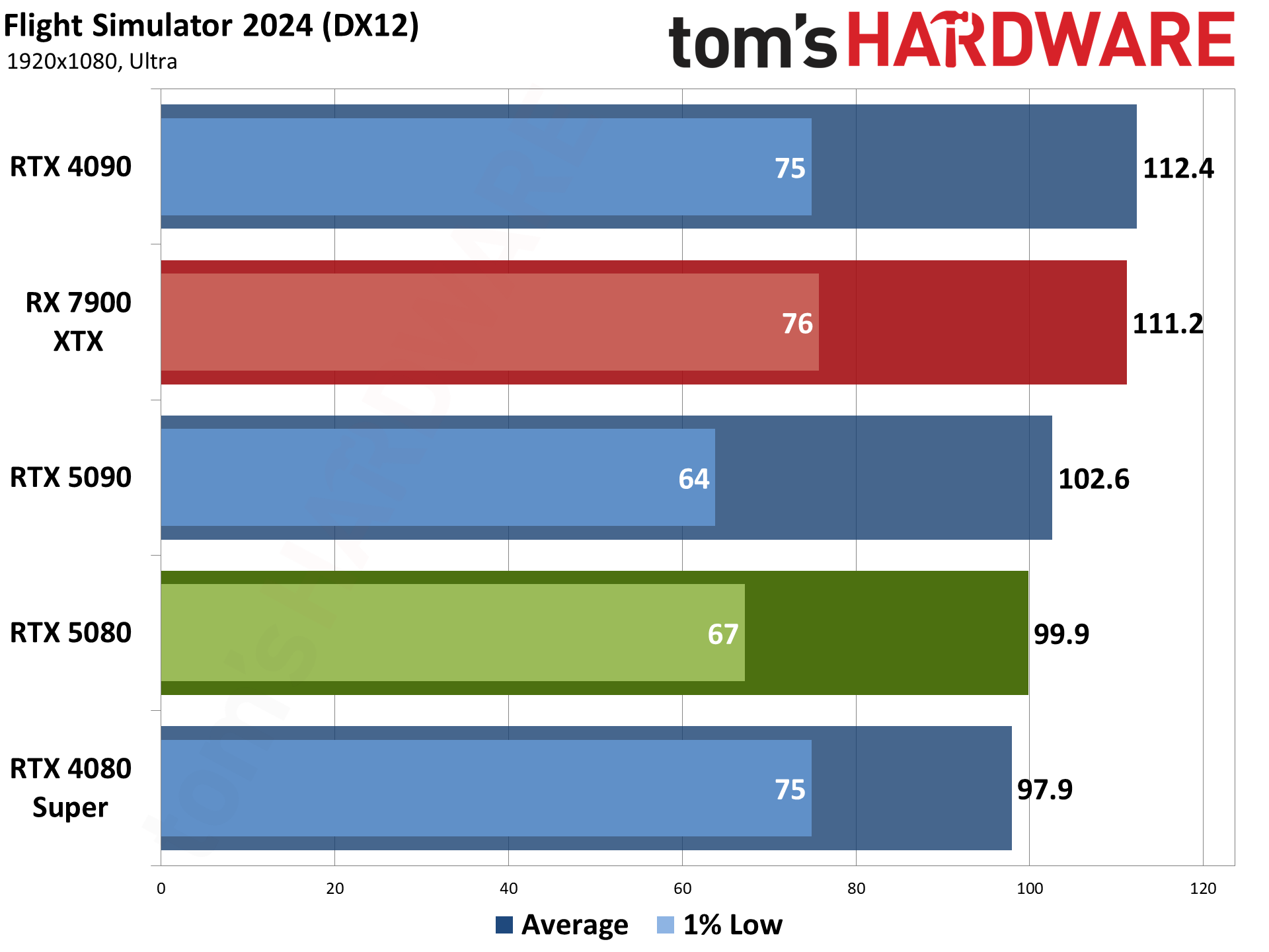
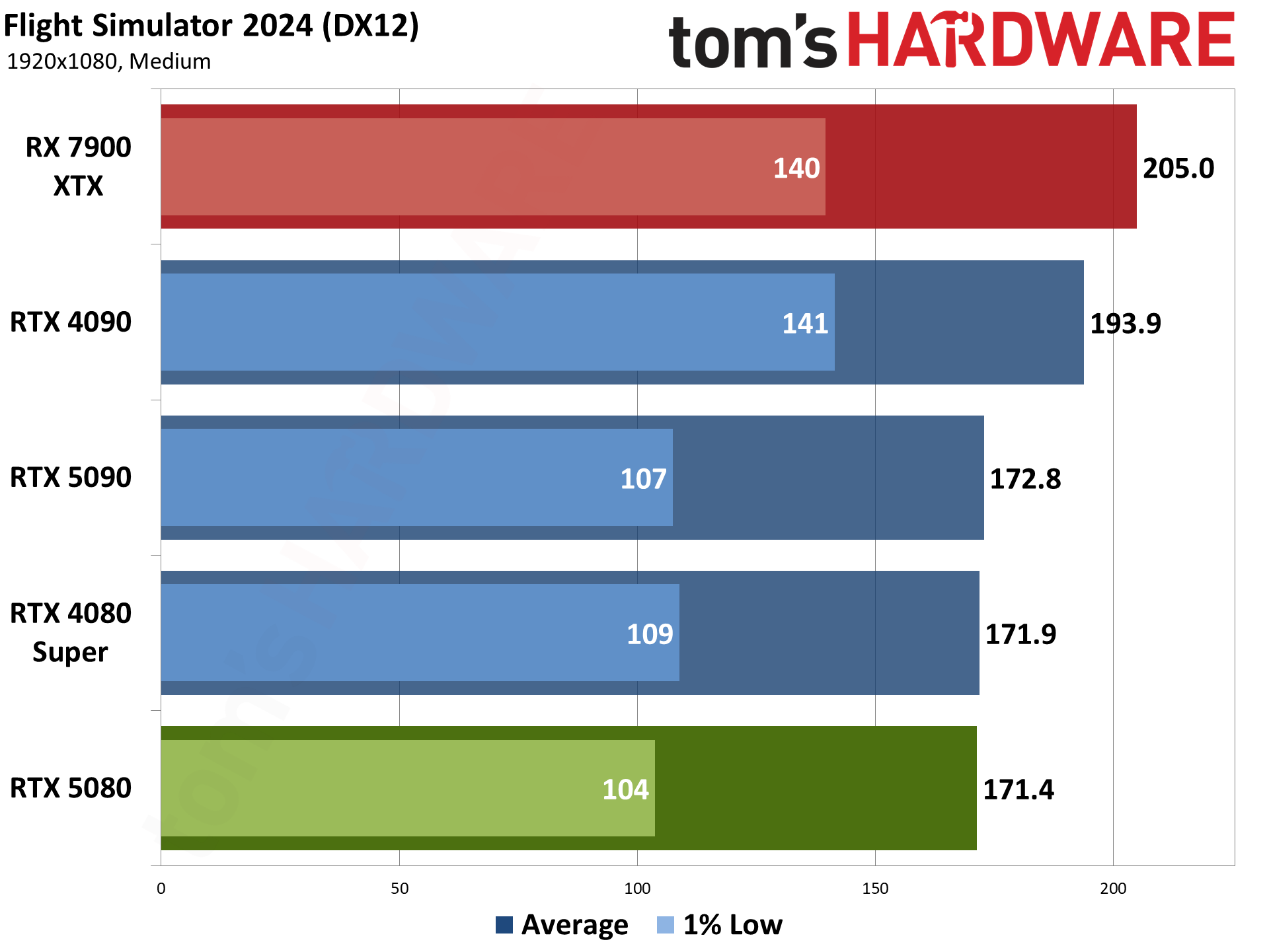
Flight Simulator 2024 is the latest release of the storied franchise, and it's even more demanding than the above 2020 release — with some differences in what sort of hardware it seems to like best. Where the 2020 version really appreciated AMD's X3D processors, the 2024 release tends to be more forgiving to Intel CPUs, thanks to improved DirectX 12 code (DX11 is no longer supported).
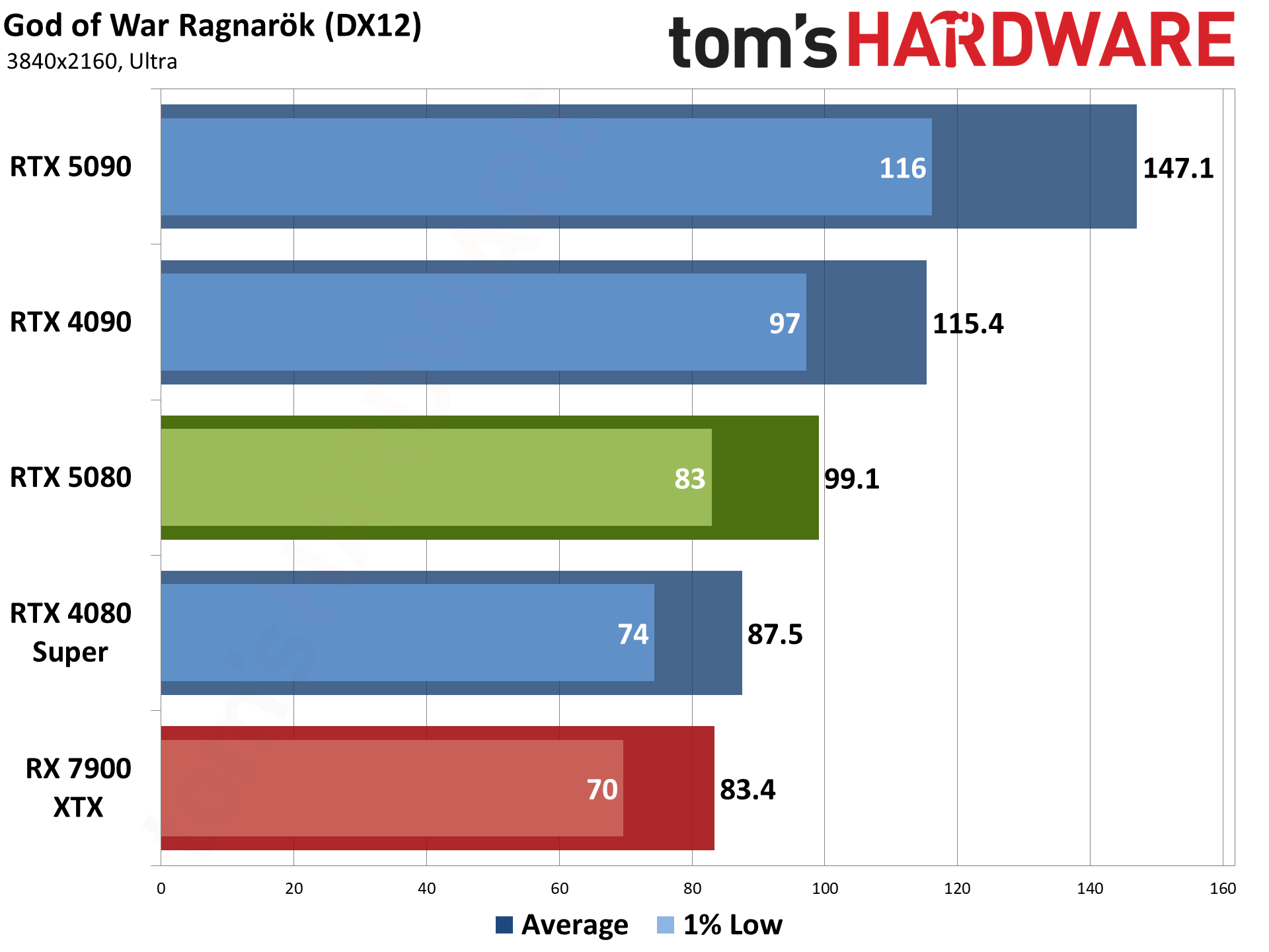
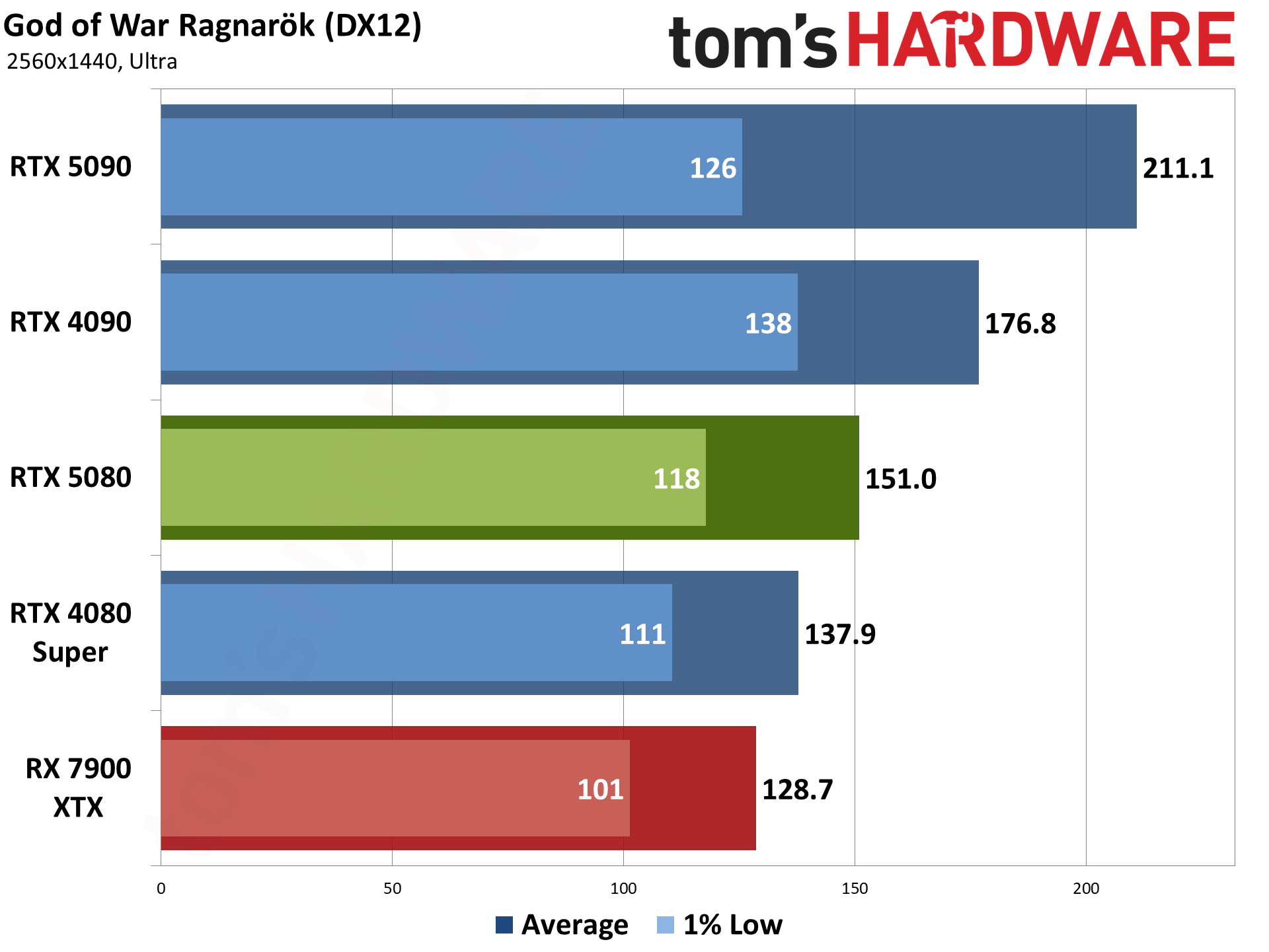
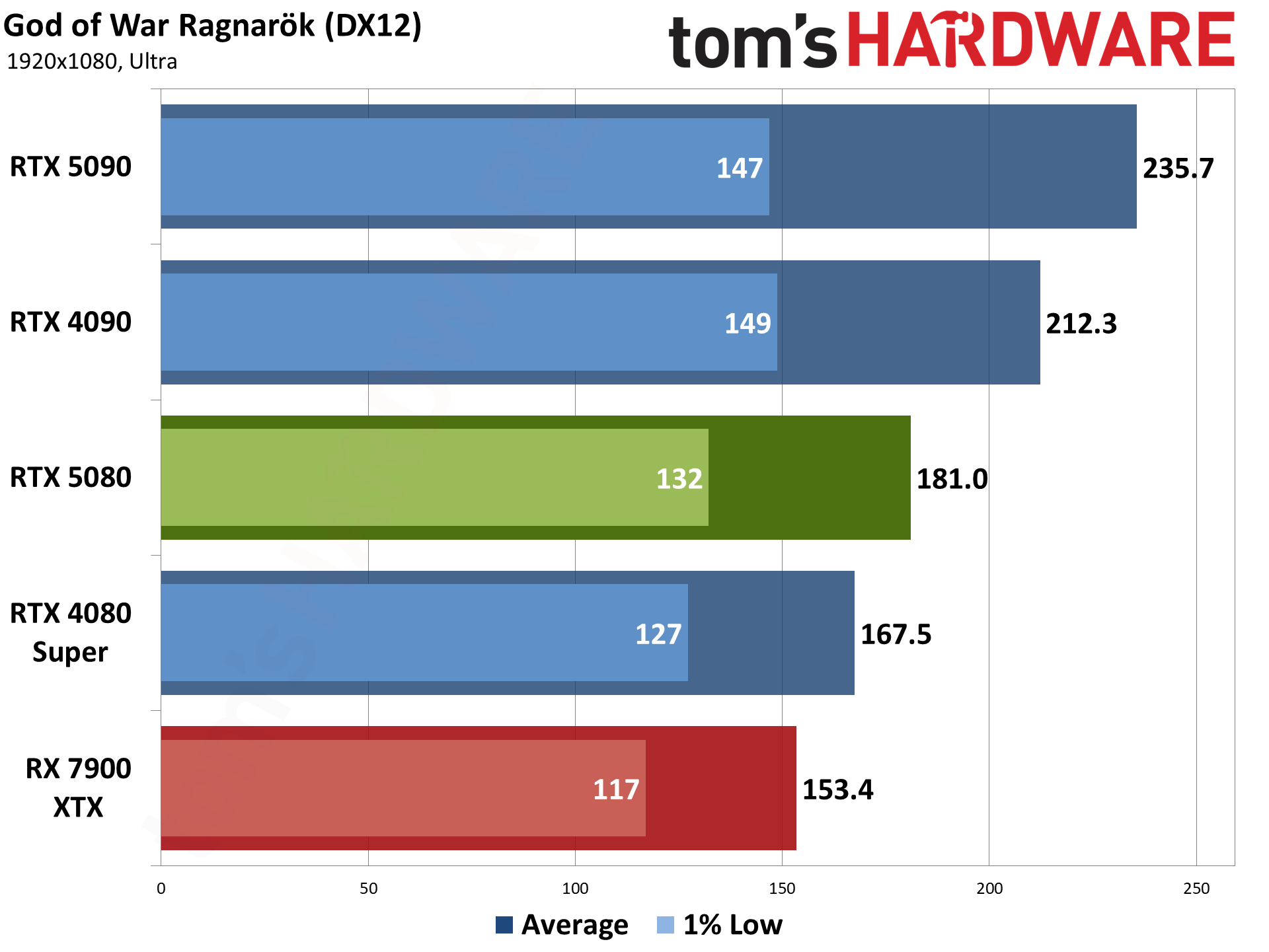
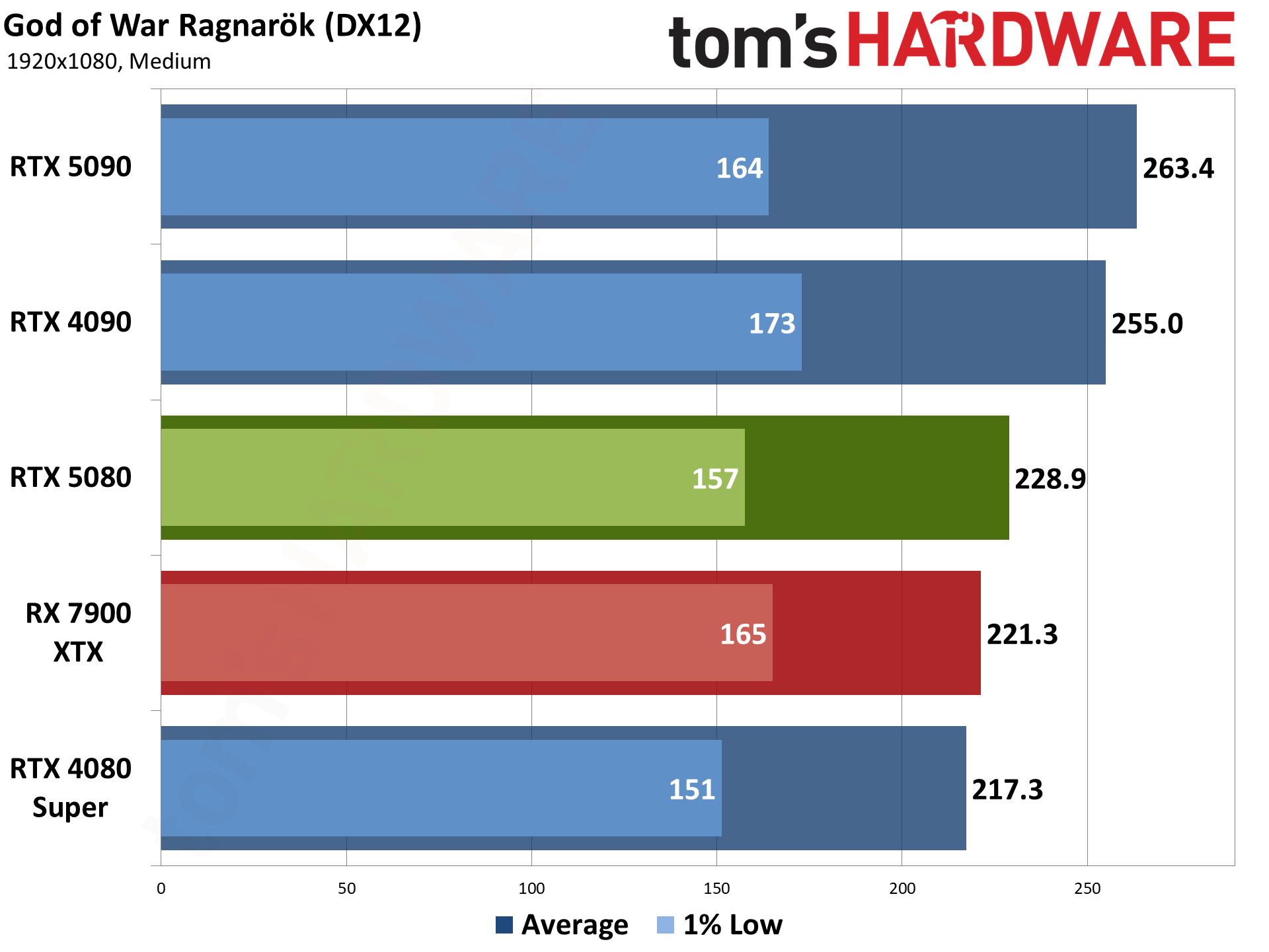
God of War Ragnarök released for the PlayStation two years ago and only recently saw a Windows version. It's AMD promoted, but it also supports DLSS and XeSS alongside FSR3. We ran around the village of Svartalfheim, which is one of the most demanding areas in the game that we've encountered.
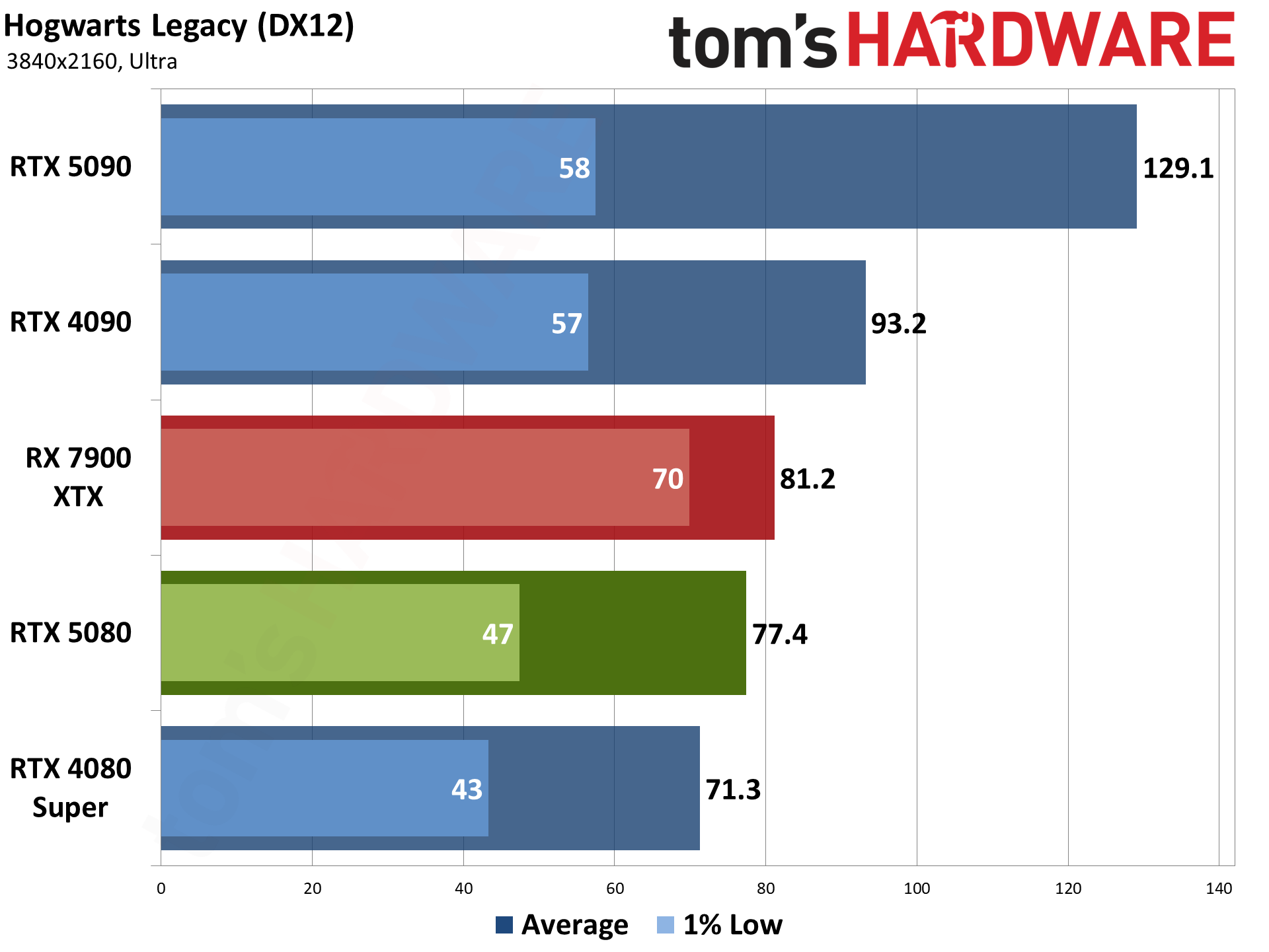
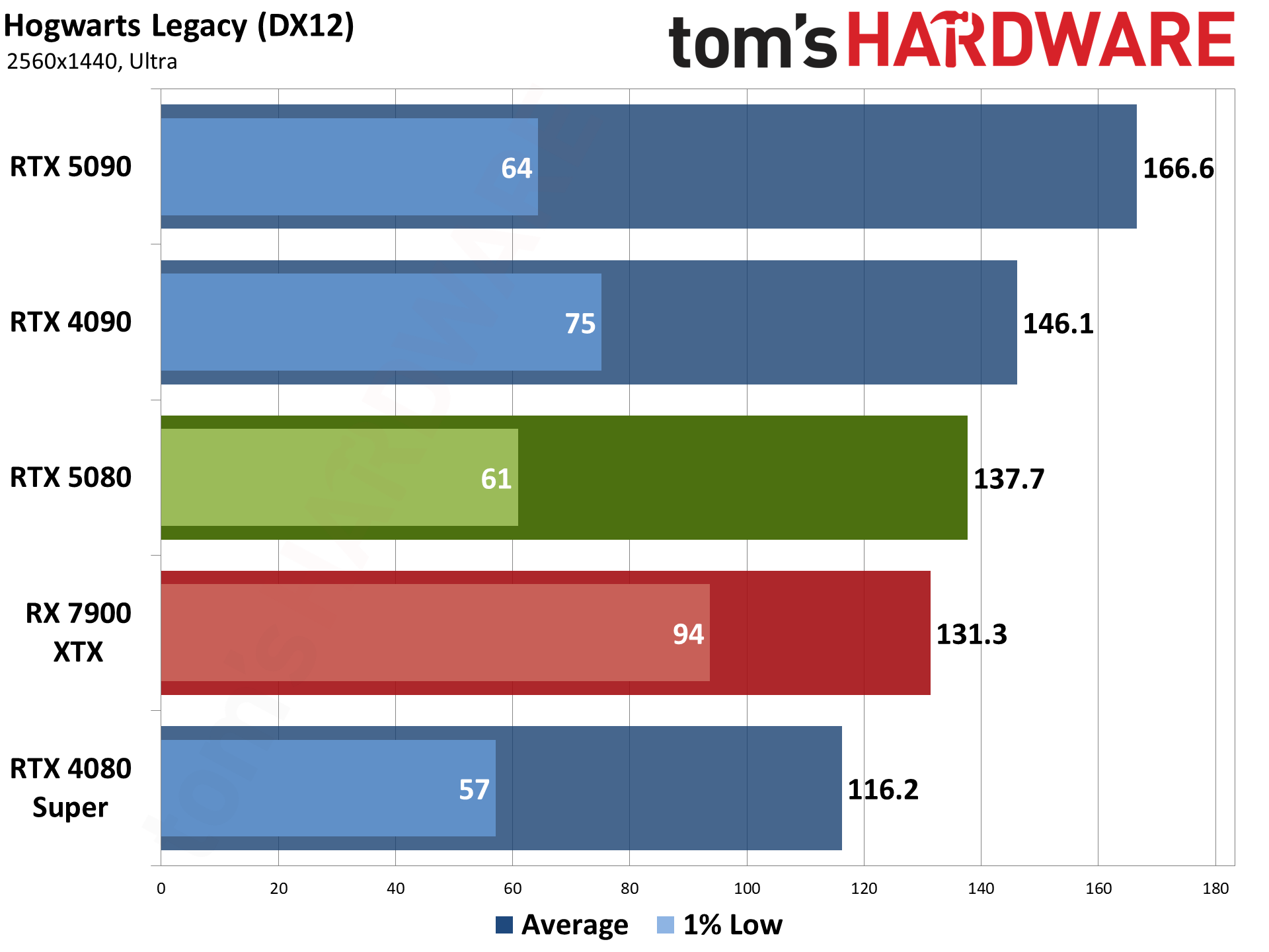
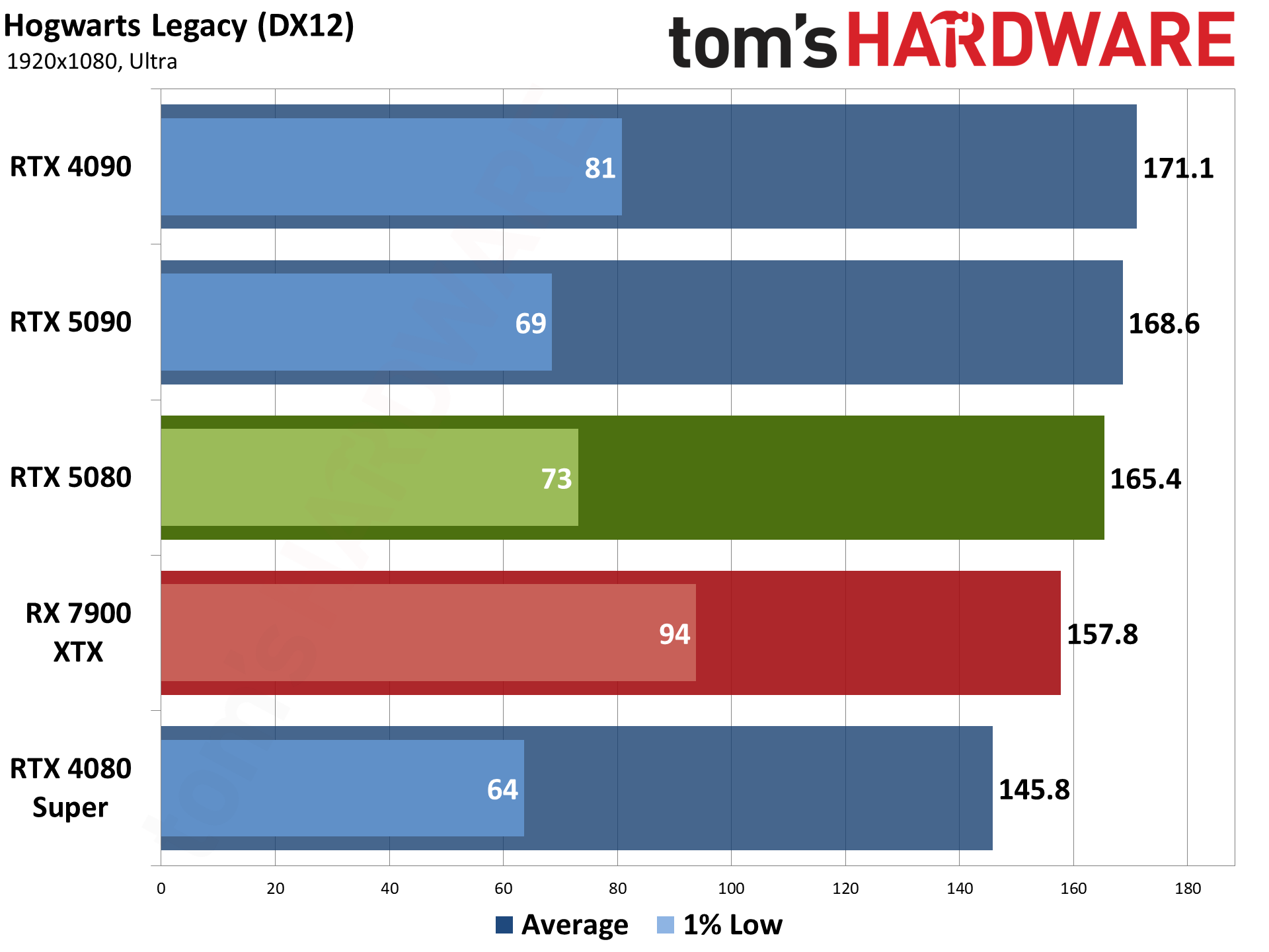

Hogwarts Legacy came out in early 2023, and it uses Unreal Engine 4. Like so many Unreal Engine games, it can look quite nice but also has some performance issues with certain settings. Ray tracing, in particular, can bloat memory use and tank framerates and also causes hitching, so we've opted to test without ray tracing.
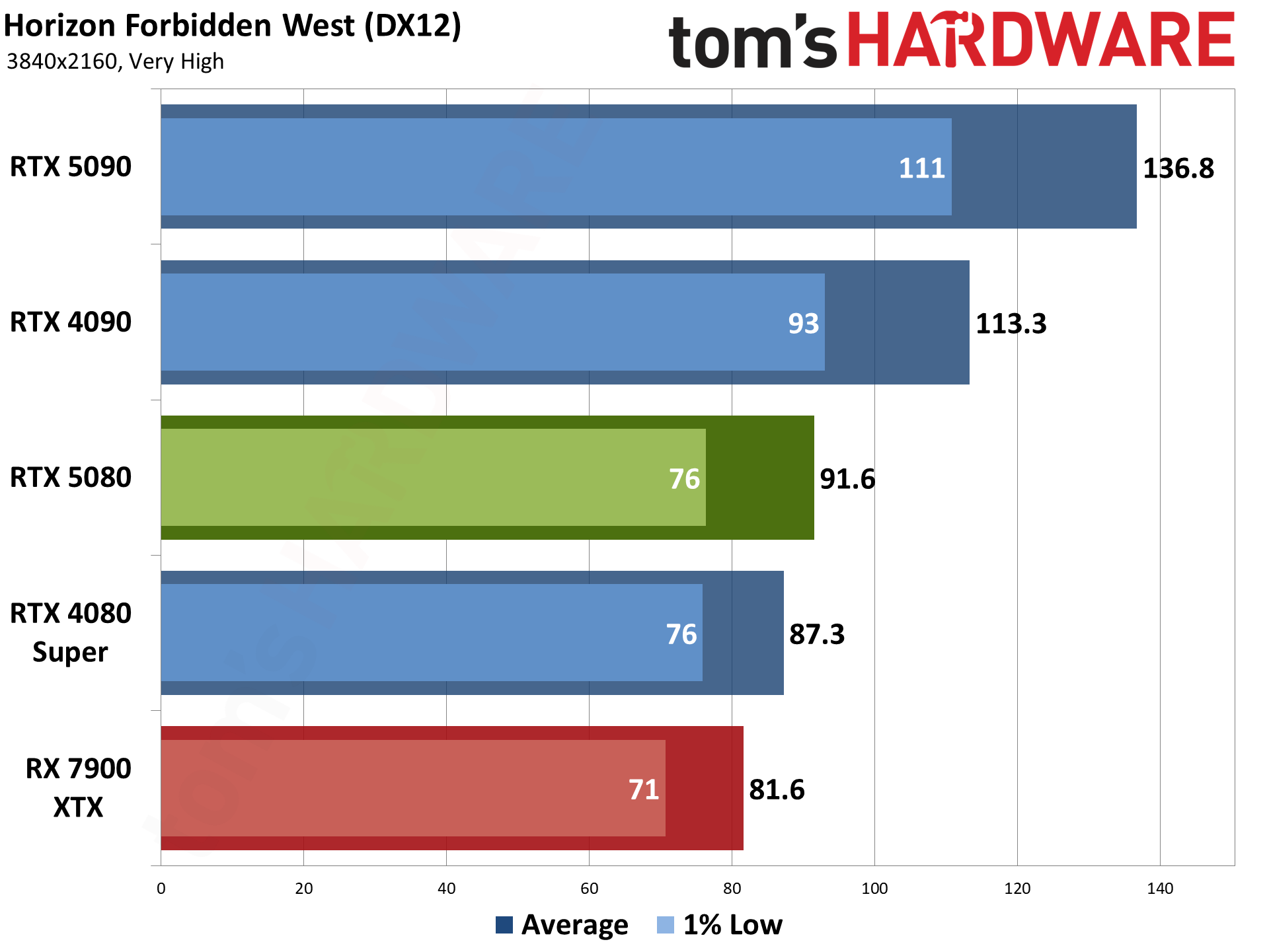
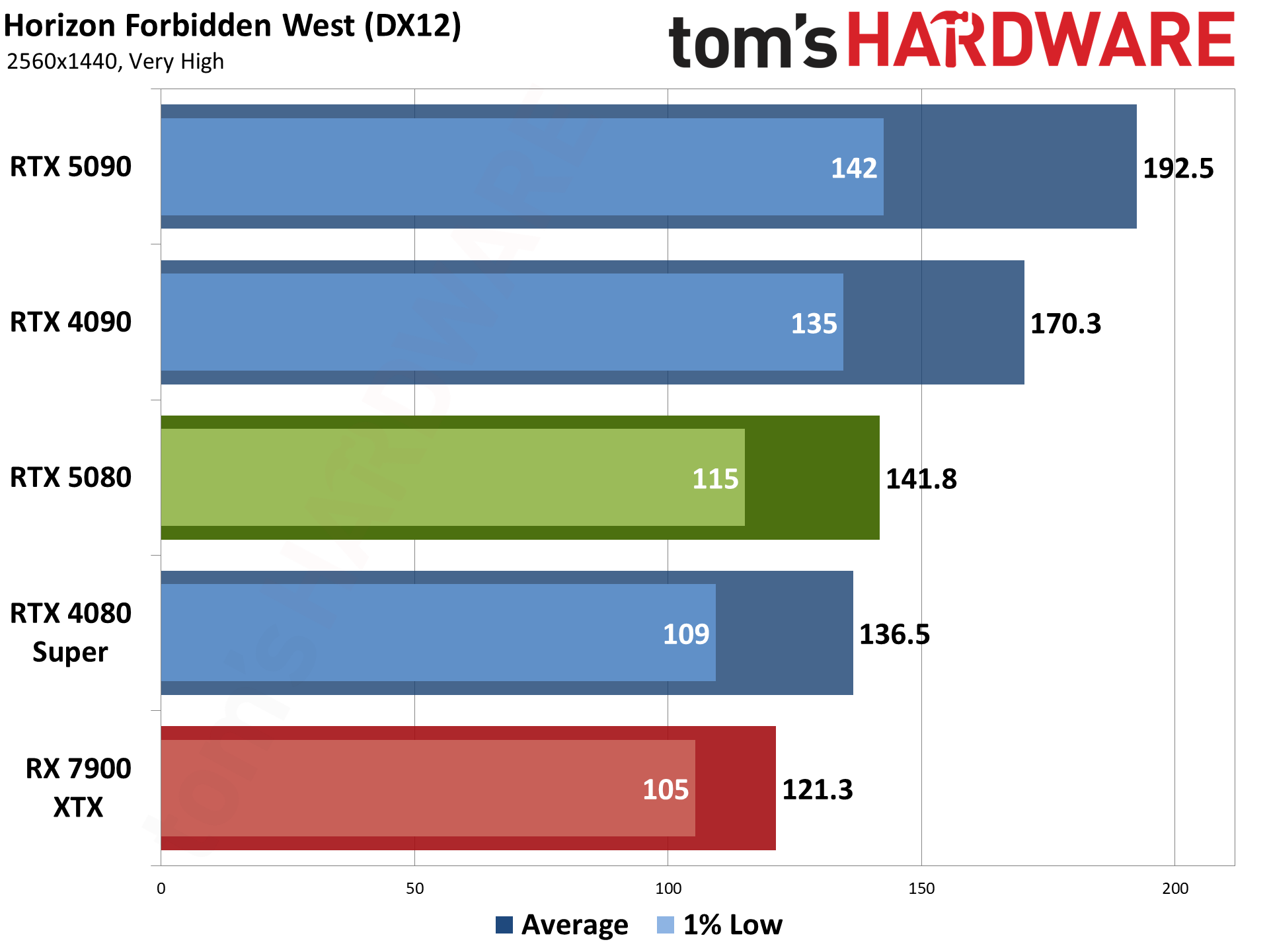
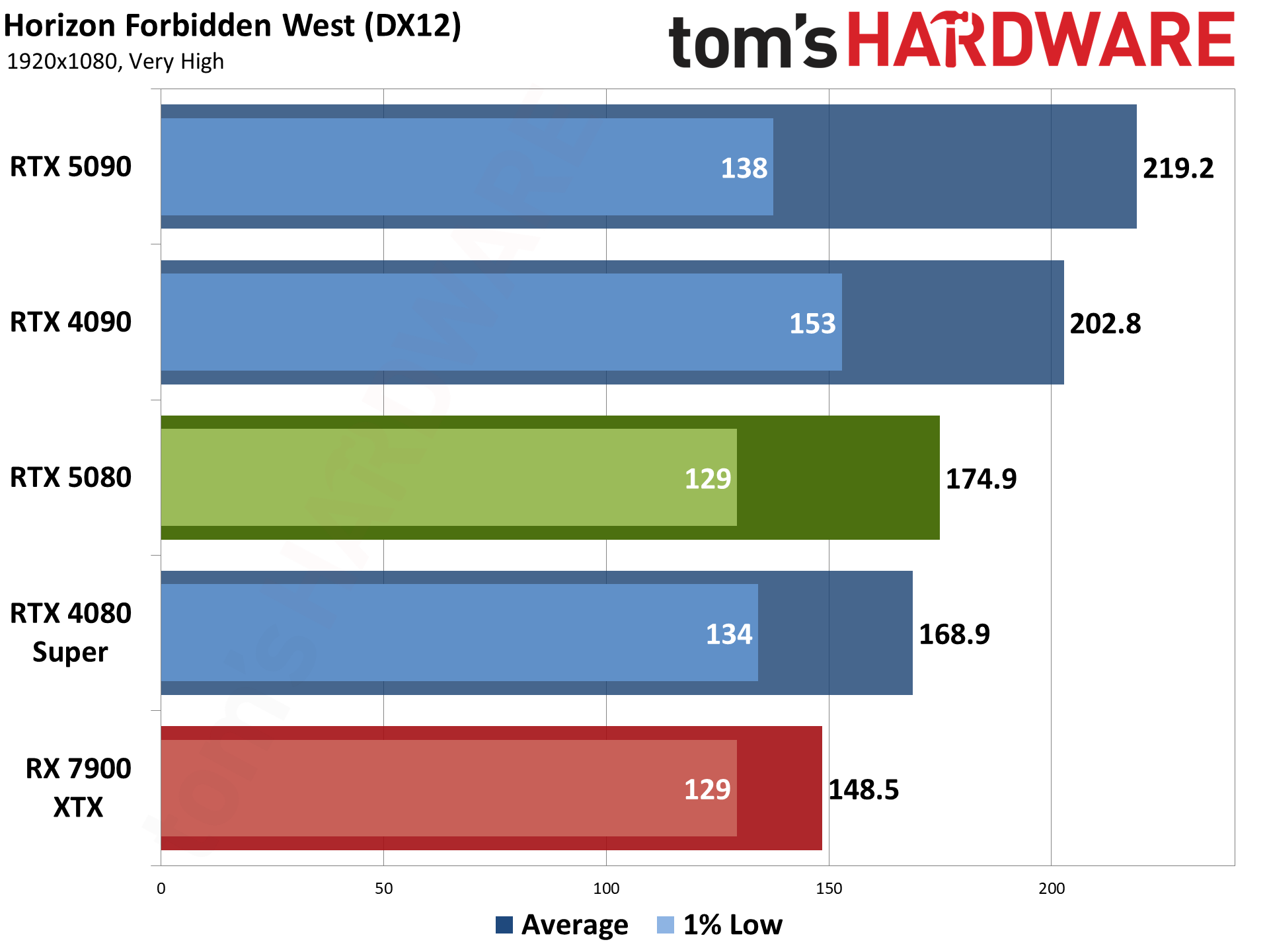

Horizon Forbidden West is another two years old PlayStation port, using the Decima engine. The graphics are good, though I've heard at least a few people think it looks worse than its predecessor — excessive blurriness being a key complaint. But after using Horizon Zero Dawn for a few years, it felt like a good time to replace it.
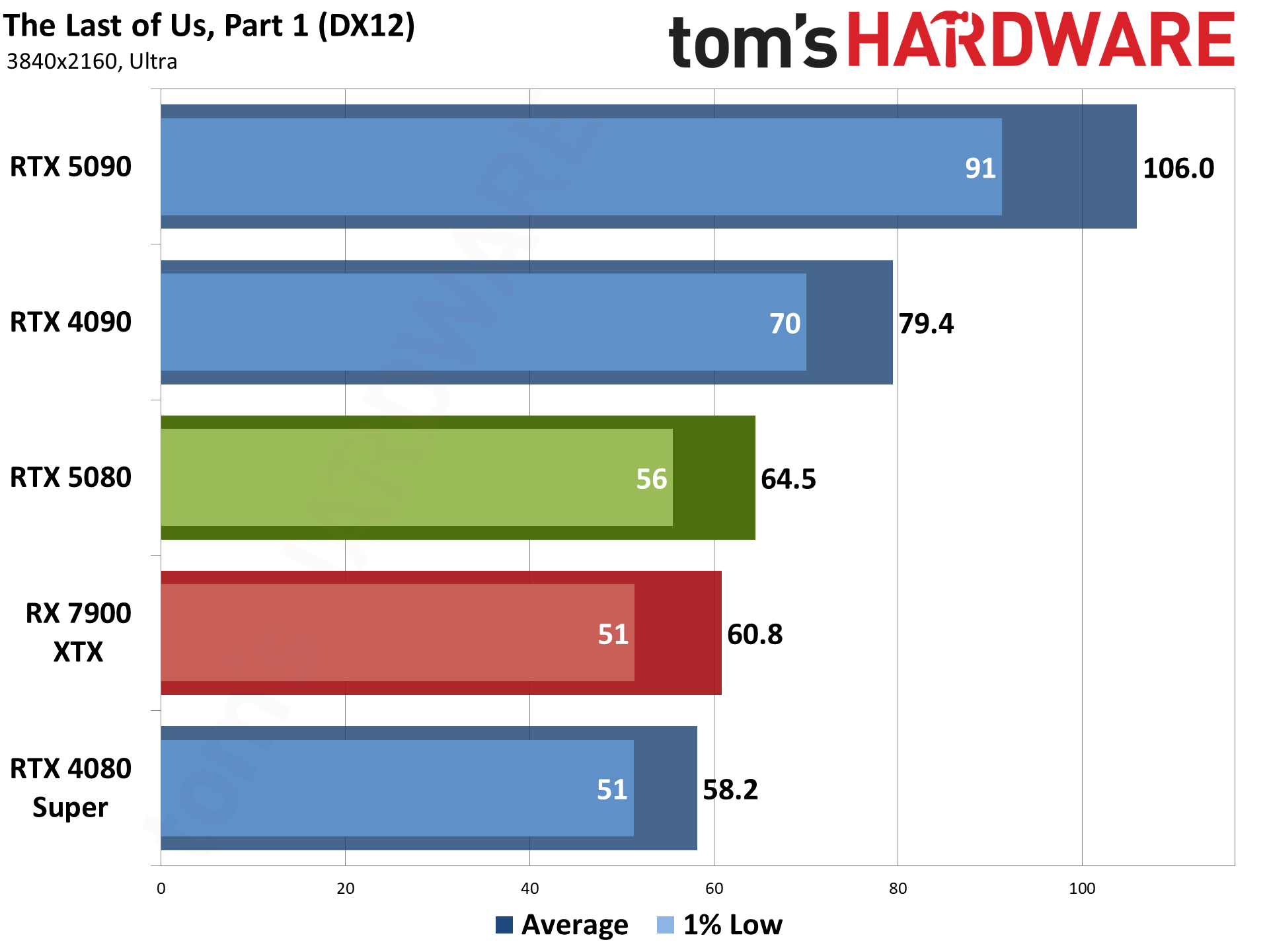
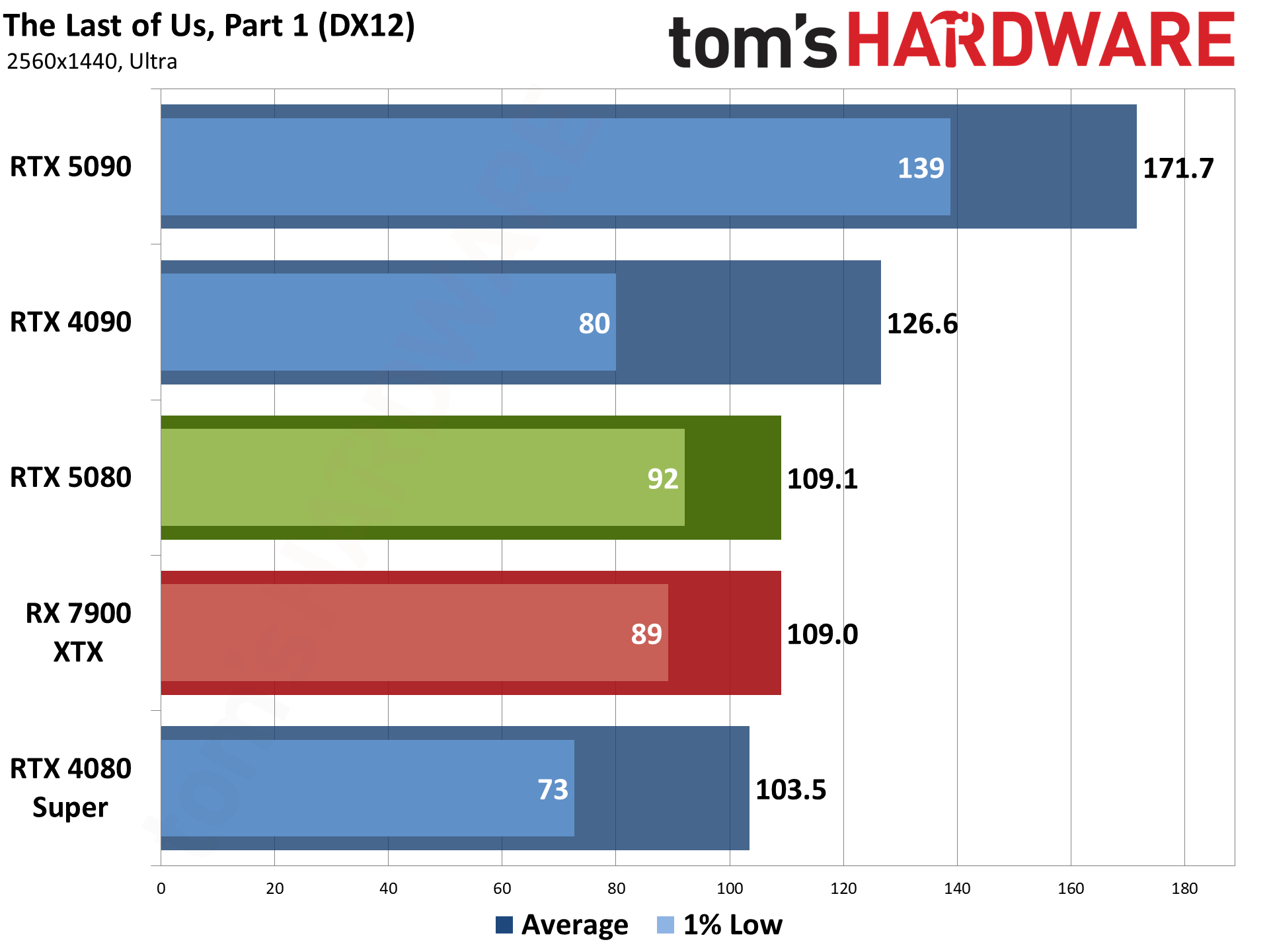
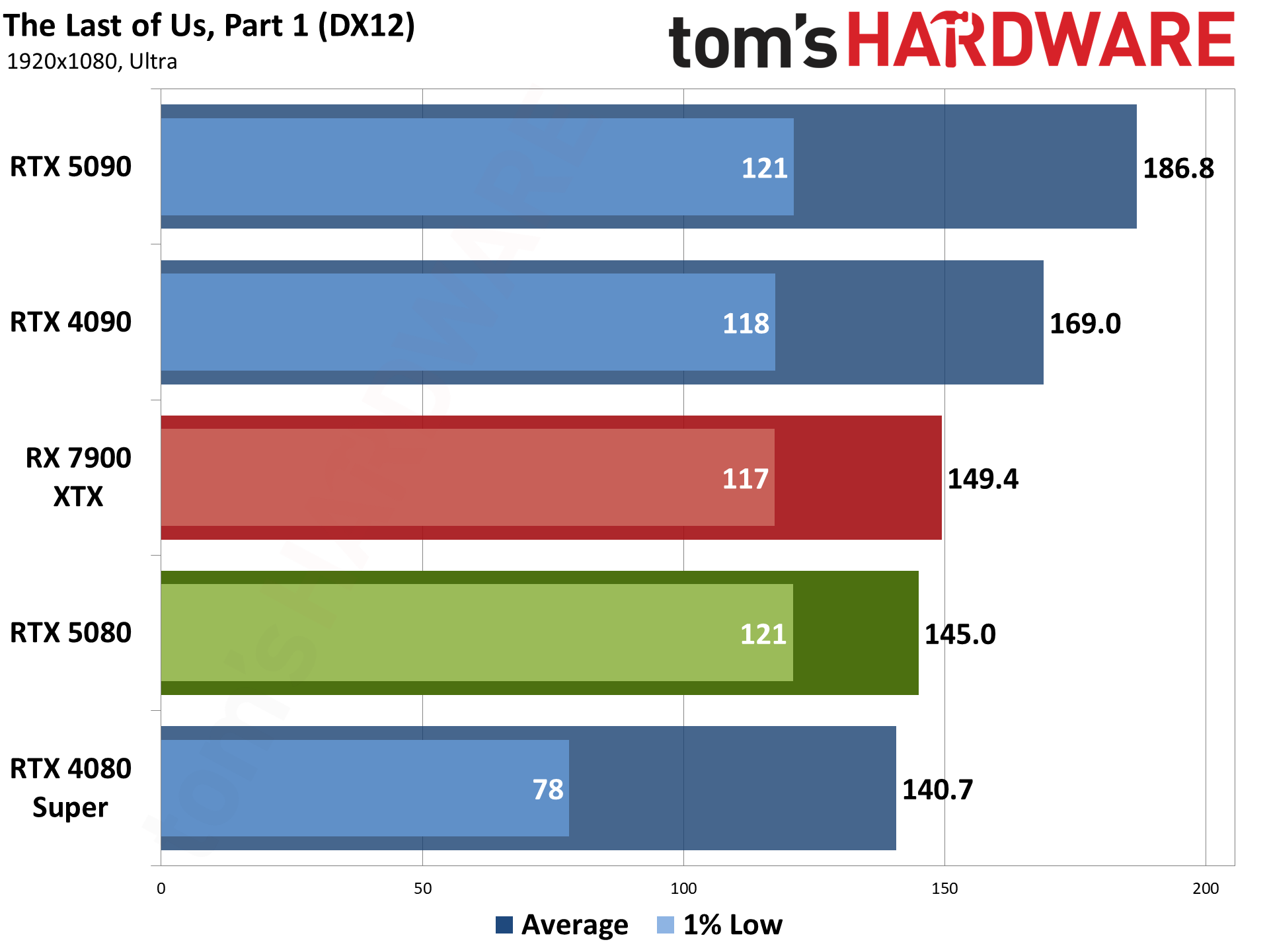
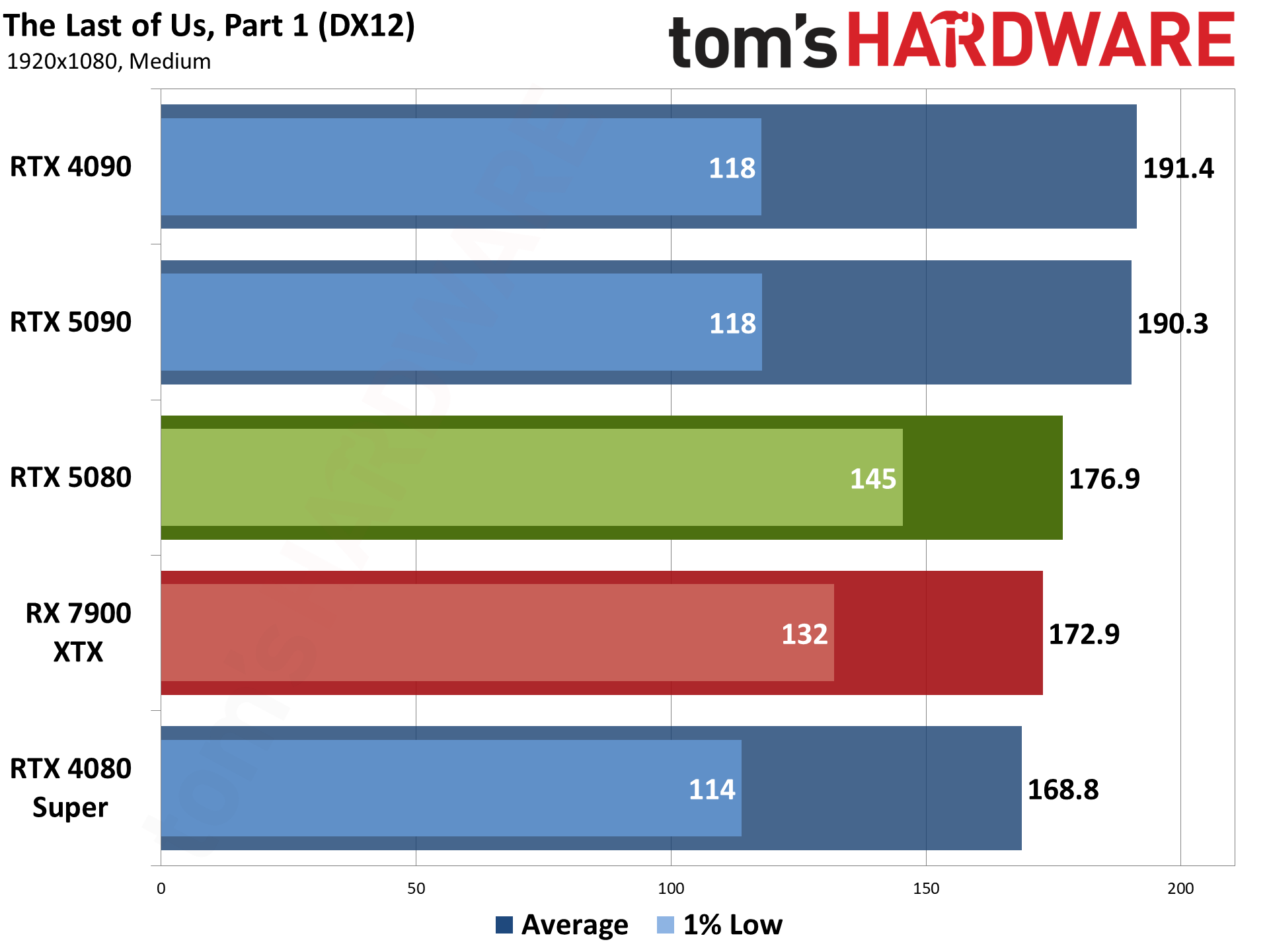
The Last of Us, Part 1 is another PlayStation port, though it's been out on PC for about 20 months now. It's also an AMD-promoted game and really hits the VRAM hard at higher-quality settings. Cards with 16GB or more memory do just fine, in general.
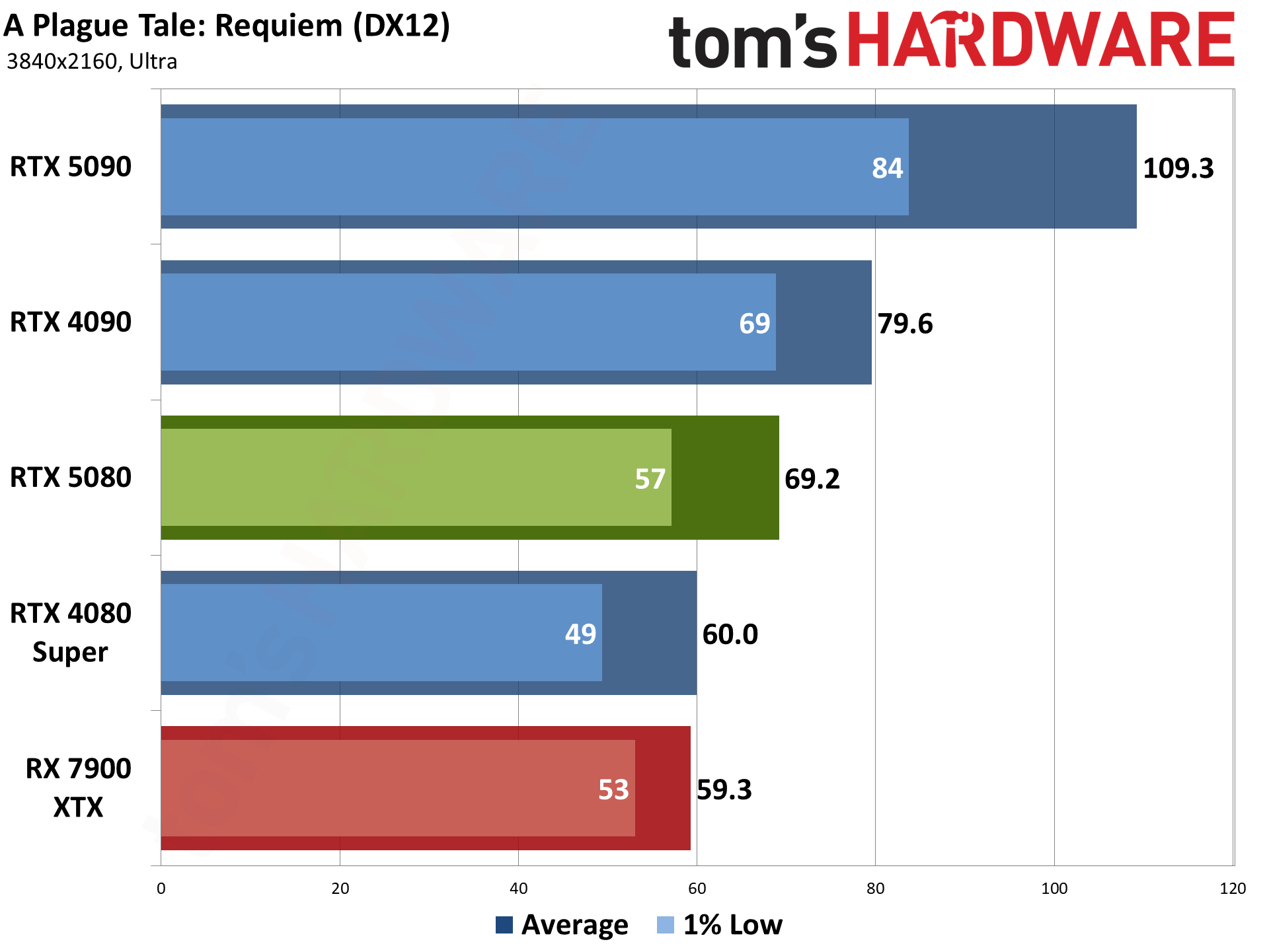

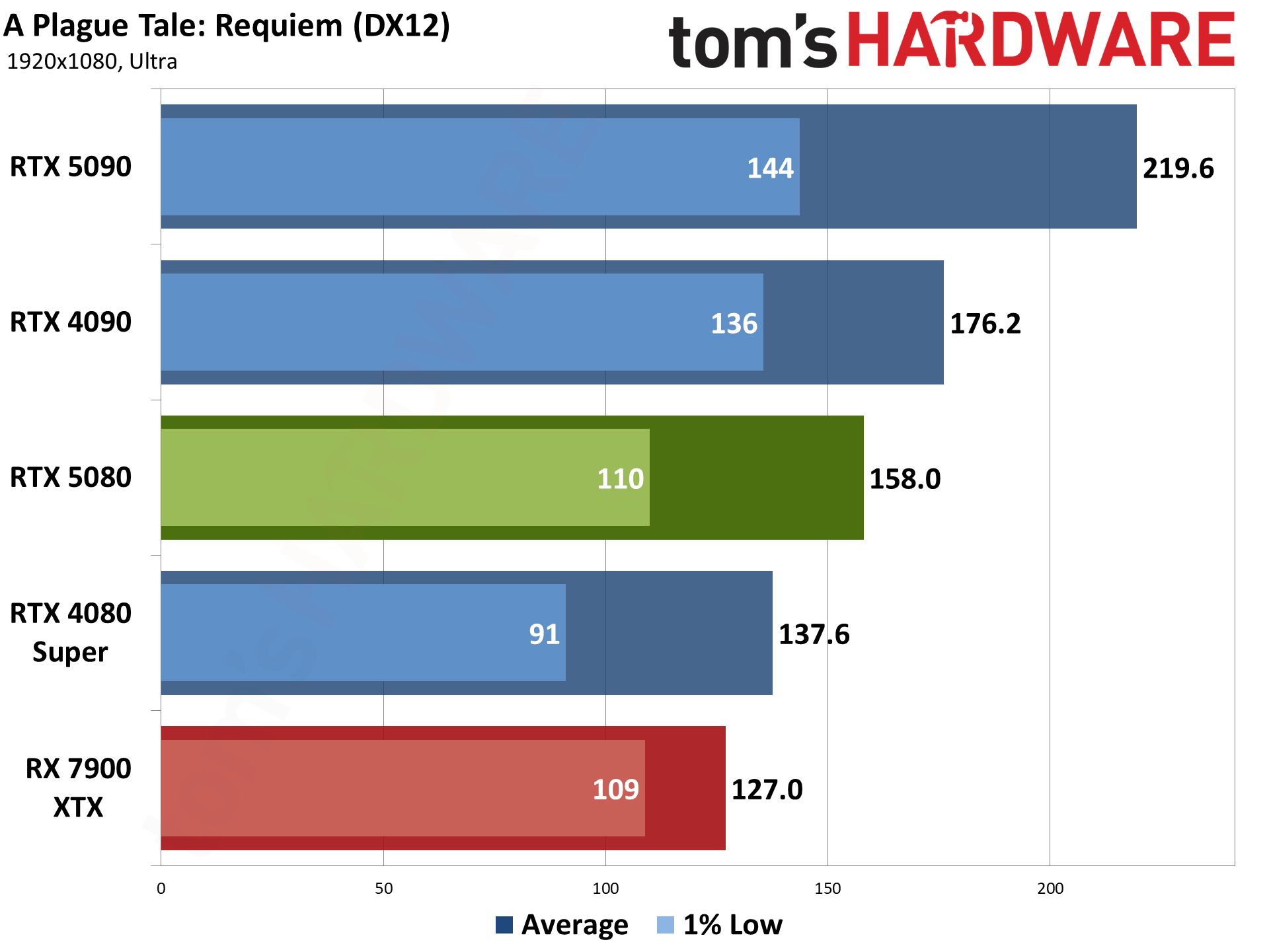
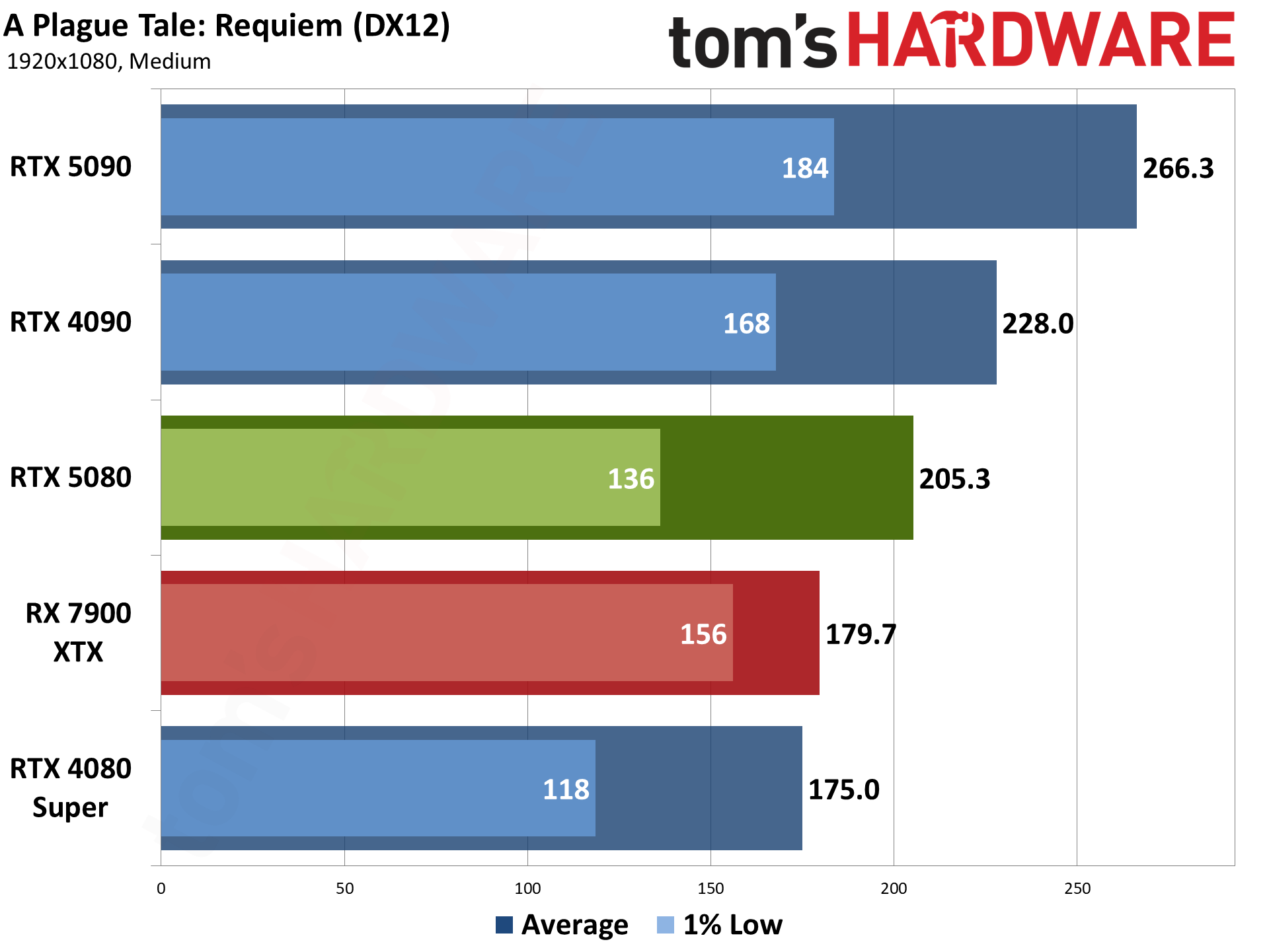
A Plague Tale: Requiem uses the Zouna engine and runs on the DirectX 12 API. It's an Nvidia-promoted game that supports DLSS 3, but neither FSR nor XeSS. (It was one of the first DLSS 3-enabled games as well.) It has RT effects, but only for shadows, so it doesn't really improve the look of the game and tanks performance.
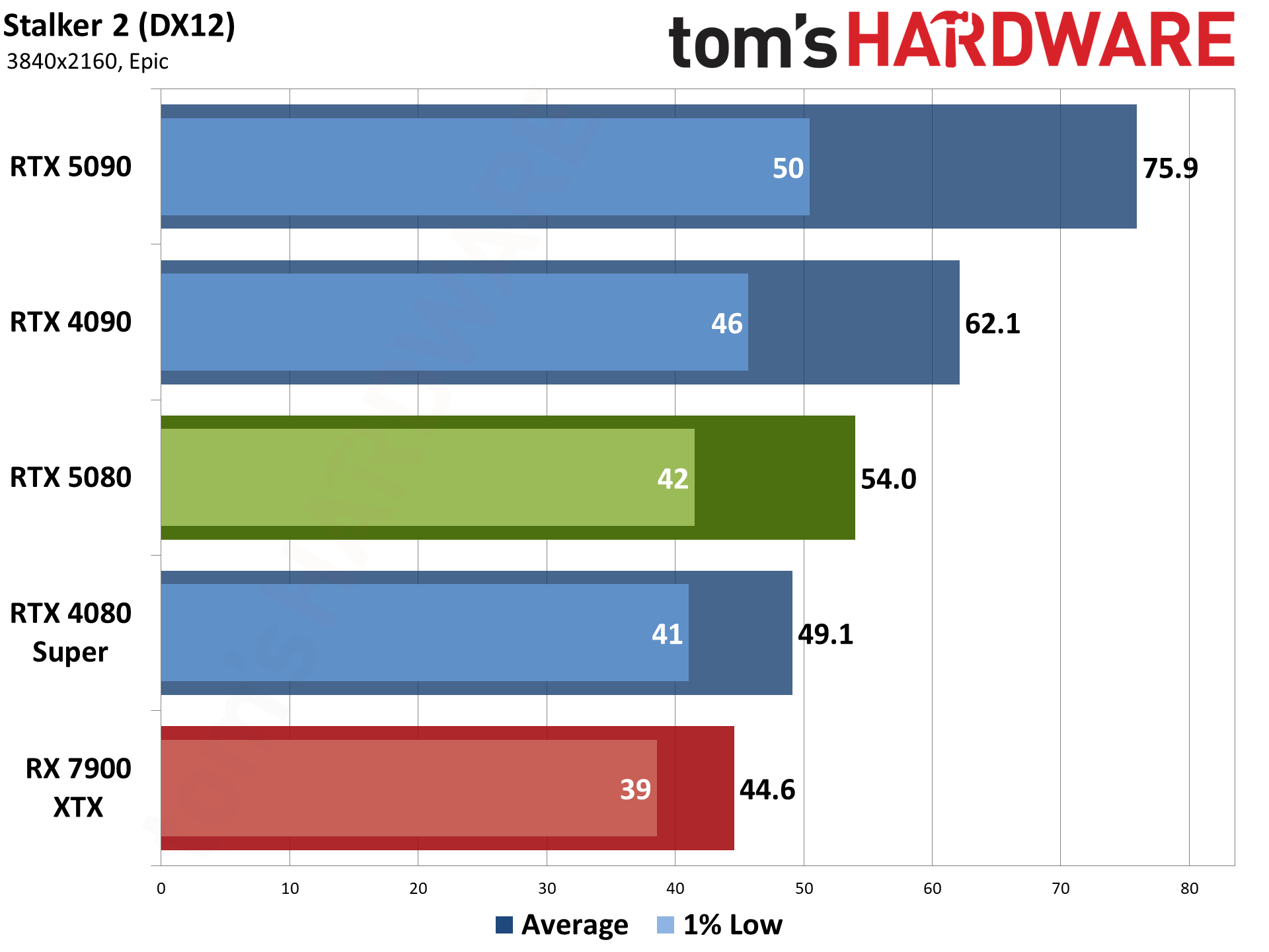
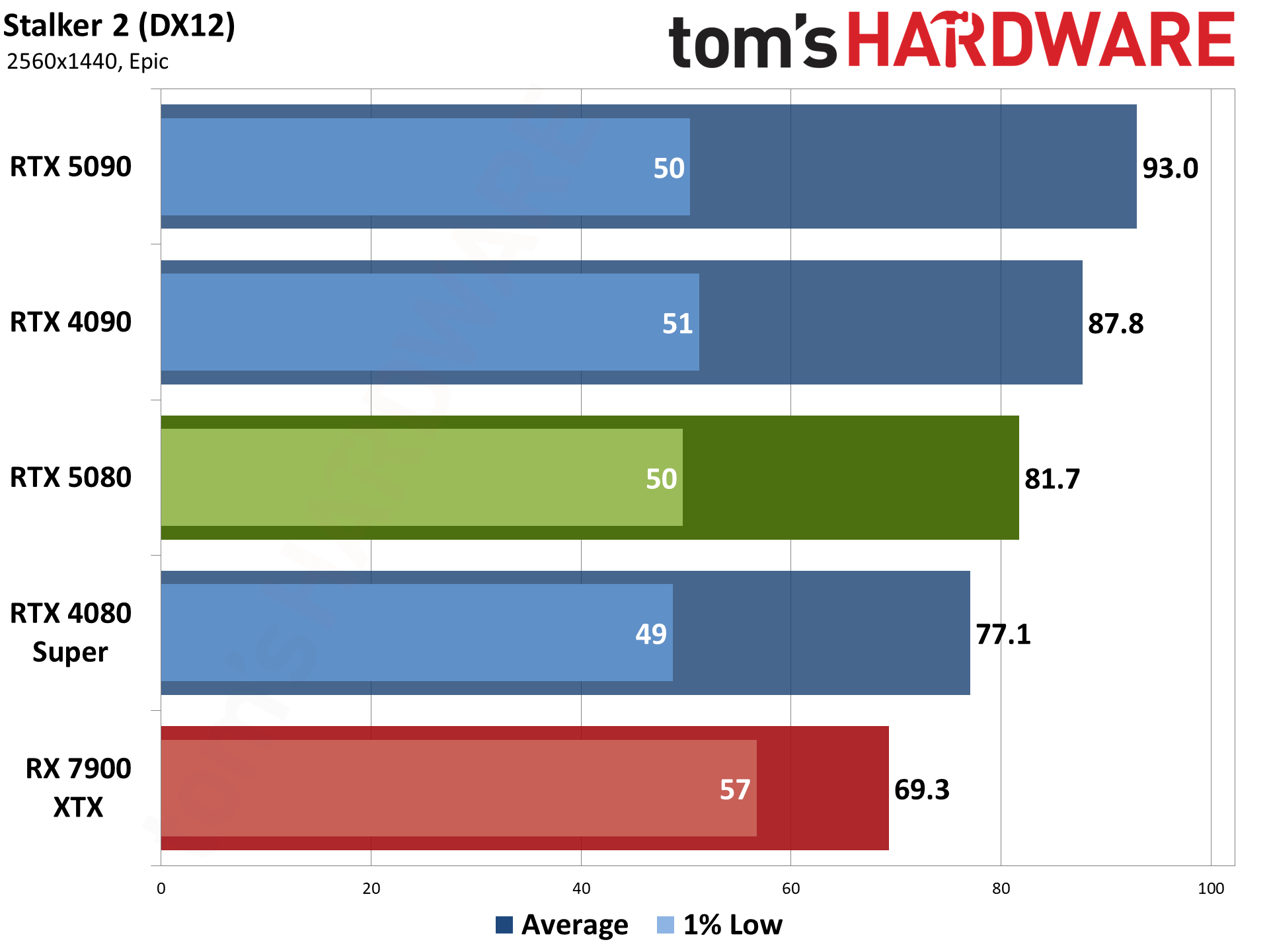
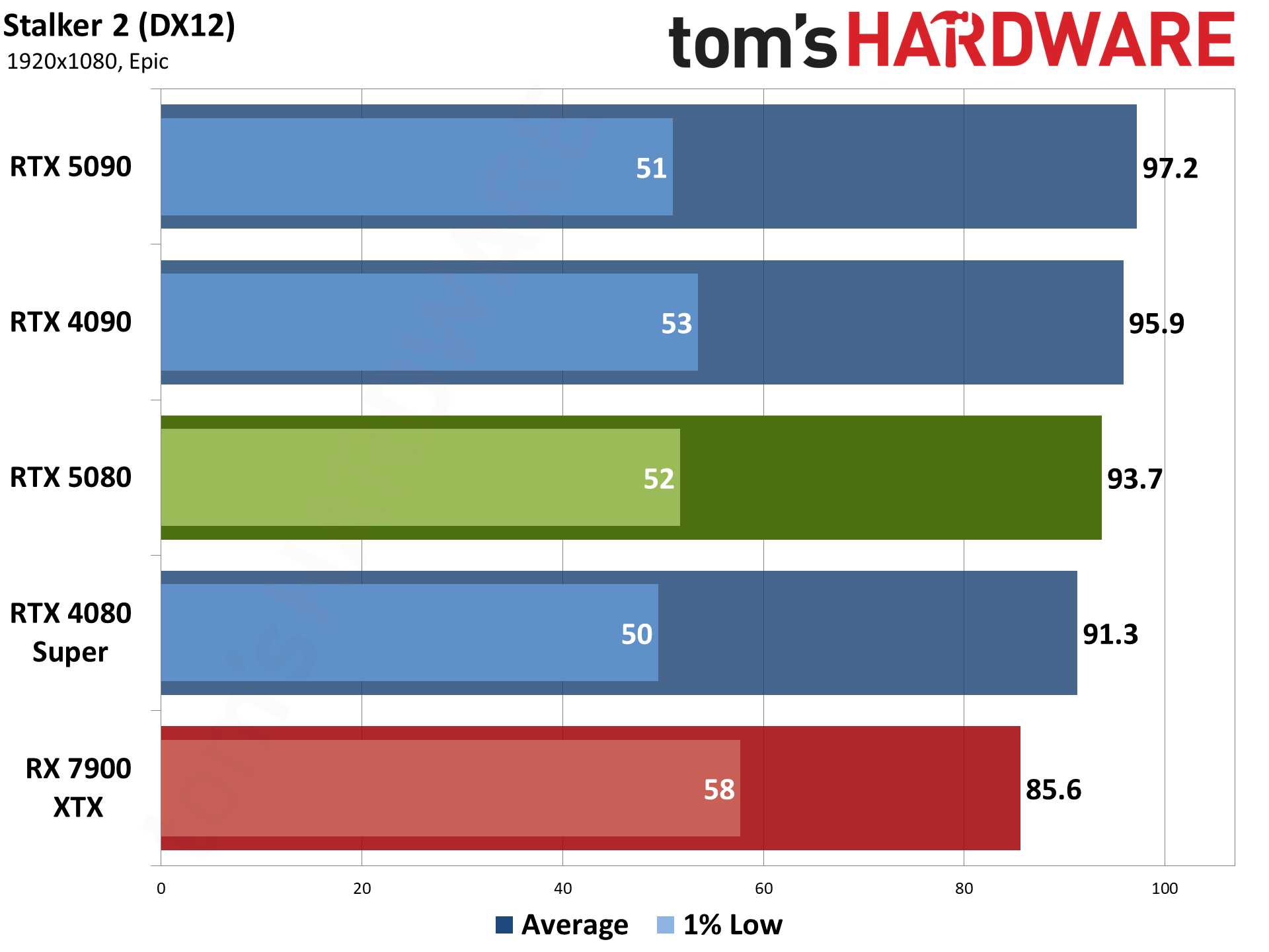
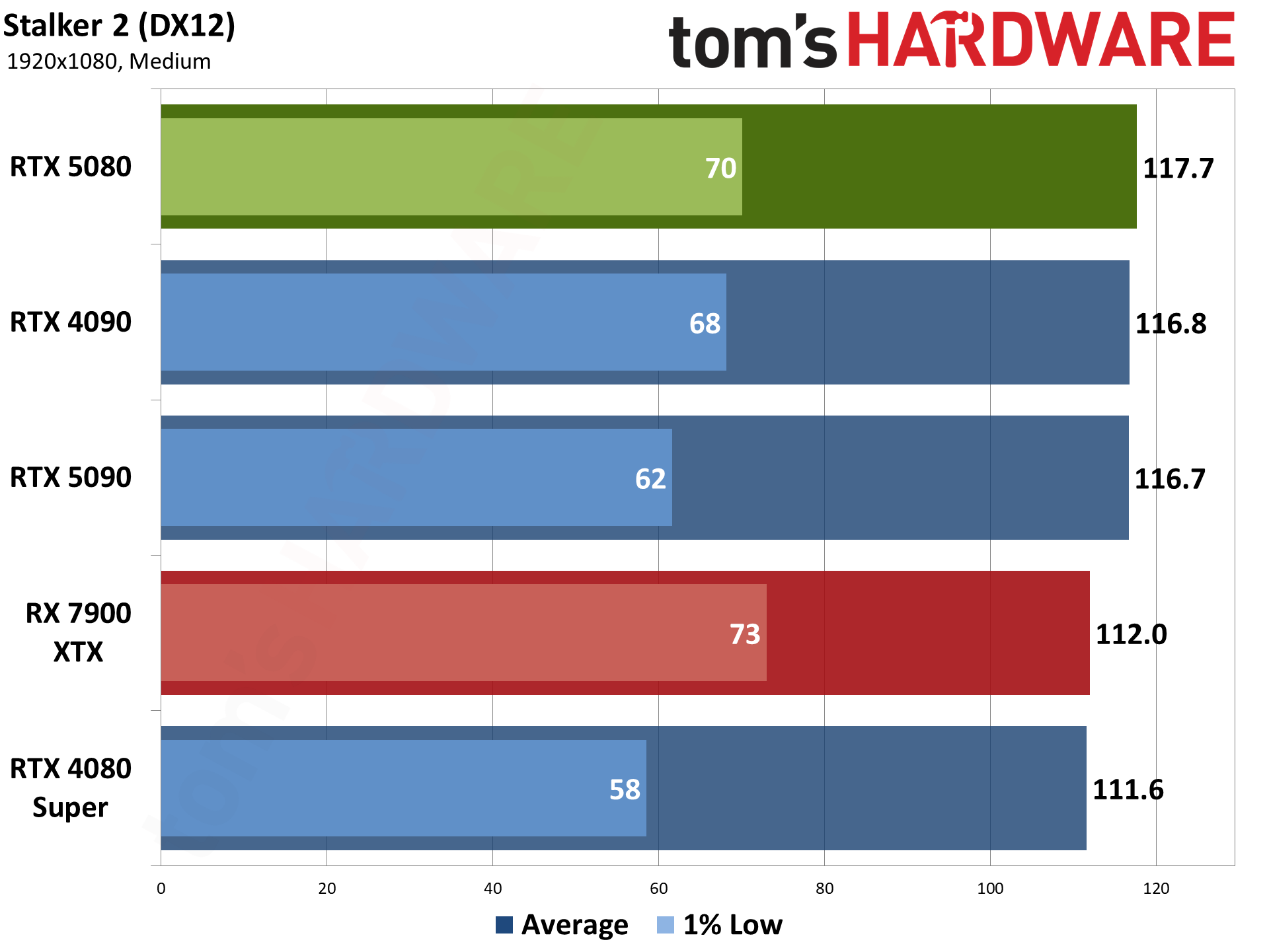
Stalker 2 is another Unreal Engine 5 game, but without any hardware ray tracing support — the Lumen engine also does "software RT" that's basically just fancy rasterization as far as the visuals are concerned, though it's still quite taxing. VRAM can also be a serious problem when trying to run the epic preset, with 8GB cards struggling at most resolutions.
CPU bottlenecks become quite prevalent in our 1080p testing, and even 1440p ultra looks pretty compressed. There's also quite a bit of microstuttering in Stalker 2, which framegen can help smooth out. (UE5 games tend to benefit more from framegen, in my experience, than some other games.)
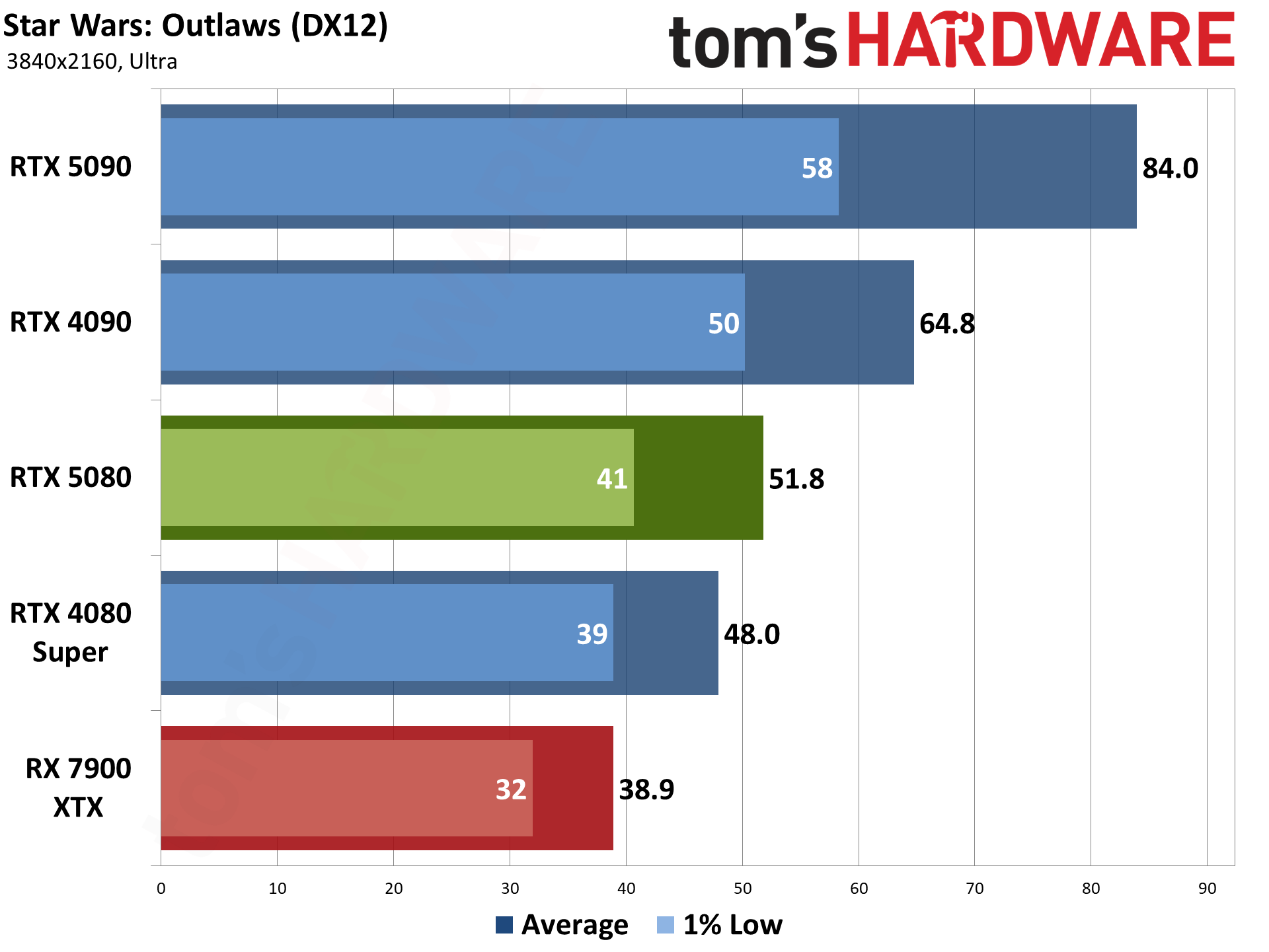
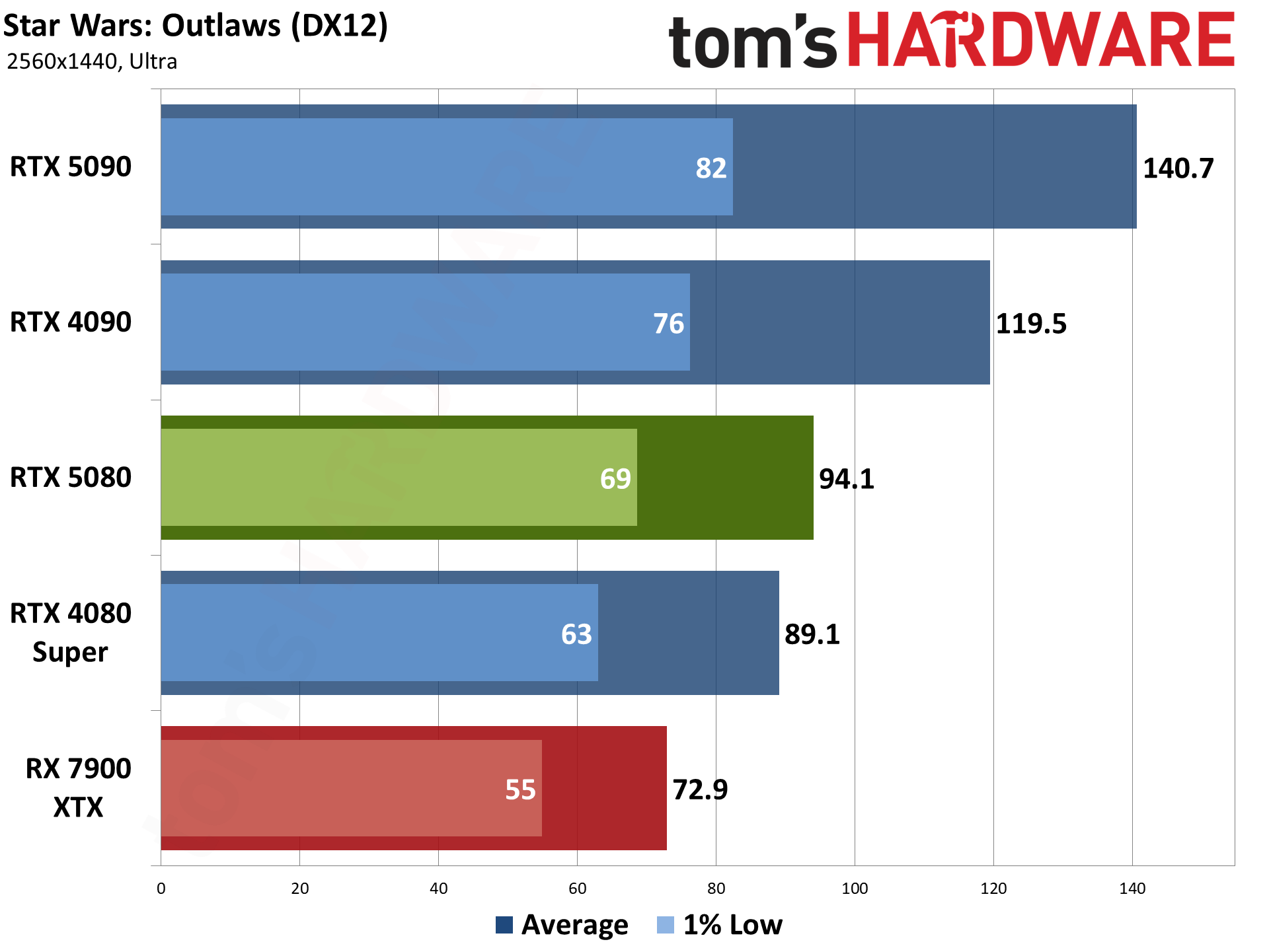
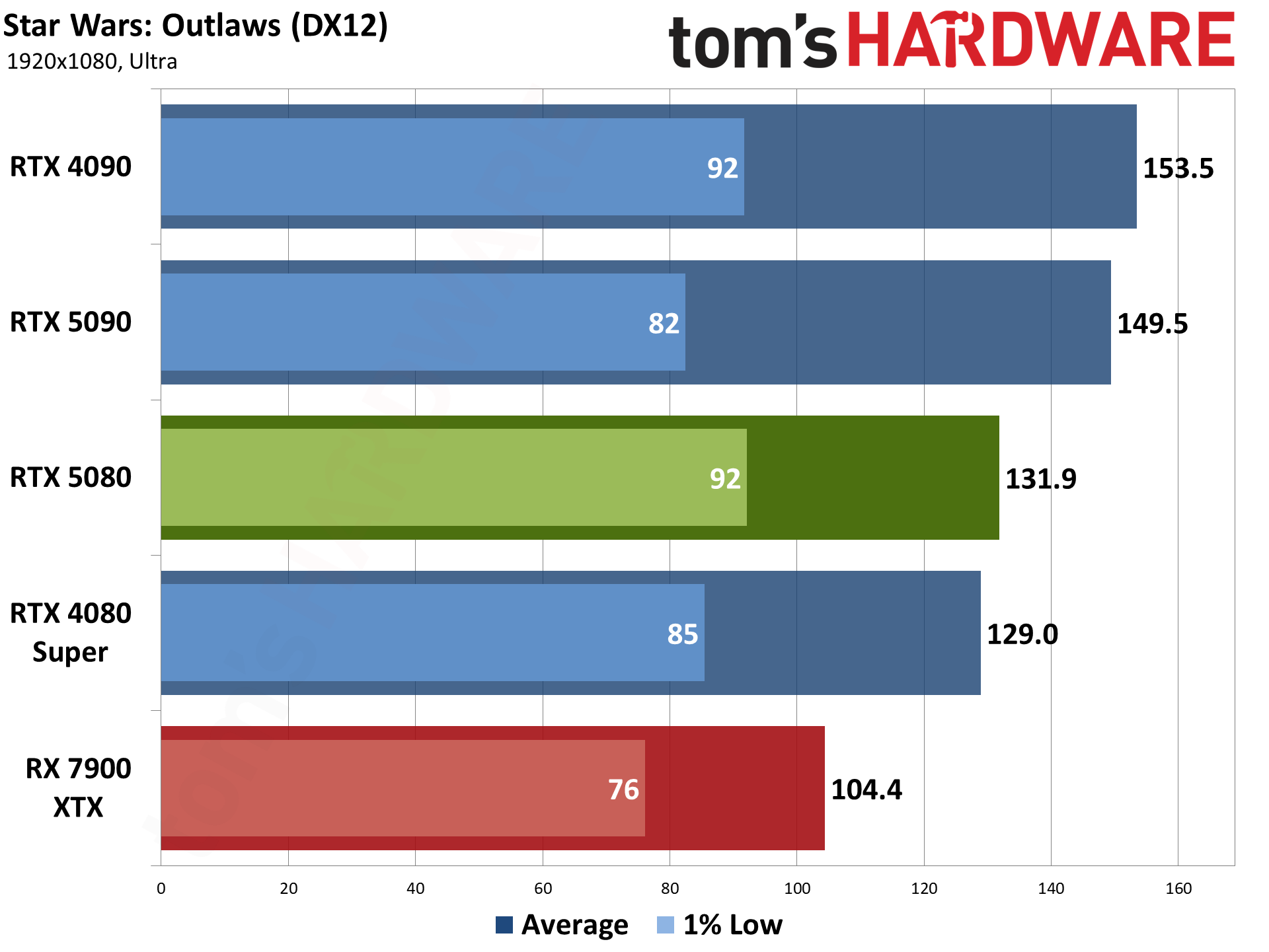
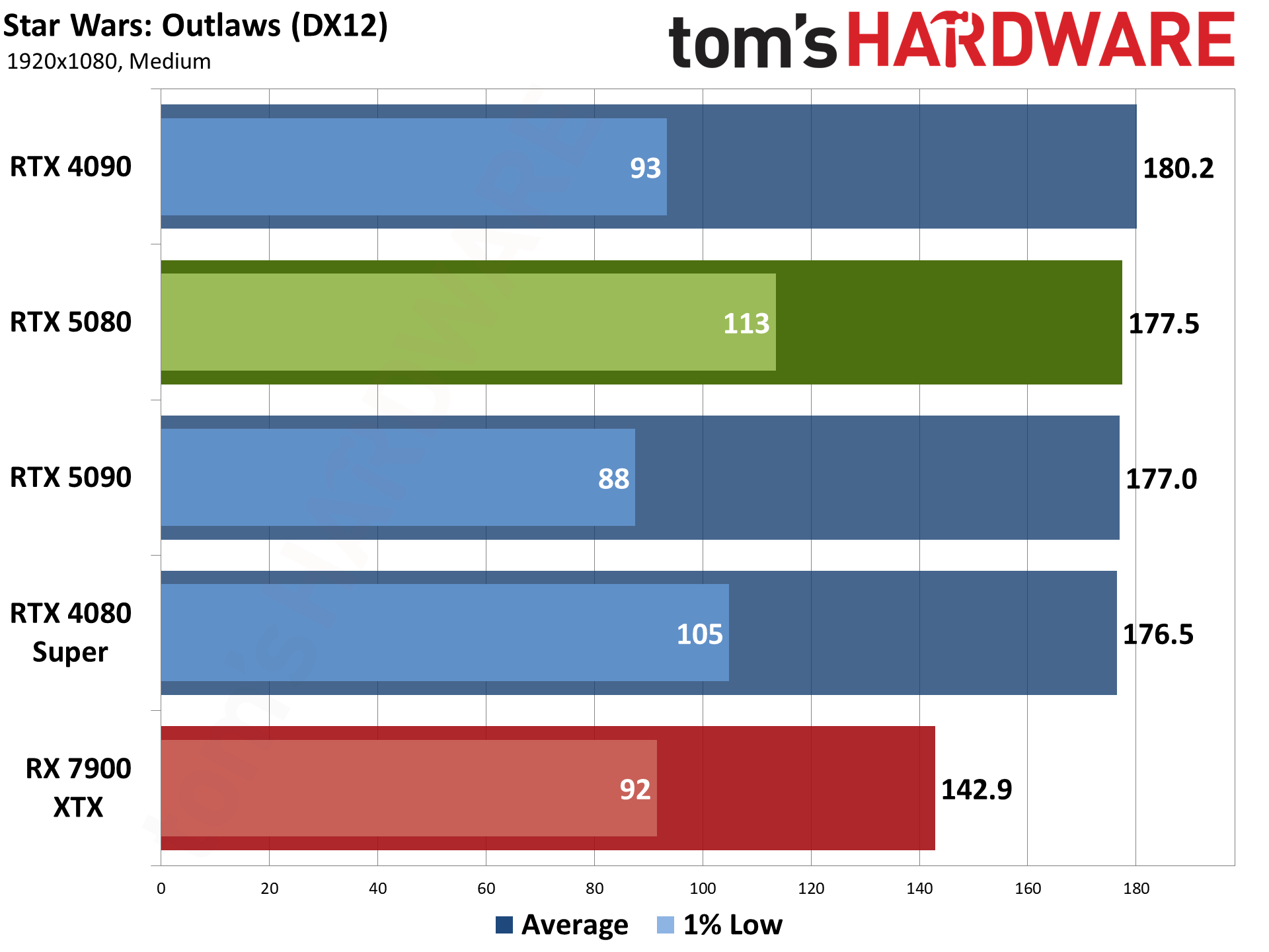
Star Wars Outlaws uses the Snowdrop engine, and we wanted to include a mix of options. It also has a bunch of RT options, though our baseline tests don't enable ray tracing.
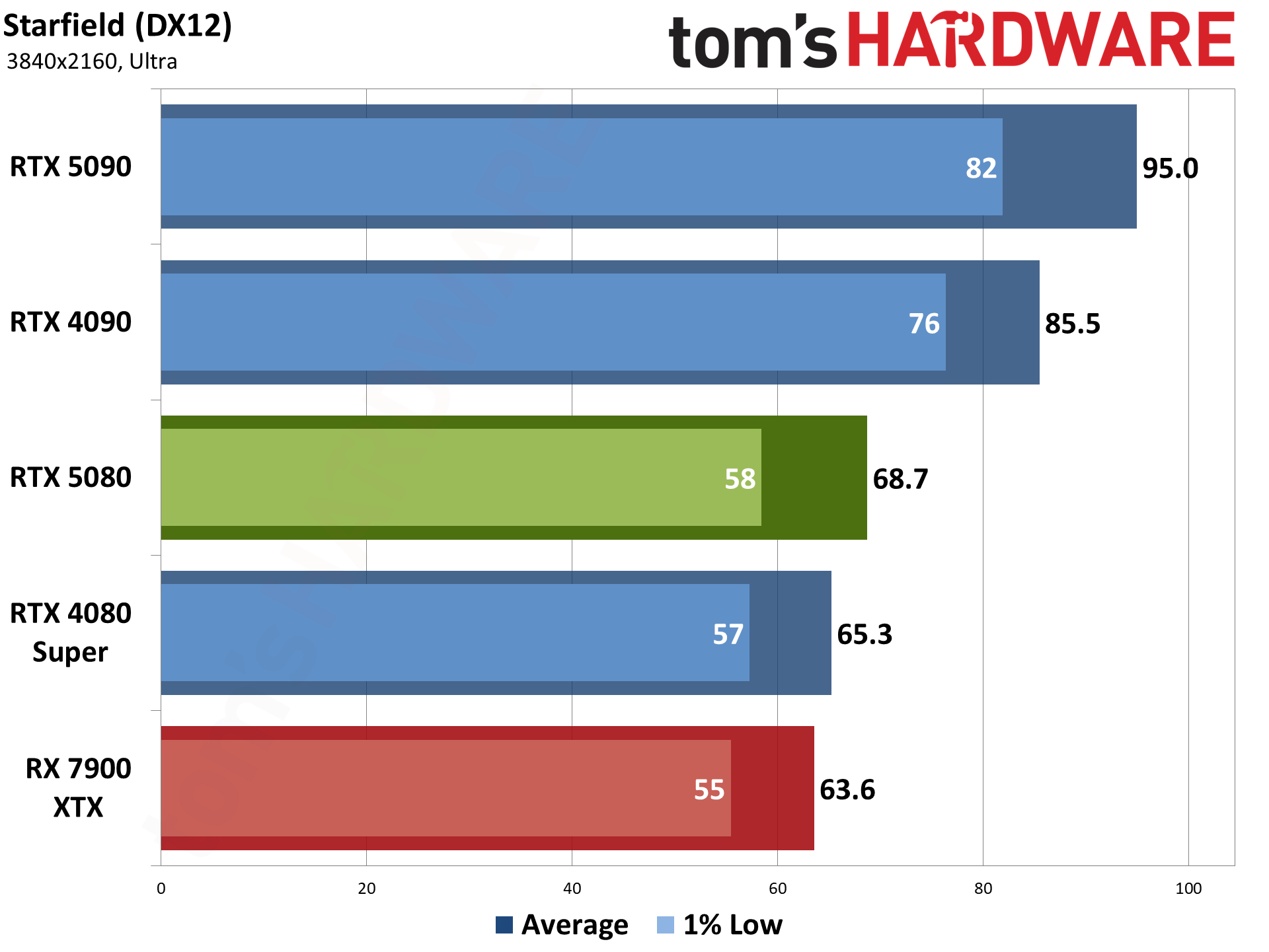
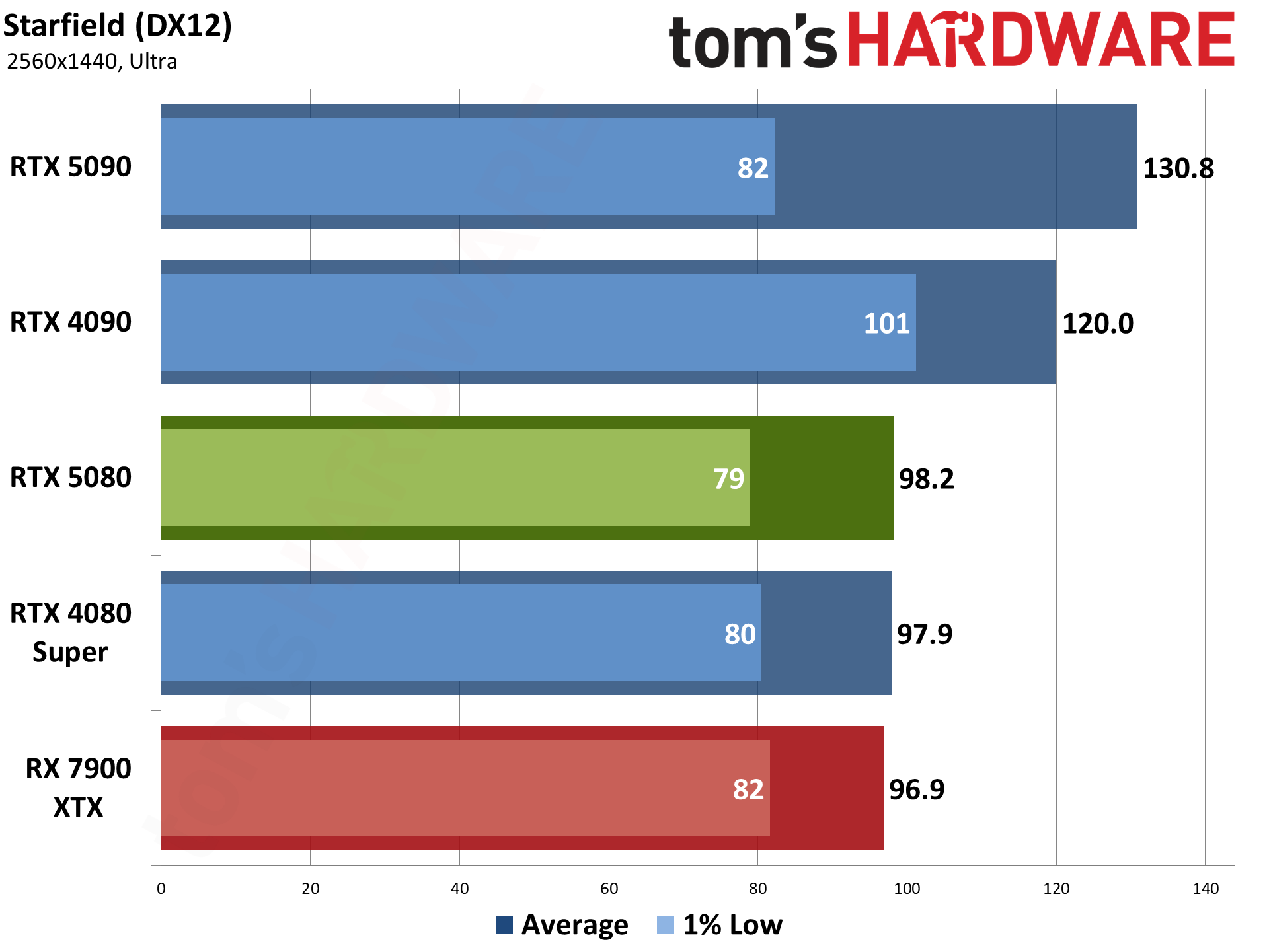
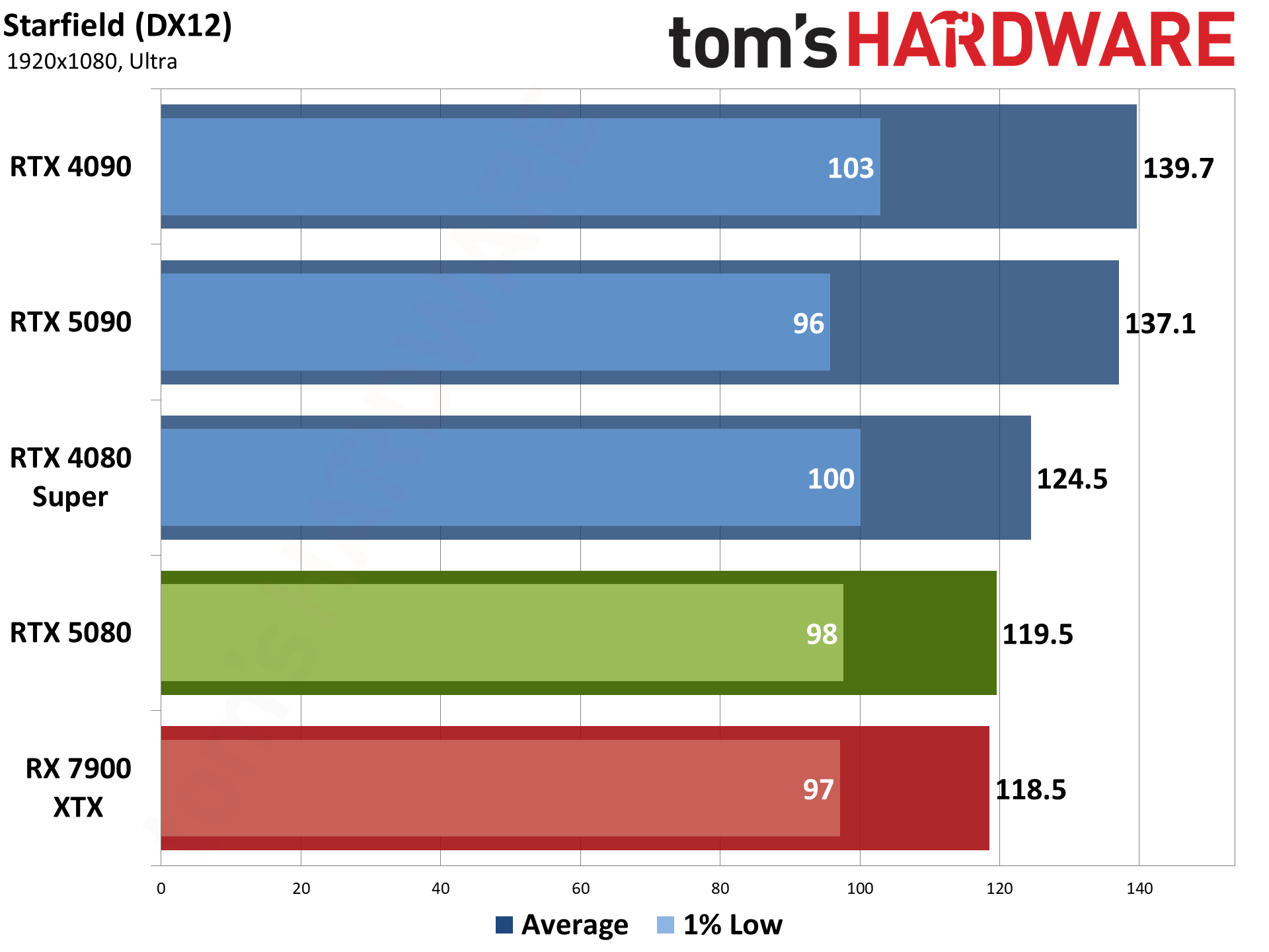

Starfield uses the Creation Engine 2, an updated engine from Bethesda, where the previous release powered the Fallout and Elder Scrolls games. It's another fairly demanding game, and we run around the city of Akila, one of the more taxing locations in the game.
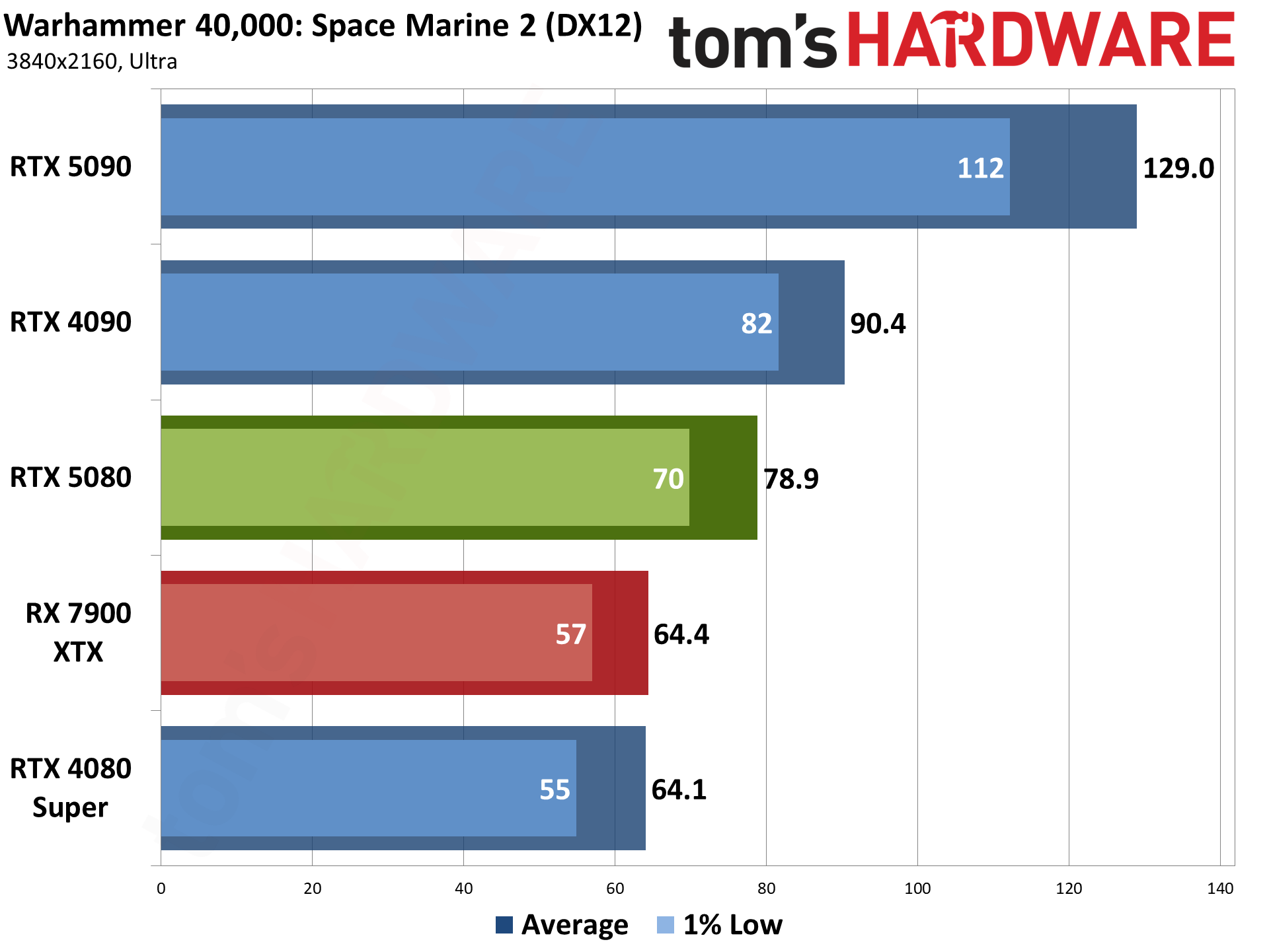
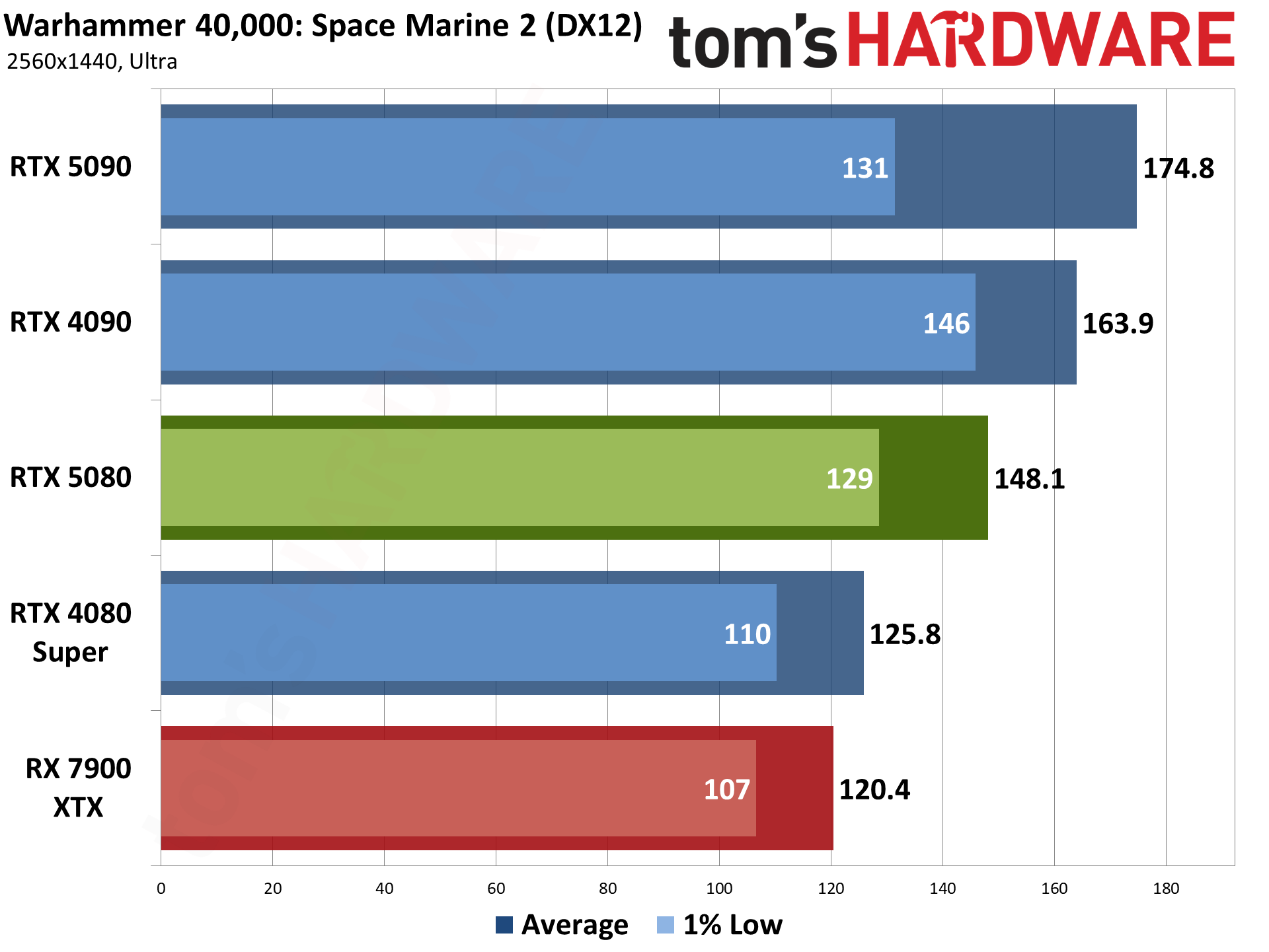

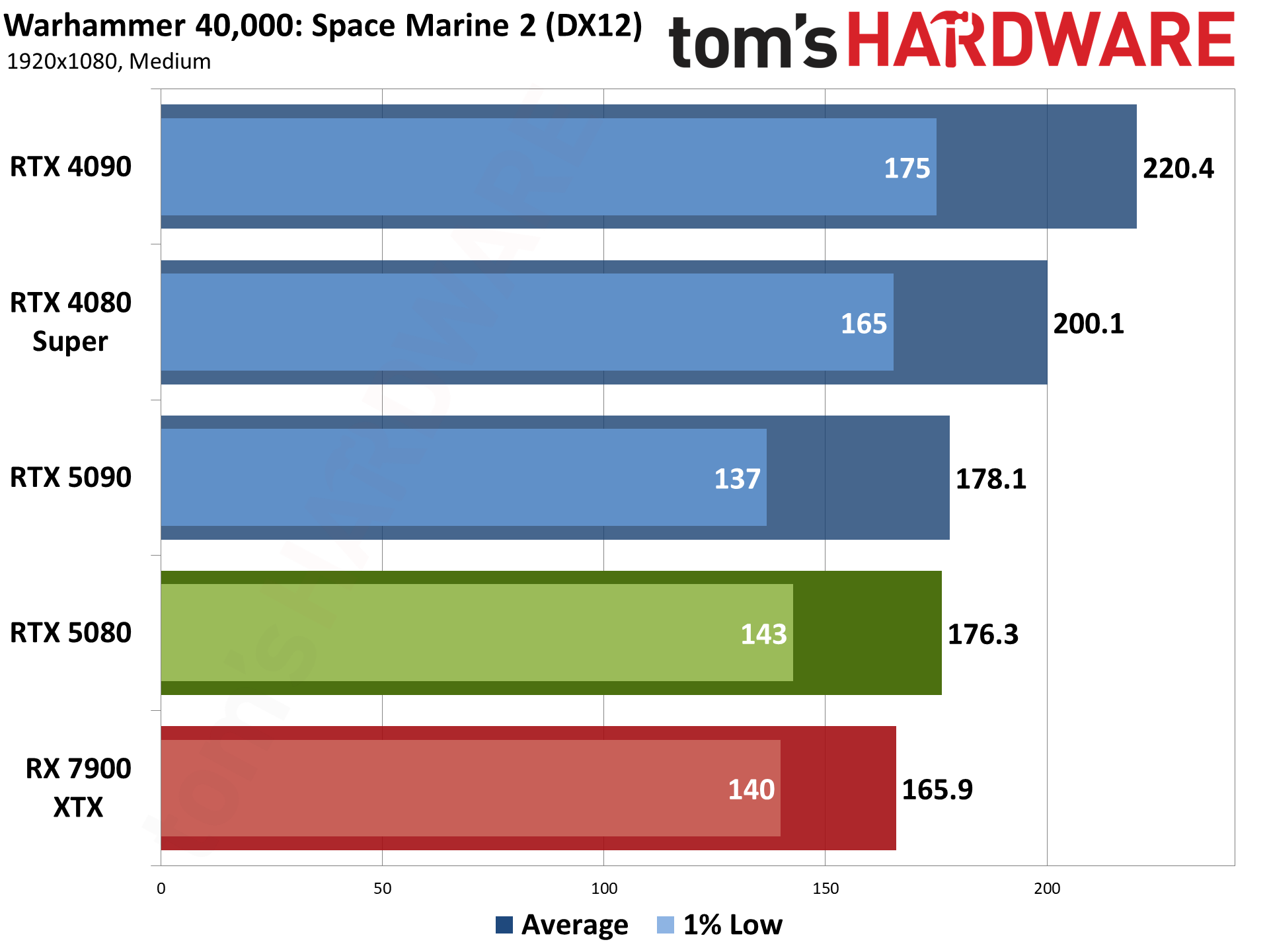
Wrapping things up, Warhammer 40,000: Space Marine 2 is yet another AMD-promoted game. It runs on the Swarm engine and uses DirectX 12, without any support for ray tracing hardware. We use a sequence from the introduction, which is generally less demanding than the various missions you get to later in the game but has the advantage of being repeatable and not having enemies everywhere.
The 4K results look about as expected, but the 1080p testing shows anomalies on the RTX 5090 and 5080. Nvidia probably didn't spend as much effort tuning for 1080p native on the Blackwell GPUs released so far.
- MORE: Best Graphics Cards
- MORE: GPU Benchmarks and Hierarchy
- MORE: All Graphics Content
Current page: Nvidia RTX 5080 Rasterization Gaming Performance
Prev Page Nvidia RTX 5080 Test Setup Next Page Nvidia RTX 5080 Ray Tracing Gaming Performance
Jarred Walton is a senior editor at Tom's Hardware focusing on everything GPU. He has been working as a tech journalist since 2004, writing for AnandTech, Maximum PC, and PC Gamer. From the first S3 Virge '3D decelerators' to today's GPUs, Jarred keeps up with all the latest graphics trends and is the one to ask about game performance.
-
cknobman Pretty darn dissapointing.Reply
Sit back and let the impatient suckers get fleeced.
I'll happily wait for March and see if AMD can offer something worth buying at $500. -
King_V I initially looked at the TDP numbers, and thought: a new architecture, slightly more than 10% extra power draw for slightly less than 10% extra performance, on average, for gaming.Reply
But, that it actually doesn't exceed the power consumption during use of the 4080 Super is nice to see.
Still, yeah, if you're in the market for a GPU with this performance, and if the price is the same, the 5080 is the way to go.
But, I feel like the odds are that, at least for a few months, the 5080 will cost more, and the 4080 Super prices MIGHT come down a little with the release of the 5000 series. If so, that situation could make the 5080 a hard sell. -
spongiemaster Reply
5090 is more than 50% faster than 5080 which is ridiculous. There's something to be said for trying to upsell, but that's way too big a gap in performance and cost between the 5080 and 5090. Also sounds like there are issues with volume production as well. Getting people to move up doesn't work if you don't have product to sell them. If you're in the market for a 5080, wait for the refresh. Will likely have more VRAM and will hopefully gain some meaningful ground in performance.Gururu said:It's so cheap though, $1000 less than the 5090. -
TCA_ChinChin How is "second fastest GPU" a positive? Its not even true, the 4090 is the second fastest GPU. This is the worst 80 series release by Nvidia for a while now. Im pretty sure the last 4-5 generations of 80 series cards have outperformed the previous generation flagship (except the 2080 vs 1080ti which was also a quite disappointing generation).Reply -
Elusive Ruse Thank you @JarredWaltonGPU for the detailed review and pointing out the flaws of this underwhelming product. The 80 class is officially dead? I wish you had the time to include the 3090 as well so we could see how 4080 performed against it and in turn highlight the fact that the 5080 doesn’t even come close to the 4090.Reply
I was in the market for a 5080 but my excitement died down gradually with the leaks about its specs over the past few months and with the reviews out I’m definitely not planning to throw €1200+ at it. -
spongiemaster Reply
5080 is 50% faster than the 3090 at 4k. So a decent upgrade for 3090 users for less money than they spent on their 3090 though there is a memory downgrade. Still would recommend waiting for the refresh.Elusive Ruse said:I wish you had the time to include the 3090 as well so we could see how 4080 performed against it and in turn highlight the fact that the 5080 doesn’t even come close to the 4090. -
I'm getting the impression that the reason behind 5080 being so disappointing, is Nvidia trying to funnel consumers into buying the extremely inflated 5090.Reply
